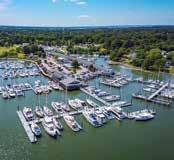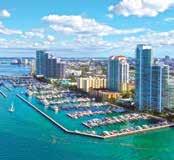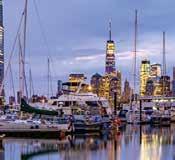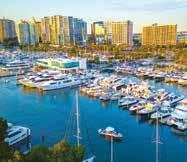Refit Industry Snapshot
Are captains being phased out?
BACKGROUND CHECKS — HOW GOOD ARE THEY?
Triton’s deep dive into how effective reference checks actually are
The World’s Toughest Row
A former bosun crossed the Atlantic Ocean — by rowboat


Are captains being phased out?
Triton’s deep dive into how effective reference checks actually are
A former bosun crossed the Atlantic Ocean — by rowboat

The newest refit tech, the biggest upgrades for crew, wild yard stories, and more!

“I want to thank Hinckley for another successful yard visit. It is a pleasure returning to Stuart over the past several years for service work. The team is always friendly and professional, and it is good to see familiar faces. My primary reasons for continuing to return to Hinckley in Stuart is there is no hard space fee if work is being performed, and project managemnt is handled by the Hinckley team. It’s nearly effortless.
— CAPTAIN, 70’ MARLOW

|
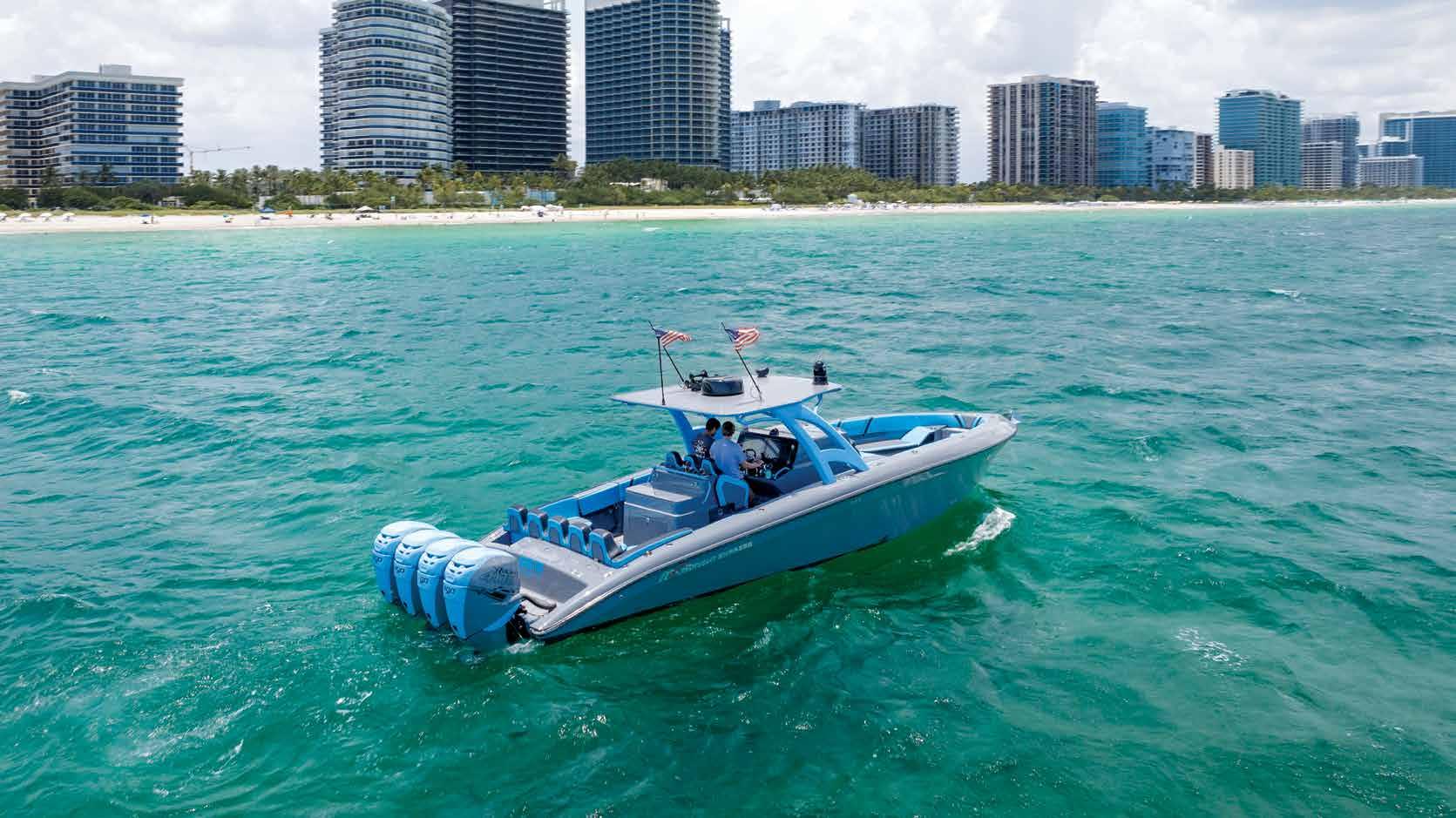

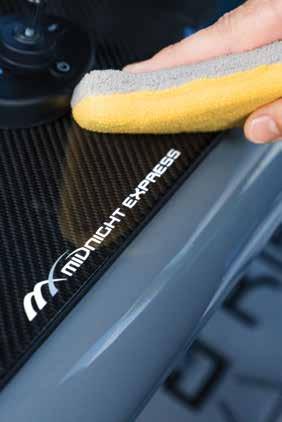
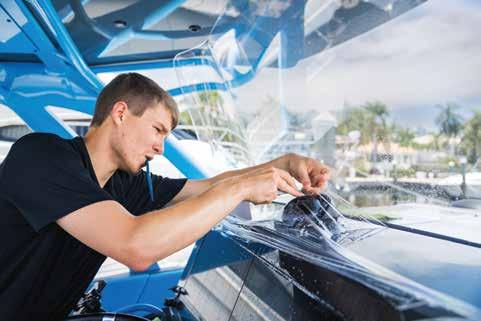
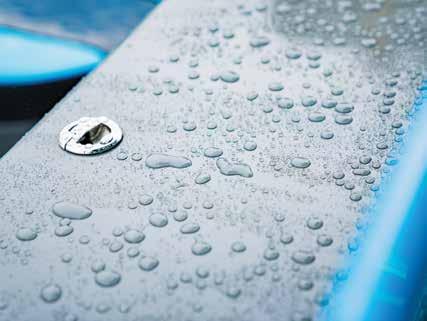





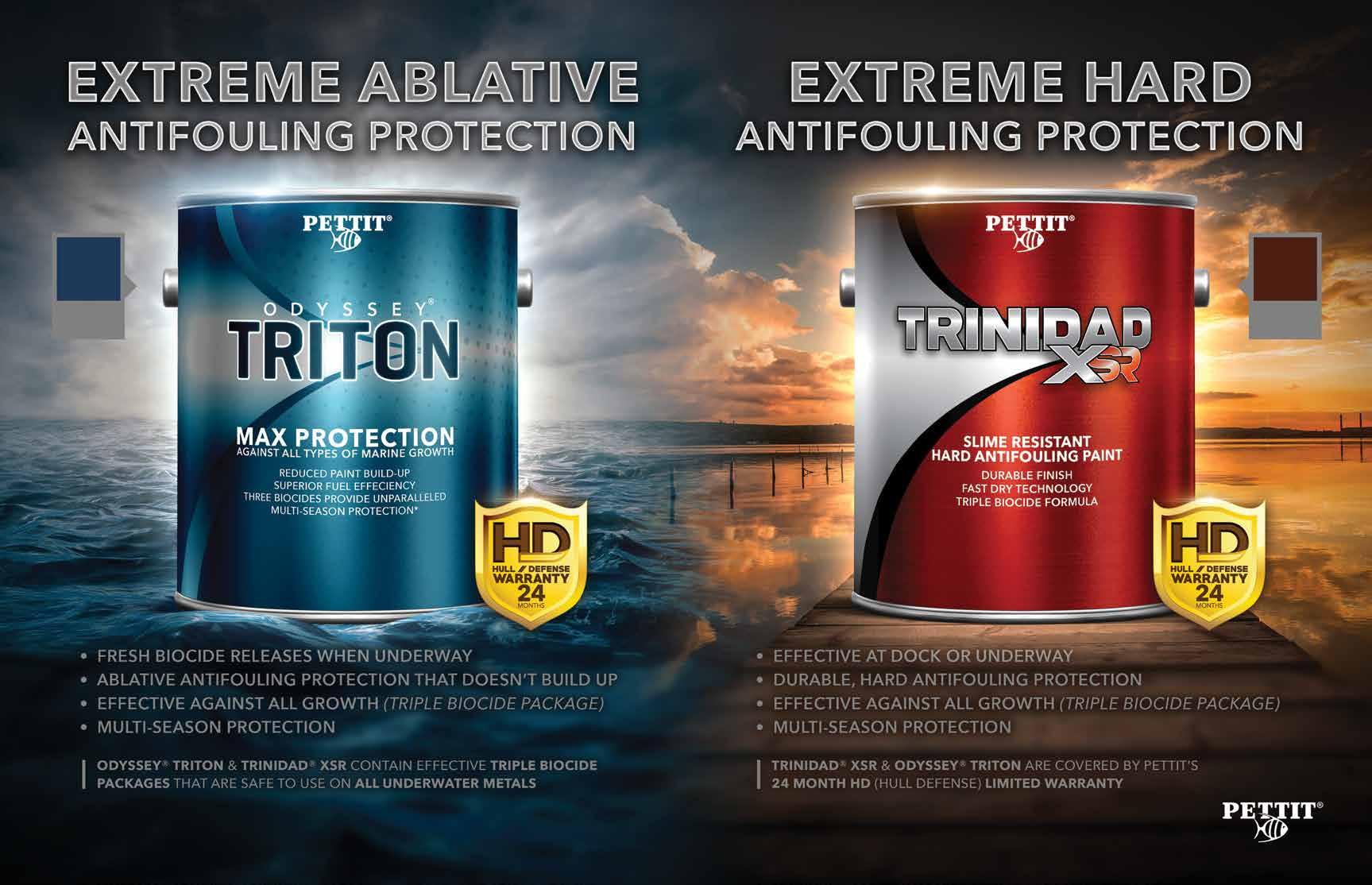








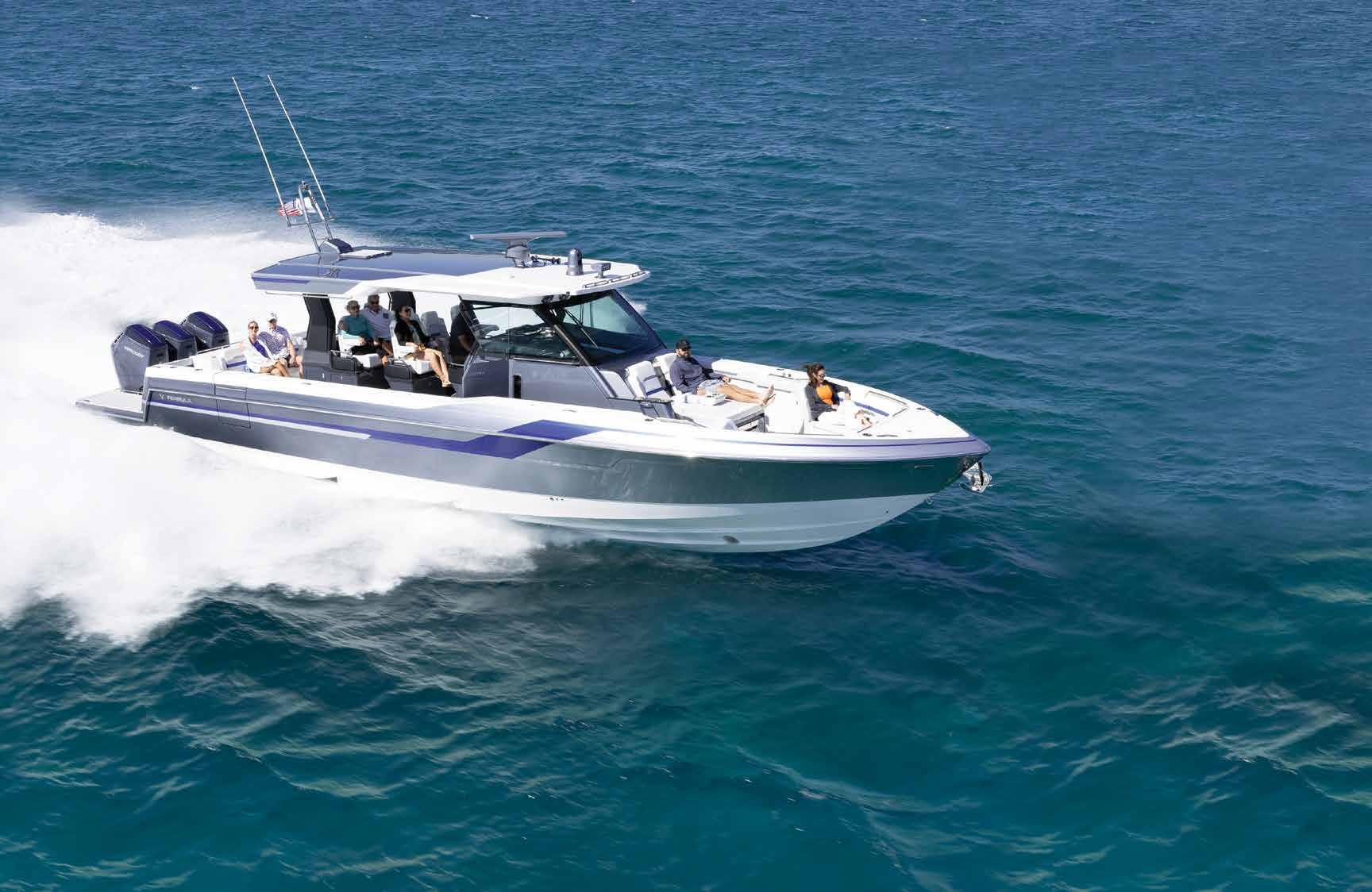
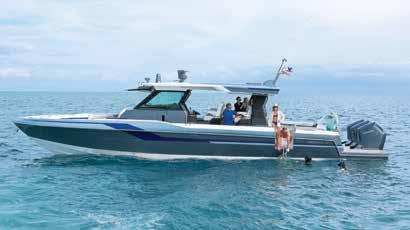



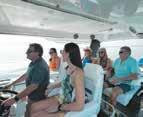
THE FORMULA 457 CENTER CONSOLE WILL BE YOUR OFFSHORE ADVENTURE DESTINATION!
Introduced at the Miami International Boat Show, the 457 Center Console Sport and Fish models will push the boundaries of design, engineering and construction in the offshore center console world, celebrating the finish and amenities of Formula’s renewed entry into the CC market.
The center console world – media, builders, and consumers alike – were stunned and impressed by Formula’s recent introduction of the 387 Center Console Sport and Fish models, executing the ultimate in performance, ergonomics and amenities in the center console market. Continuing the excitement, at 45’7” with a 13’9” beam, and powered by triple Mercury 600 Verados, the Formula 457 is impressing all comers. Built to your preference, from upscale sport cruising to hardcore fish, or a little of both, the 457 will match your boating style. Opt for a sculpted aft lounge and spacious swim platform for sporting adventures or foldaway aft seating and pressurized baitwells for a fishing battlewagon – we will build a boat to suit your wants and needs. You will love the twin or triple 22” monitor dash and air-conditioned three-
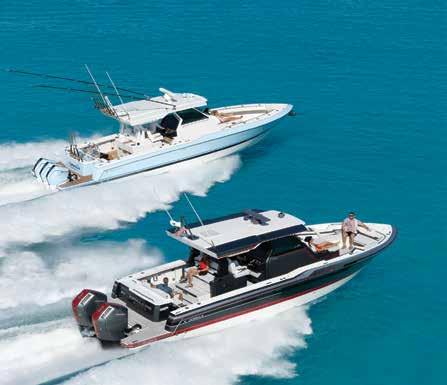
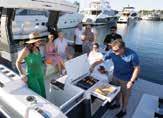
position helm. You can add AC to the second row and aft-facing seating for total crew comfort. Choose the entertainmentready cockpit galley or bait station/wetbar to your needs. And all will enjoy the highly styled bow seating with elevated sun lounge and wraparound seating with poweradjust table.
Below, the cabin brings you 6’6” of headroom with a full aircraft galley with microwave, fridge, sink and abundant counter and cabinet space, as well as U-lounge seating with a table for dining or entertaining, convertible to a two-person berth. A well-appointed, spacious head features a separate, stand-up shower.
Visit formulaboats.com to learn more about this elite gamechanger. Then, contact us to make plans to climb aboard the first 457. You will love what you see – we can’t wait to impress you.


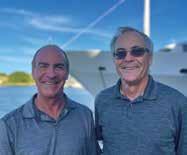
We’re not talking about actual fires on bridges; we’re talking about people bridges. Neither one should be burned!
Not everyone gets along with everyone, and that’s okay. If everyone were alike, humanity would be boring and likely wouldn’t survive. We are all different. We don’t have the same opinions, and we don’t have the same personalities.
But what happens when the people you work with just don’t click with you? What happens when you don’t get along? Maybe you fight? Maybe you ignore them? Or maybe you just dislike someone no matter what — it happens.
Don’t burn the bridge! This industry is small and incestuous. Crew, yacht management companies, owners, and captains know each other. Maybe you are new to the crew world, or maybe you are a veteran stuck in your ways, but if you burn a bridge, it will haunt you later.
You might have a moment where you say or do something you regret, but if you share your frustrations and tell another crewmember something mean and nasty about them, what have you really accomplished? Nothing, and it may cost you dearly down the road. But sometimes we just can’t help it and we need to vent.
There are fewer than five people that I have worked with that I have genuinely despised and have burned my bridge with them, and them with me. But I am very careful to avoid that under almost any conditions.
Sometimes, it is simply unavoidable, and some people are just bad people, and no matter how hard you try, you will never see eye to eye. In that case, distance yourself, accept that it didn’t work out, and scream at a wall in private — don’t let your anger be shown in public. Take the high road, and that will make you a better person than that jerk.
Trust us. We’ve been there — don’t burn the bridge!
Happy springtime refit season!

Publishers
Jim Bronstien | JimB@TritonNews.com
Kevin Quirk | KQ@TritonNews.com
Editor-in-Chief
Kevin Maher | Kevin@TritonNews.com
Art Director
Debbie Reznik | Production@TritonNews.com
Senior Editor
Lauren Beck | Lauren@TritonNews.com
Sales Director
Edward Ibarra | Sales@TritonNews.com
Digital Sales & Sponsorships
Carrie Bailey | Carrie@TritonNews.com
Event Production & Marketing
Lindsey Hanrahan | Lindsey@TritonNews.com
Business Controller
Katherine Urdaneta | Kat@usmarinagroup.com
Contributors
Emma Coady, Dorie Cox, Danny Davies, Julie Emmons, Gemma Harris, Oleg Otten, Gina Ragusa, Erik Speyer, Rebecca Taylor
Contact us
Triton Magazine
+01 954-525-0029
1881 SE 17th Street, 17th Street Yacht Basin Fort Lauderdale, FL 33316
Follow us
thetritonnews | tritonnews
tritonnews | tritonnews
Vol. 3, No. 3
Triton is a free bimonthly magazine owned by YATCO, LLC
Copyright ©2021 Triton News Network. All rights reserved.
Reproduction in whole or in part without written permission is prohibited.
Contributors Guidelines
Triton welcomes content from captains and crew to be considered for publication. Please email queries to Editor@TritonNews.com.



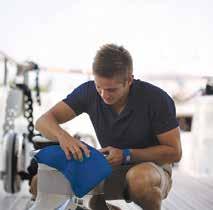


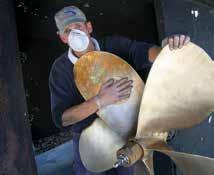
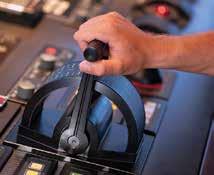


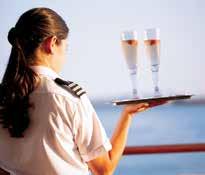
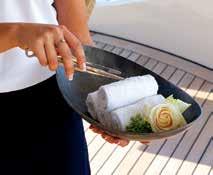

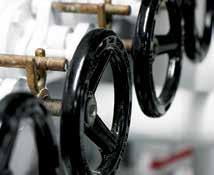

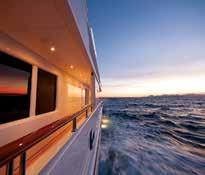

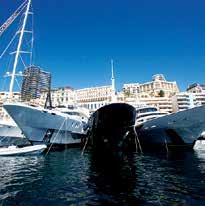

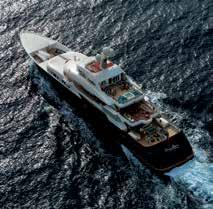
16–24 News from the yachting industry
28–30 A former yacht chef’s transition from the galley to helping yacht crew with their mental health
32 Chef Danny Davies reveals the secrets to provisioning in the Bahamas
34–38 Former Deckhand and Bosun Jordan Parkinson’s journey across the Atlantic Ocean — by rowboat
40 What choices can captains and crew make to obtain a green card?
44–46 Hiring the right people is essential, but are background and reference checks always correct?
50 Triton’s co-publisher started a hockey group for yachties in 2013 that is still thriving today.
76–81 Whether it’s for the 2024 Olympics, the Rugby Sevens, or just cruising, France is a yachting destination like no other.
82 The industry’s hottest events in April and May
84–87 Pictures of captains and crew at industry events
92 Try and find the five differences!
56 Using YATCO’s database, Triton found the biggest refits and their crew upgrades
58 How refit is incorporating the four R’s — Refuse, Reuse, Repair, and Recycle
60 The best ways stews can stay busy during time in the yard
62 Fulfilling IMO guidelines or speeding up your time in the yard? Check out the latest in refit technology.
64–66 Protecting the yacht during a refit is one thing, but what about the fine art?
68 Triton speaks to several “Below Deck” stars about how they tackle refits
70 Captains share their peculiar, crazy, or funny stories they’ve encountered during a refit.
72 An update on what’s changing in the refit industry and what’s staying the same — for better or worse.
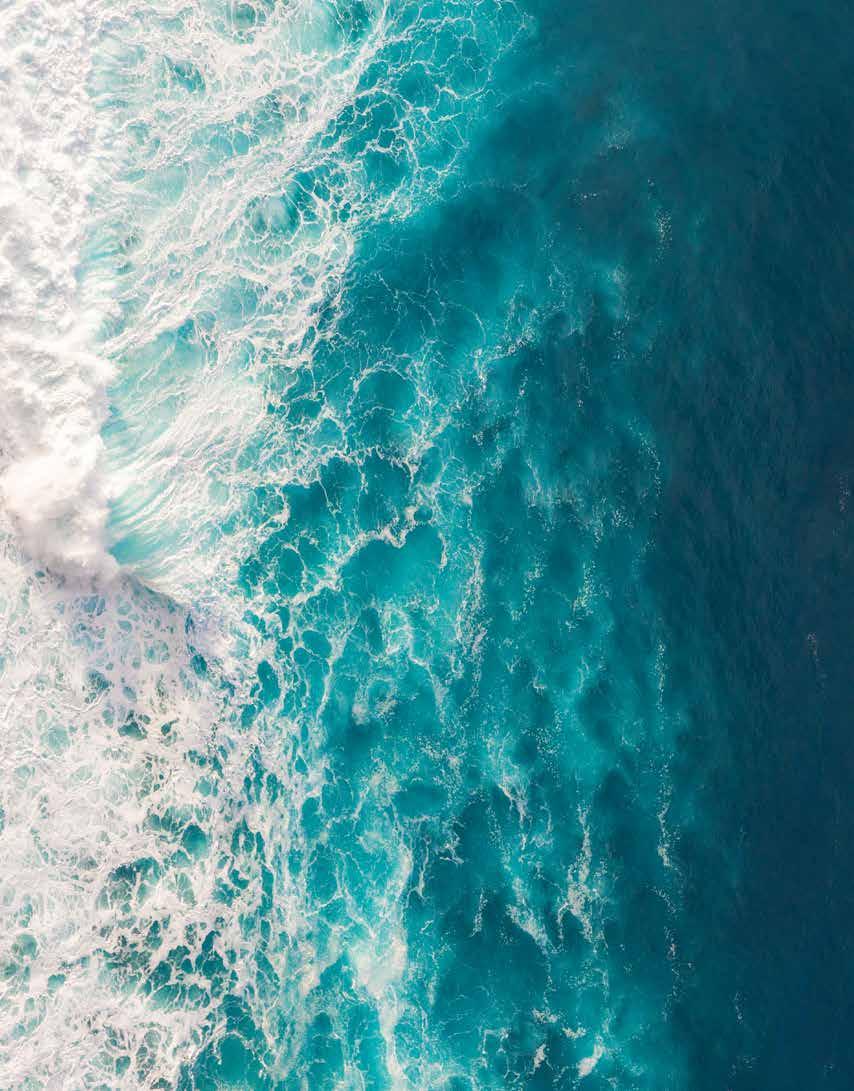
ON THE COVER M/Y Octopus at Lürssen’s shipyard on Germany’s coast. Photo by Andreas Pasenow.
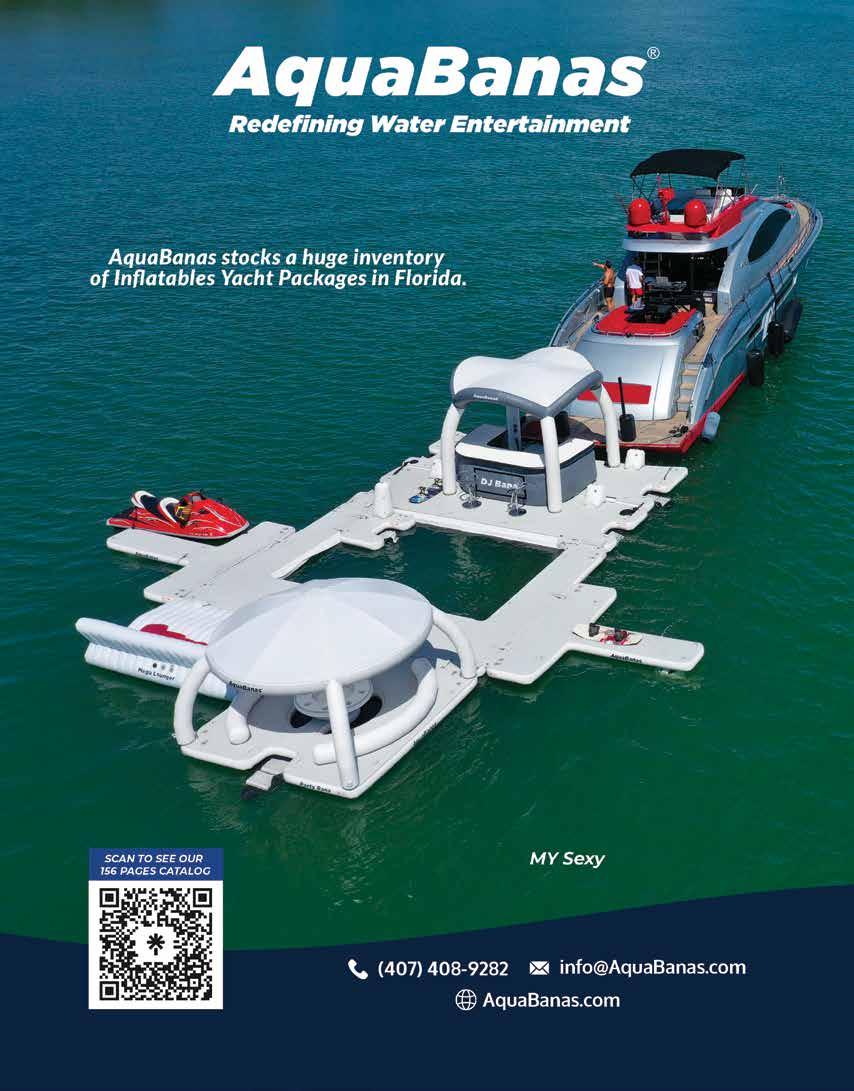





What may be Triton’s most anticipated annual issue is back — and it’s jam- packed. Looking forward to our annual refit issue is always a pleasure, just like it may be for some yachties who look forward to time in the yard. Maybe you look forward to the yard because you’ll be in a favorite city of yours for quite some time, or maybe it’s because you’ll finally be able to get a much-needed vacation.
If you do stay for a refit, you might get the chance to learn invaluable skills that could end up necessary when you’re in the middle of nowhere. If you don’t learn much, you might gain a nightmarish refit story instead, much like our “Refit Calamities” feature, where captains share their craziest refit-related stories. Our refit feature section doesn’t stop there, with stories like (Re)Fit for a King detailing game-changing refits that enhanced life on board for captains and crew. If you’re less interested in getting dirty during a refit and into the finer things of life, our Safeguarding Art feature details the best ways to take care of fine art during yard time — and how not to lose a Picasso.
If you don’t plan on sticking around to see your vessel’s makeover, you might be thinking of traveling instead. Our destination section details the must-see parts of France — including the 2024 Olympics in Paris. Maybe you’re into participating in sports more than watching them. Triton’s Co-publisher Kevin Quirk hosts free weekly yacht crew hockey games in Fort Lauderdale, and our Yachty Hockey feature explains how you can join in on the fun.
If sports on land aren’t really your thing, a water sport like rowing might be. Former Bosun Jordan Parkinson learned about rowing during his time as a crewmember, and recently rowed more than 3,000 miles across the Atlantic Ocean. Don’t start with something like that if you’re just getting into it, but read our feature on The World’s Toughest Row to get some inspiration.
Just like the return of our annual refit issue, we’re glad to have you reading Triton again too.
KEVIN MAHER Kevin@TritonNews.com


















In Quay Crew’s most detailed salary report to date, the superyacht recruitment agency surveyed almost 300 superyacht captains to get insight into real-time captains’ compensation. Respondents included captains on board yachts ranging from less than 39 to 100 or more meters, with more than half having been a captain for more than 10 years.
This year’s report found the average monthly pay is now higher across all size brackets, representing a median 6.75% increase. The increase comes after a slight decline in salaries between 2020 and 2022. Captains of yachts over 100 meters are seeing the biggest jump in salary compared to last year, with an average monthly salary of €21,243 in 2023 compared to €18,693 in 2022. Meanwhile, yacht captains of yachts between 60 to 69 meters are seeing the smallest monthly salary jump, from €15,774 in 2022 to €15,969 in 2023.
Simon Ladbrooke, captain consultant for Quay Crew, detailed one interesting and unforeseen detail found from the captains’ responses.
“We were surprised, however, how many captains there are out there with
commercial tickets captaining yachts significantly under 3000gt,” Ladbrooke wrote in the survey.
Quay Crew’s survey found that timefor-time rotation has grown in popularity on all size yachts, apart from those less than 39 meters, which are all full time. The average age that it takes to become a captain has risen, along with the number of years’ experience as chief officer, suggesting a longer transition. Although the transition time has increased, almost 75% of responding captains say it took them less than six months to secure their first captain role. However, onboard promotion could be a large factor to this low number.
Quay Crew’s full survey delves into each size bracket, detailing promotion, longevity, bonuses, and more salary statistics. Accessing the entire survey is free for captains and head of departments after subscribing to Quay Crew’s client portal — at no cost.
quaycrew.com/client-login
Quay Crew noted that there will always be exceptions and outliers in the various size categories, which can skew the averages. Keep this in mind when comparing your salary packages.
The National Association of Electric Boats and the Union of Nautical Companies in the Valencian Community have announced the inauguration of the Valencia Electric Boat Show. Dedicated to sustainable boating, the Valencia Electric Boat Show is the first and only event of its kind in Spain.
The boat show takes place from April 11–14, 2024, in Valencia Marina. The sustainable nautical event will feature electric, hybrid, and hydrogen boat exhibitions, while making it one of the reference platforms for innovation and sustainability in Spain’s maritime industry. Electric boats won’t be the only exhibition, as sustainable options like smart charge stations, innovations in solar panels for marinas, and other environmentally
friendly products will be displayed.
Round tables, conferences, and informative talks will also be available for attendees as the Valencia Electric Boat Show seeks to promote sustainability awareness in the nautical industry. Valencia was recently appointed as the European Green Capital, and the boat show hopes to continue the city’s trend towards a greener future.
valenciaelectricboatshow.com

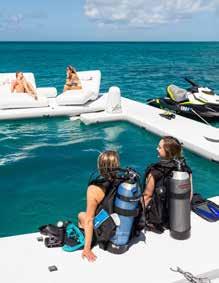
After receiving multiple requests daily from captains, crew, and owners for company recommendations that provide the same quality and service they do, FunAir launched a “MoreFun” section on their website. The section showcases their favorite high-quality yacht toys, superyacht products, and essential services for owners and guests.
The FunAir team will continuously add new products to the curated section, keeping it up to date for captains, crew, shipyard project managers, and owners to research and buy products on one platform. FunAir won’t receive any commission from these products, be involved in the sales process, or add on any additional costs.
The “MoreFun” section was inspired by the success of the “FunYachts” program that FunAir previously launched. “FunYachts” collects luxury charter yachts with the world’s best portfolio of fun, showing guests, owners, captains, and crew what other charter experiences are like.
“We’re all about making life on a yacht more awesome, so we’re looking forward to sharing some of our favorite products and toys. Our whole ethos is to make every yacht as entertaining as possible, whilst keeping things simple and efficient for the crew,” said John Courtney, managing director of FunAir.
funair.com
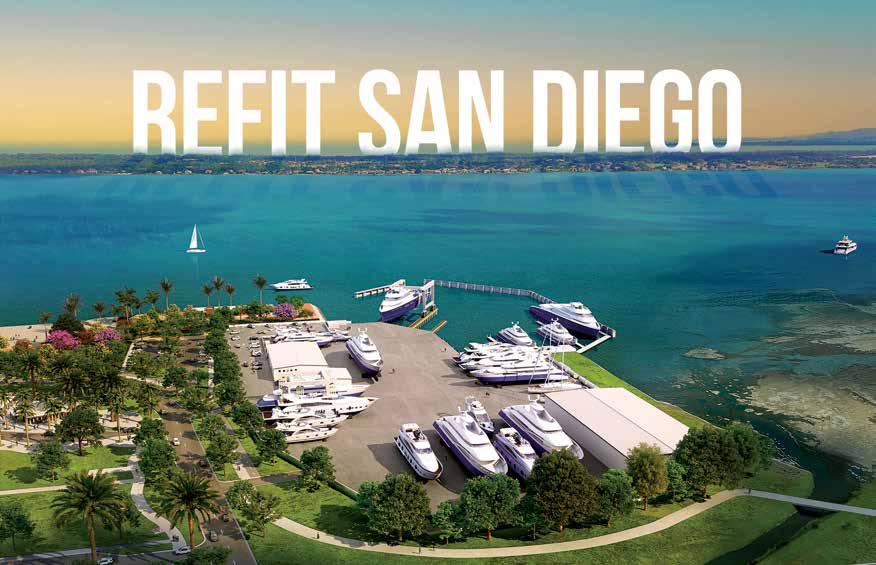

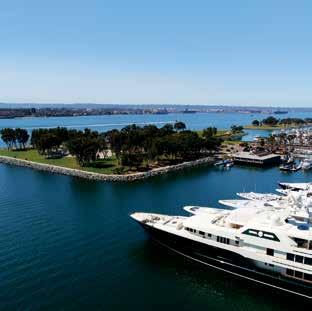

YACHTNEEDS, one of the largest marketplaces in the maritime industry, offers superyacht crew more than 135,000 products to choose from. Tony Stout, the founder of YACHTNEEDS and a former crewmember, understood the challenges of crossings or spending winters in the yard. Stout remembered the many times he and his fellow crew looked for activities that still united the crew in the crew mess beyond the typical pub outing. This led to the creation of YACHT-OPOLY in 2019.
YACHT-OPOLY, based on the original Monopoly game, was originally launched as a giveaway for crew. Although based on the classic board game, YACHT-OPOLY reached out to more than 100 yachtingspecific companies to participate and be featured in the game. Pantropic Power, Lürssen, Viking Crew, AWLGRIP, and others are now featured, with Monopoly money turning to Lürssen money.
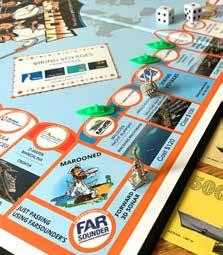
The traditional game pieces have been changed to symbols of the yachting industry, like a monkey’s fist, a lobster, and a fire extinguisher. Houses and hotels have been transformed to boats and superyachts, and the game’s center cards include scenarios that different crew have experienced on board.
“Owner’s wife falls off the passerelle while posing with her chihuahua. Move back 3 spaces,” or “You’re desperate to get out of the mistral that is smashing you around like being in the ring with Mayweather. Call All Service to book a last-minute berth. Pay $50,” are just two examples of the scenarios on the game’s cards. YACHT-OPOLY is now on more than 1,000 yachts, and a subsequent USA/ Caribbean edition was also released. A third, limited edition, may be on the horizon soon.
yachtneeds.com
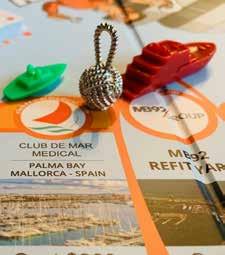
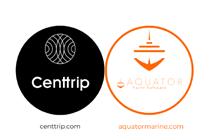
Aquator Marine develops yacht management software for yacht crew, captains, and owners, offering their software on web and mobile applications. Centtrip is a real-time treasury management platform that specializes in streamlining financial processes and providing payments and expense management solutions. The two have announced a partnership that they hope changes the yachting industry.
The partnership leverages the management technology that Aquator Marine provides with Centtrip’s financial acumen to offer multiple services to yachts. These include integrated financial management tools tailored for yachting, streamlined payment processes, customized financial solutions for yacht owners and charter operators, and realtime financial data and analytics.
“Aquator Marine is thrilled to partner with Centtrip. Their deep understanding of the financial intricacies in the marine sector complements our technologydriven approach to yacht management,” said Gerben Visser, CEO of Aquator Marine. “This partnership is a gamechanger for the industry, offering our clients a seamless integration of financial and operational management.”
aquatormarine.com
centtrip.com
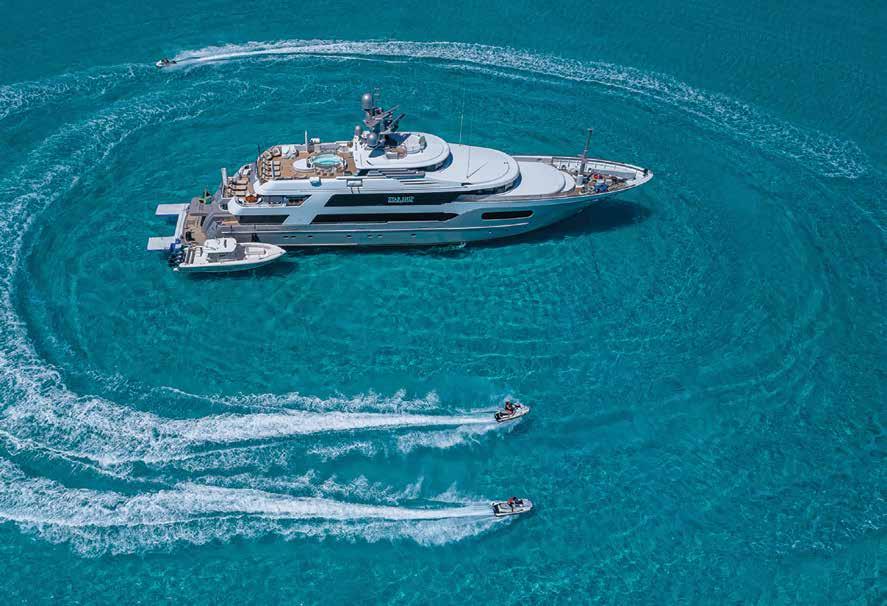
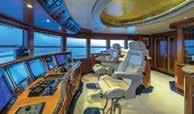

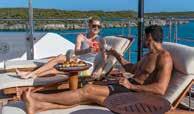

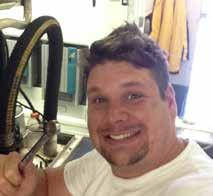
The winners of the 2023 John Percival Leadership and Student Star awards were announced on Feb. 15, with both awards honoring individuals who have demonstrated exceptional leadership and commitment to training within the maritime industry. Established in remembrance of Capt. John Percival, John Percival Marine Associates (JPMA) recognizes individuals who embody his ideals of mentorship, crew development, and dedication to excellence.
The John Percival Leadership Award Capt. Lourentia Schreuder won the 10th anniversary edition of the Leadership Award and was honored for her exceptional leadership qualities, assurance of high standards in all departments, and surpassing expectations when guiding peers. Chief Mate Nathaniel Day of Schreuder’s crew wasn’t surprised when he learned his captain had won the award and explained that anyone who meets Schreuder knows she’s a force to be reckoned with.
“Her infectious energy and unyielding passion create an electric atmosphere, inspiring the crew to push beyond their limits and achieve greatness,” Day told JPMA.
Brittany Finnegan, Schreuder’s chief stewardess, knew Schreuder within the industry before working under her and had always hoped to work with her. When Finnegan was offered a position in Schreuder’s crew, she immediately accepted
it and has never been happier in her career.
“Working under Lourentia, you have a voice, you feel relaxed, you can focus on your job, and you’ll always have support when needed,” Finnegan told JPMA. “I see myself now continuing my yachting career for longer than I ever thought.”
Upon hearing that she won, Schreuder looked back at her time with her current employer and her promotion to captain in 2022. She reminisced on the time she spent thinking about the type of leader she wanted to become and what values meant most to her.
“I firmly believe that true leadership is not just about giving orders, but about inspiring and empowering others to reach their full potential,” Lourentia told JPMA.
Lourentia stresses that building strong relationships with crewmembers and taking the time to understand each of their unique strengths, challenges, and aspirations is key. Fostering an environment of trust and open communication helped her create a safe space for her crew to express themselves and contribute their best.
“I want crew to be inquisitive, to ask questions and to challenge themselves to go beyond what they ‘think’ they can do, and, in turn, I will to the best of my ability help guide them through it all,” Lourentia told JPMA.
The Student Star Award celebrates individuals that have shown exceptional commitment to their studies, despite
challenges they may have faced. As an RYA and MCA training center, JPMA not only educates, trains, and advises students, but they also offer emotional support, too. JPMA asked their instructors to nominate students they had taught throughout the year and who had shown strong dedication to their studies, regardless of outcomes.
Steve Hogg was announced as the winner of JPMA’s 2023 Student Star Award. Hogg’s journey to obtaining his Y4 Engineering CoC served as proof to his steadfast determination. Despite numerous obstacles, Hogg persevered, earning him the admiration of his instructors and peers.
JPMA’s engineering instructors explained that Hogg gained his Y4 NoE in 2019 and began to tackle the written modules at the end of that year. His training came to an abrupt halt due to the start of the pandemic, and Hogg was finally able to attend the written modules in 2023.
“However, the advent of the Small Vessel Engineer route, and phasing out of the Yacht Engineer route, meant that he was now on a tight schedule to get the Y4 courses completed before his NoE was due to expire in early 2024,” his engineering instructors told JPMA. “If he didn’t successfully complete the three written module exams and the MCA oral exam in this short time frame, he would have to start all over again on the SV route, meaning another delay in obtaining a CoC.”
Fortunately, Hogg arrived at JPMA fully prepared and passed the Y4 courses before his deadline. His instructors noted his strong work ethic and dedication in the classroom as reasons he deserved the Student Star Award.
“It’s been a long haul but well worth it. I want to thank the JPMA team for all their help,” Hogg told JPMA. “I have proven to myself that if you really want something in life you can go out and get it.”
Voting is now open for the 2024 awards. Nominate your crew by emailing mate@hss.ac.uk.
www.hss.ac.uk
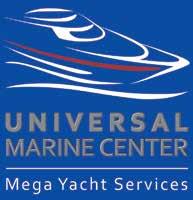
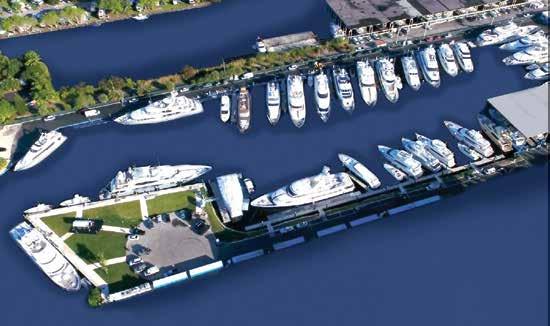
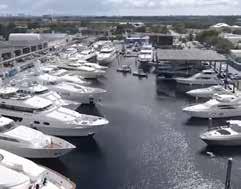
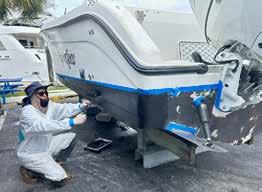




The first version of the environmental guidelines for crew has officially launched. The comprehensive guide, written for and by crew, offers information and assistance with eco-friendlier behavior on board yachts, helping steer the industry towards a more sustainable future.
The guidelines were created in a collaborative effort between the Water Revolution Foundation, initiator MB92, and creator Danella Hopkins, formerly of S/Y Black Pearl. The free and opensourced guidelines are divided into 24 sections and three overarching themes that provide crew with a detailed, holistic overview that explains how they can adopt more conscious practices into their daily routines. With advice from industry experts and crewmembers, the tool includes a wide range of perspectives and experiences.
The three guideline themes include “Onboarding Guidelines,” “General Guidelines,” and “Departmental Guidelines.” The onboarding guidelines describe how crew can change their vessel’s onboard culture to an environmentally friendlier one, improving operational practices as a result. General guidelines focus on the fundamental principles and standards applicable to all crewmembers, while departmental guidelines target the unique needs of each department.
“We understand that environmental sustainability can be challenging to
accomplish on board and there is no onesize-fits-all approach,” stated Robert van Tol, executive director of Water Revolution Foundation. “By working together with crew, we hope to inspire and facilitate this powerful group to minimize their yacht’s daily footprint where possible.”
MB92, Burgess, Damen Yachting, Divergent Yachting, Feadship, Fraser Yachts, Heesen Yachts, Lürssen, Oceanco, Safe Harbor Marinas, Sanlorenzo, The Crew Network, The OM, Virtual Pursers, Y.CO, and YPI Crew are official supporting companies of the guidelines, hoping to ensure widespread adoption. S/Y Black Pearl and M/Y Savannah have also become ambassadors within the fleet.
“Our industry can collectively create lasting change in its outlook and operations by working together, and these guidelines will help yacht crews and shoreside management teams reduce their environmental impact through improved efficiency and better practices,” Burgess stated.
The free environmental crew guidelines can be accessed on Water Revolution Foundation’s website or by emailing ecocrew@waterrevolutionfoundation.org. As a first version, the guidelines aim to collect feedback and any other best practices from crew to launch a second version in the future.
waterrevolutionfoundation.org
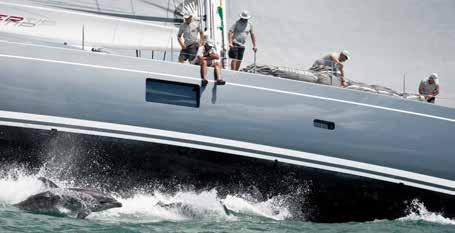

Aran Swart likes to keep busy. She owns her own yacht interior design company, RC Interior Design, but still found the time to launch a second business. Her brainchild, inspired by Swart’s eight years as crew and her experience working with yachts during refit, is My Vault, a new small-scale storage facility in South Florida.
“We keep seeing a need for it,” Swart said. She has worked with many yachts during refit and found herself constantly looking for more space to store things like fine China and the owner’s personal effects moving off the boat before eventually going back on.
“I’m always looking for a place to put things that is safe and clean,” Swart said. My Vault was born from this need — and who better than an interior designer to handle yacht storage? She began developing the concept last year and opened the doors in Oakland Park in February 2024. The storage facility — boutique storage, if you will — will be available for all yacht needs but is also open to crew who may need a little extra space for their gear.
“The business is geared towards refit needs — crew and owner and captain and what they're looking for in storage, [with] a managed flexible storage option,” Swart said. She emphasized that flexibility is key — it’s small-scale storage without all the usual minimums and long-term contracts. You can also scale up or down.
Reserve space online and My Vault will organize pick-up and delivery throughout the tri-county area. They also offer heavyduty dust- and waterproof packing cases for rent. The facility is climate-controlled and has state-of-the-art security.
“We want to make it as easy on the crew as possible,” Swart said.
myvaultusa.com


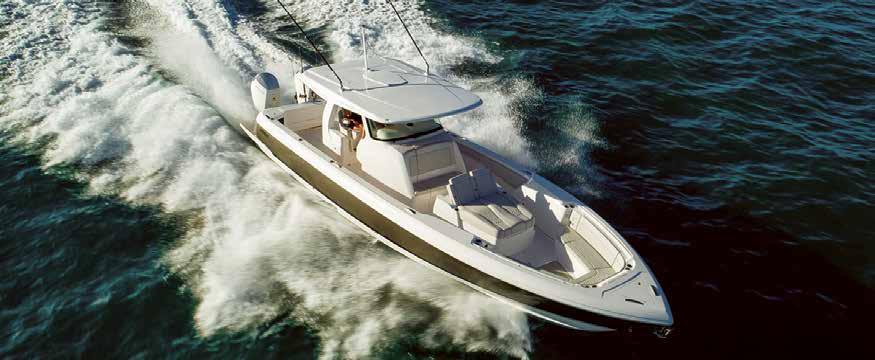



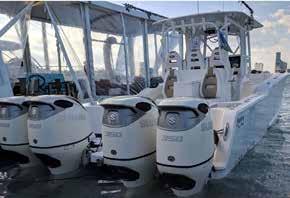

Vyara Fernandez spent 15 years in the yachting industry before creating Coco & Kandy, a sustainable fashion brand. The brand was created in 2019, and two years later Fernandez created an extension of the brand: Coco & Kandy Crew for yacht crew. With a mission to replace outdated superyacht crew uniforms with fashionable and ethically produced collections, Fernandez’s brand is revamping its image and website, and adding a new collection.
Coco & Kandy Crew is fueled by the challenges of sourcing fashionable yet sustainable yacht crew uniforms. The team makes all their collections with ecofriendly materials and ethical production methods, with various certifications from the Global Organic Textile Standard, Organic Content Standard, and Global Recycled Standard. Their garments are manufactured and tailored by dressmakers in Bulgaria and are sent directly to customers from the factory — reducing the company’s carbon footprint.
Hernandez’s crew brand also contributes to reforestation efforts. With each purchase from Coco & Kandy Crew, one tree is planted through the environmental non-profit charity One Tree Planted. Other partnerships include a leading ocean conservation organization, where each purchase enables the brand to adopt coral.
“I founded Coco & Kandy Crew as an extension of my main brand, Coco & Kandy, to redefine yacht uniforms and improve them in a realm where fashion doesn’t compromise sustainability but elevates it,” Fernandez said.
“Recognizing the effects of fast fashion, I wanted to do something transformative while solving an ongoing frustration with traditional uniform styles. We are excited to continue to grow and solidify our presence in the industry, bringing in this new era of yacht uniforms.”
cocoandkandycrew.com

Following a successful inaugural event last year, Yachting Ventures is returning to the Palma Superyacht Village (PSV) during the Palma International Boat Show at the end of April. PSV and the show have become one of the year’s most anticipated events, marking the start of summer and the Mediterranean season.
Yachting Ventures is again offering 10 leisure marine startups an opportunity to showcase their innovative products and solutions. Yacht crewmembers with startup businesses are invited to participate as well. Attendees can expect a lively atmosphere at Yachting Venture’s terrace, with daily coffee mornings, networking drinks, and a range of exciting events and partnerships.
“This year, we’re expanding and enhancing the space, working closely with partners to create a truly immersive and engaging atmosphere,” said Gabbi Richardson, founder of Yachting Ventures. “The Innovation Corner goes beyond mere exhibition space; it offers startups a comprehensive 360-degree marketing opportunity, encompassing media coverage, curated content, events, and a dedicated speaking slot for each participant.”

With yacht berths fully booked and attendance approaching the max, this year’s show is expected to attract more visitors than ever with an exciting array of vessels on display.
“By bringing something like the innovation corner to such an important show like the Palma Superyacht Village, we are embracing the need to be constantly updated with everything that is going on… the only way [forward] is for the yachting industry to embrace all of this new technology,” said Marta Iglesias, the newly elected president of the Balearic Yacht Broker Association (BYBA) and senior charter broker at Camper & Nicholsons.
In addition to the Innovation Corner, Yachting Ventures is partnering with the Balearic Marine Cluster for their pitching competition during the Balearic Superyacht Forum, which runs alongside the boat show in April. The competition will see five Spanish startups pitch their innovations to an audience and a jury of 10 maritime experts.
The Yachting Ventures Innovation Corner is still looking for startups, including crewmembers with new businesses. Apply through the QR code below or contact hello@yachtingventures. co for more information.

Feb-24


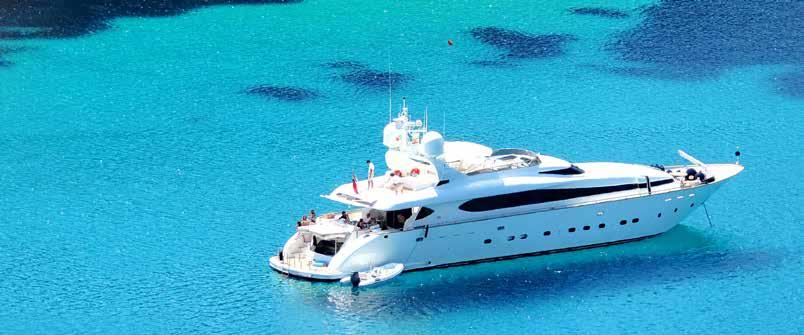


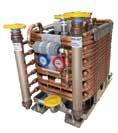
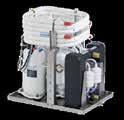


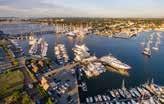

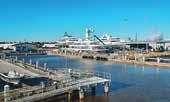
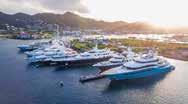




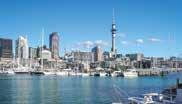



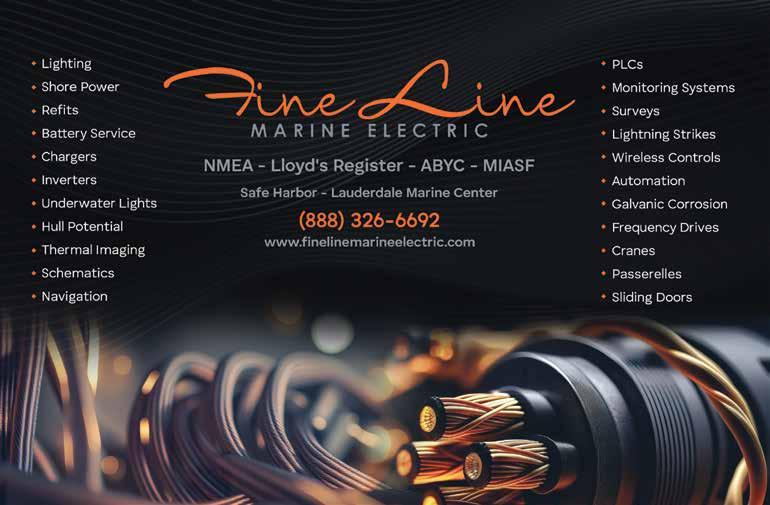
FROM 2,100 TO 3,400 GPD OF PURE WATER
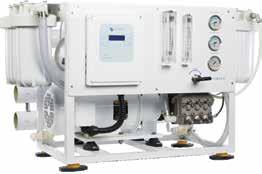
THE NEXT EVOLUTION IN WATERMAKER DESIGN



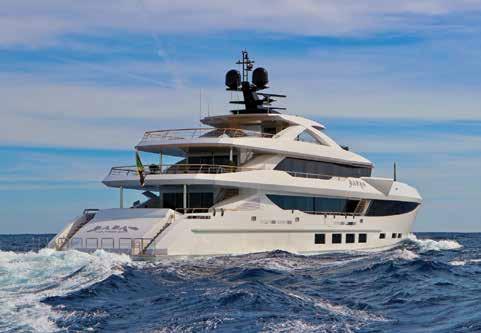
PROVIDING PURE WATER FOR HARGRAVE 56M “BABA’S”
FULL LINE OF WATERMAKERS
FROM 200 TO 5,500 GPD
WORLDWIDE SALES, PARTS AND EXPERT SERVICE

SALES, PARTS & DEALER INQUIRIES: BLUEWATERDESALINATION.COM
1 (562) 426-2412
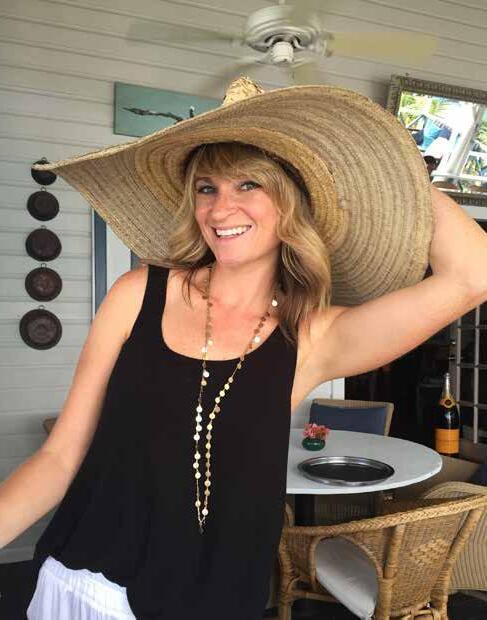
After spending more than a decade on board as a yacht chef navigating the highs and lows of a demanding yachting lifestyle, Emma Ross knew the industry needed help. She launched Seas The Mind, an organization that is revolutionizing the conversation around mental health while delivering mental health first aid training to yacht crew. Her hope is to create a lasting impact for the next generation.
How and when did you get into yachting?
I got into yachting in the early 2000s, in my 20s. I completed a psychology degree but quickly abandoned that for my first yachting job and then for the next 15 years! My friend had kept sending me photos of her crew with Colgate smiles in the Bahamas with a blue sea background — so I decided I wanted to join in. Within 10 days of being in Antibes, I got onto my first boat based out of Panama. I only stayed on that boat for three months. While I had an incredible chief stew, there was also a male engineer on board who took a shine to me and mistook my friendly nature for more, which became very challenging and drove me to leave fairly quickly. I then joined a 45-meter motor yacht where I worked for an amazing captain and chief stew couple; the crew worked hard and partied hard, ticking those cliches of the yachtie scene back then. This second job was where I fell completely in love with the industry and saw it could be a career where I would forge life-long friendships.
Where did your inspiration for Seas The Mind come from?
When I started working on board, mental health wasn’t spoken about; there was a vacuum with no support. I needed that support in my time, so I relied on genuine conversations with friends, but that wasn’t happening in yachting in general, only isolated conversations. The seed for Seas The Mind was always there — I understood how vulnerable crew are and how isolating being in the industry could be. I had always been interested in psychology and mental health, having studied it, and I knew that as a 38-yearold chef, I had an expiry date and needed an exit strategy. It was the COVID-19 pandemic that brought this. During this time, I couldn’t get back on board and I met an incredible female chef in London. We connected about how wild hospitality was. She had started a foundation called Kelly’s Cause Foundation and was teaching mental health first aid; when she started telling me about it, everything seemed to click. After she described the course, I knew we needed it in yachting. On the STCW and fire-fighting safety courses, crew are taught to be self-reliant, to always look out for each other, and to identify dangers — which was what this mental health first aid model was about. Before the ink was dry on my certificate, I knew this
training was my exit strategy, so I signed up to become an instructor, and this is when Seas The Mind was formed.
What is your current take on the mental health landscape of the industry?
It is still tricky, but it is starting to get better and get the attention it deserves, all because we have brilliant people talking more about it. The number of 100-meter-plus boats currently being built is insane. There will be around 90 crew on these bigger yachts, so the captains will be more like CEOs of another branch of the owners’ company. Many HR elements in the corporate world are now being adopted within yachting to make it more professional. So, while many individuals support Seas The Mind, I think we will have to start seeing management companies taking it more seriously and realizing that preventative measures are better. There have been discussions that mental health training should become part of the STCW, and that is when we will see more systemic change. The industry will get more regulated and safer; that is my hope!
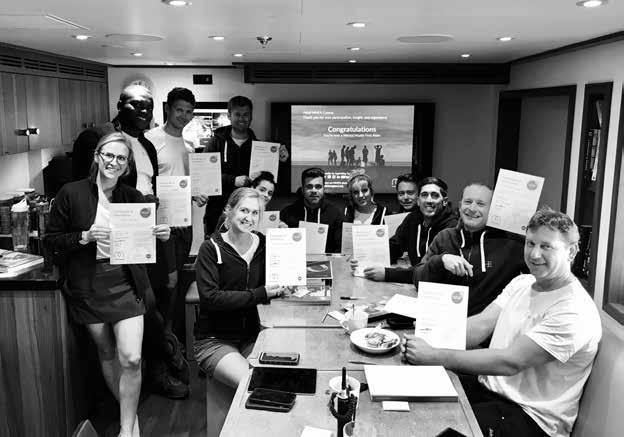
in determination. Also, being a former crewmember myself, I know I have that legitimacy. The crew don’t have to explain to me what it’s like to get bullied on board, to share a cabin with someone you don’t vibe with, or to be away from home for long periods of time. No one has to explain this as I know it, and I have lived it. This has given me good referrals and feedback as I’m not just a trainer giving them educational content — I have been there.
What has been your proudest moment in your entrepreneurial journey?
How has your experience in yachting helped you make Seas The Mind successful?
Somedays, it feels like I never know what I’m doing. I wake up in the morning and hope to do better than yesterday! I tell myself I don’t have any good business skills, but what I do tend to hear is how much passion I have. I am a terrible self-promoter, but get me in a room full of people talking about yachting, seafarers, and mental health, and everyone can see I am ridiculously passionate. I believe in our course and how this business should be rolled out. What I lack in experience, I make up
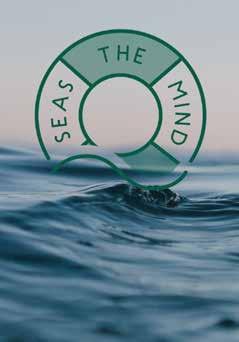
seasthemind.co.uk
Instagram: @seasthemind
linkedin.com/in/seasthemind
It is crazy to see the person I was when I started yachting to who I am now. When I first started day working in Antibes, I was returning from a job interview, and Monaco caught my eye to explore; I ended up at the Oceanographic Museum and fell in love with it. Fast forward to this September and I was invited back to this museum by ACREW to lead a mental health seminar with Capt. Kelly Gordon at the Monaco Yacht Show. I high-fived my 20-year-old self to see how far I’ve come and where I am now. The talk was incredible, and we had every link in the chain represented explaining their sides. It became an open dialogue; someone said it felt like actual change, and I felt that too. It was such a proud moment, a big wow moment. But I also love having conversations, not just on this industry-wide level, but with the individual connections I make with all my students. If this training saves even one person’s life, that is all that truly matters to me.
What has been your biggest challenge in your entrepreneurial journey?
I’m not a business-minded person.
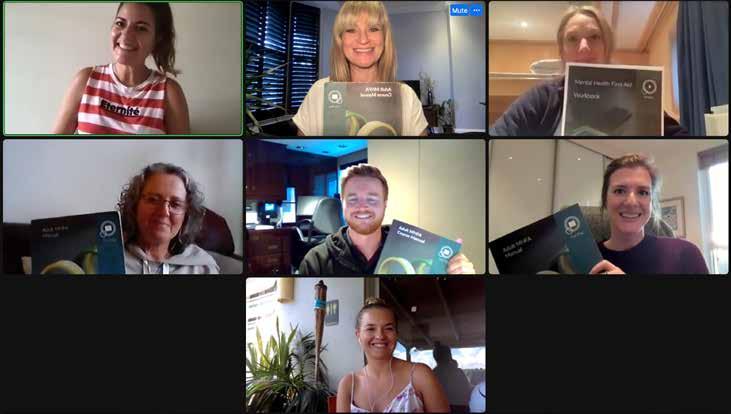
I have never run a business before. I can read books and listen to podcasts, but I am a chef. You develop a business idea, and it becomes your baby; you look after and care for it. And it is hard! I’ve had so much rejection, whether people don’t believe in mental health or just about Seas The Mind. Last summer, it felt like I experienced around 100 days of rejection, no emails, and no sign-ups, but I still got up on day 101 and kept working for it because I believe in it. The irony is that keeping my own mental health as robust as I can has been the biggest challenge while facing rejection and financial insecurity every day as I slowly build up the business.
What do you miss about working on board?
Firstly, I definitely miss the boat AMEX when buying my own shopping!
Coming land based, you also realize how dynamic yachties are and the instant gratification of completing a work list. The circles of completion in business are a lot longer; I’ve been in talks with companies for years, whereas when you are on board, you do things there and then. I miss this yachtie mindset, intensity of friendships, and brilliant camaraderie. Obviously, the travel
and the money too, but for me, it has always been about the people and the connections you make.
What is your advice for crew looking to step ashore?
I feel weird advising because I had a bumpy ride and didn’t do it that successfully! But the thing I did do right was that I was lucky enough to be on rotation. I built my business up while still working on board; it was a kinder exit strategy. The core thing I have learned is you have to believe in whatever you are going to do, otherwise, it is tough. I believe in Seas The Mind implicitly. I suggest that you do it in stages, like a rotation. I would also say to be really smart about money. I was never very good at planning or finance; if I were to leave again, I would have a bigger financial safety net. Also, find people who believe in and comfort you to remind you why you left and started something new when you forget in that fog of self-doubt.
What does the future hold for Seas The Mind?
Seas The Mind has given me meaning and purpose; it meant I hadn’t just spent 15 years on board just to walk away; it
has also honored my degree. I am now doing this for the next generation; they deserve to feel safe. It will be exciting to see where this new generation of yachties goes. In the short term, it is about getting as many people trained as possible. When it (mental health training) is part of the STCW, we will see real change, and I hope it becomes part of the next revision. The dream that I am constantly talking about is that every single crewmember who comes into the industry will be taught mental health awareness and first aid. Another hope I have is that as crew become HODs, those in charge of teams with a duty of care to people should also be doing advanced mental health first aid. We can then give crew the skills and tools to deal with inevitable situations that will come up. Accidents will happen, and people will go through adverse life events, so if we drop the ego in yachting and do a little training, it will make things easier or prevent it from becoming a bigger issue. ‹
OFFBOARDING IS A TRITON SERIES THAT HIGHLIGHTS THE MANY WAYS CREW USE THEIR YACHTING EXPERIENCES TO BUILD NEW CAREERS ASHORE. GOT A STORY TO SHARE? LET US KNOW AT CREW@TRITONNEWS.COM
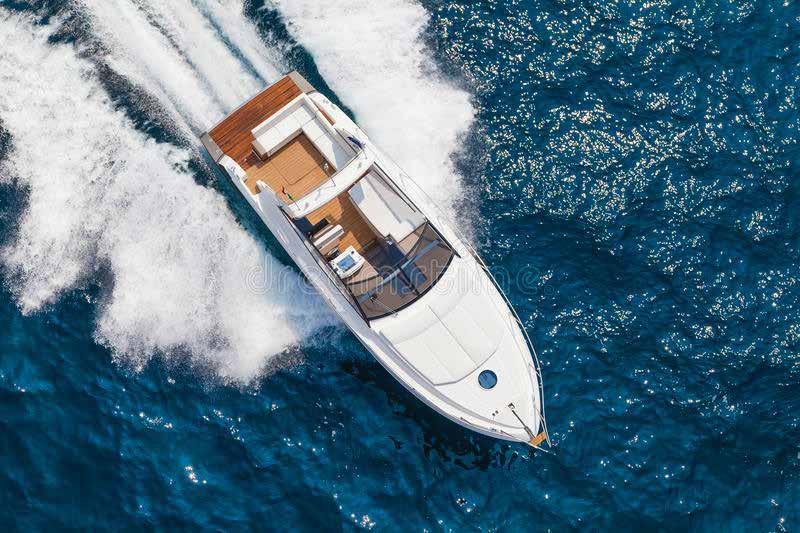
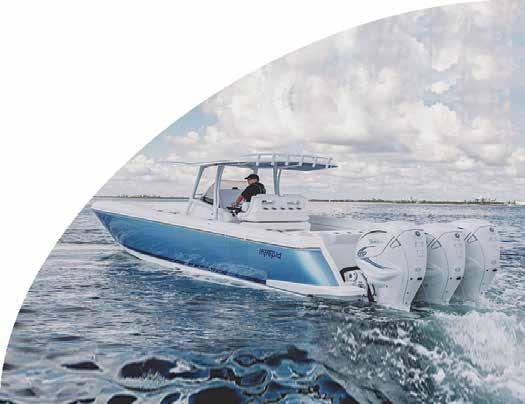


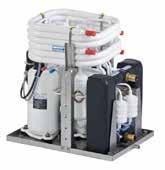

For those familiar with seafaring chef escapades, you’re well aware that provisioning can often feel like navigating a stormy sea. I’ve had the pleasure of working my culinary magic on yachts ranging from small day trippers to superyachts, and provisioning is always a pain in the stern.
Let’s start where most chefs start when organizing a provisioning run — a quick chat with the captain. Armed with the details of any upcoming charters, vessel movements, and timings, I craft a provisioning plan. I’ll spare you the intricacies of storage logistics and focus instead on the art of provisioning itself.
Yacht chefs on vessels 50 meters or smaller find themselves thrust into the role of provisioning alone. I’m currently a sole chef, so I have that pleasure on a weekly basis. I make sure I have an easy lunch ready to go for the crew that I prepare early that morning or the night before, like pizzas, sandwiches, and a few salads. I take the crew car and as many shopping
bags as I can pry out of the stew’s hands before heading to at least two stores to find everything I need. I go around with two carts — one for crew and one for guests. Once a cart is full, I move it close to the checkout and grab the next one. I try to make it easy to unpack by putting fruit and vegetables in one cart, proteins in another, and dry in the next. Once I’ve filled up five to seven shopping carts, it’s off to check out.
It’s good to know the delivery days in the Caribbean and the Bahamas because some protein and fresh green veggies can be hard to find — except fresh fish, which is usually easy to locate. The WhatsApp chef groups help me find local hot spots and the delivery days, but beware, just because it’s a delivery day doesn’t mean it will be on the shelves when you get there. I’ve seen a gaggle of chefs standing around a trolley of boxes, trying to pick through the good stuff before the shelf stacker has a chance to put it out on display.
Provisioning agents — love them or loathe them, they are here to stay! If your boat has the budget to use a provisioning agent, do it. Use a couple of them for small orders first; that way, you get to know how they work and build up a solid relationship with them. Try to pick the ones that will deliver to the boat in most of the locations you’re going to be for that season. A lot of the Caribbean islands are Dutch, French, American, or British, and some will ship directly from Europe.
Of course, there are always nightmare stories with provisioning agents. My first visit this year to St. Maarten was after a long passage and one week into a charter. I was running out of fresh veggies and was low on a lot of dry food items, like pasta, tinned tomatoes, and rice. I posted in a WhatsApp chef group asking where the best place to get these items and have them brought to the boat. I won’t mention names, but I had so much trouble getting what I needed to be delivered. They were more than three hours late and only delivered a quarter of what I asked for. I’d planned
to take delivery while the guests were at the beach but ended up struggling to get everything on board with a few minutes left to go before cocktail hour.
Having said that, it was just one experience. In the past, I have had great service and amazing quality from provisioning agents. I usually find them to be helpful, very clear with communication, and on time with deliveries with everything in order.
If you have to go it alone, use the network of yacht chefs via Facebook and WhatsApp groups to guide you where to go. Be sure to check out as much of what the island offers, as there are always hidden gems for provisioning. Should you find yourself amidst the chaos of provisioning, fear not, for the culinary community stands united, ready to guide you through the storm. ‹
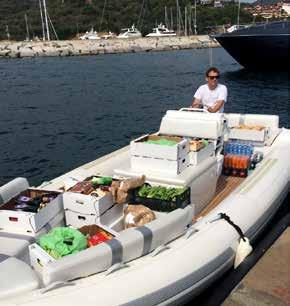





Celebrating 20 years of Alexseal Yacht Coatings is an excellent time to look back at how it all began and forward to the things to come.
Twenty years ago, the global paint manufacturer Mankiewicz had a mission: Creating a one-stop-shop yacht coatings portfolio applicable from the first primer coat to the final topcoat. "ALEXSEAL Yacht Coatings" was born. Thomas Schultz, Global Sales Director at Alexseal, reviews the course already taken. And what lies ahead in the coming years.
"Developing and applying yacht paints is one of the fine arts in the coatings industry," says Thomas. Very rarely do vehicles have large, completely flat surfaces. For example, the fuselage of an airplane is enormous. But it is still round, and the passengers "only" expect an extremely high gloss, not a mirror-like surface. "Especially on large yachts, we have comparably huge but almost flat surfaces. This is an extreme challenge, even for professional painters. If the topcoat's performance is not 100%, you cannot achieve a mirror-like finish," says Thomas, summarizing only one of the challenges for yacht paint crews.
To develop yacht coatings at the highest level, you must know how to do your
homework right from the beginning. DOI and UV resistance are just the tip of the requirements iceberg, extending deep into adhesion, sandability, polishability and many more. Painting conditions vary from construction site environments to clean rooms and from cold, dry environments to warm, humid ones. The coating portfolio must map all of this with suitable systems.
But Mankiewicz was prepared. The global coating manufacturer is firmly anchored in the aviation industry, which has taken the exterior painting of aircraft to a new level with innovative coating systems. The rail sector is also concerned with large exterior surfaces with visually and functionally highly sophisticated finishes. "These markets show clear parallels to the yachting industry," says Thomas.
With such a background, it was easier for the young Alexseal team to get a foot in the door with shipyards and yacht painters. "Nevertheless, despite the many advantages, it was difficult to win the first major projects at the beginning," explains the Alexseal pioneer. "Confidence in our set-up is one thing, but
experience with the right paint job in the dock is another. We first had to earn our spurs."
In 2004, ALEXSEAL was brought to market first in Australia and the United States, followed by Europe. Already in 2007, many yachts were applying Alexseal's Polyurethane Premium Topcoat 501, including the largest dark blue yacht in the world at that time. Over the following years, more projects came along, and they got bigger and bigger. In 2023, almost 40 percent of the world's 100 largest yachts were coated with Alexseal systems.
However, the yacht market is not just a sea of superyachts. The sport and leisure segment and medium-sized luxury yachts also make up a large part of the market. "Today, we are very proud to have the right answer for different requests and painting conditions with our Premium Topcoat 501, Acrylic Topcoat X, and High Solid BaseCoat/ClearCoat system. And we look forward to every new challenge that makes our portfolio even broader, more durable, and richer in effect and color. A big thank you to everyone who has challenged, accompanied, and trusted us over the last 20 years."



More than 3,000 miles of ocean separates the Canary Islands from Antigua and Barbuda. Crossing the Atlantic Ocean is considered quite a journey for yacht crewmembers, but that’s usually on a megayacht. Jordan Parkinson, a former deckhand and bosun, decided to take on crossing the Atlantic — by rowboat.
Parkinson’s yachting journey started in 2012. After traveling from the United Kingdom to the south of France, he gave himself one month to find a yachting job. If he failed, he’d go back and join his family’s business. After a bit of networking, he received a random call from a captain, asking if he’d join a 40-meter Sunseeker. Parkinson agreed, and using his adolescent water sporting experience, he began moving up to bigger yachts and better positions. Eventually, he joined a vessel based in Antigua.
One day in 2019 while docked in English Harbour, Parkinson watched rowboat after rowboat enter the harbor, with cheers from ecstatic crowds of family, friends, and onlookers. After some research, he found that these rowers had just come from the Canary Islands and were participating in The World’s Toughest Row. The World’s Toughest Row is an extreme endurance race where individuals from around the world compete to row thousands of miles across the Atlantic or Pacific Ocean.
“I just picked up my phone and called my dad. I was like, ‘Do you fancy doing it one year?’” Parkinson said. “He replied, ‘Yeah, sure thing.’”
Although they needed to complete some research to see what the journey entailed, Jordan’s father, Richard, was in, forming the beginning of a team ready to cross an ocean. Word soon spread of the Parkinsons’ plan to cross the Atlantic, with Tom Atkinson, a friend and local plumber in Jordan’s hometown Isle of Skye, calling Jordan soon after. Atkinson was interested in joining the team with one of his good friends, Paul Roadnight. Atkinson previously served in the
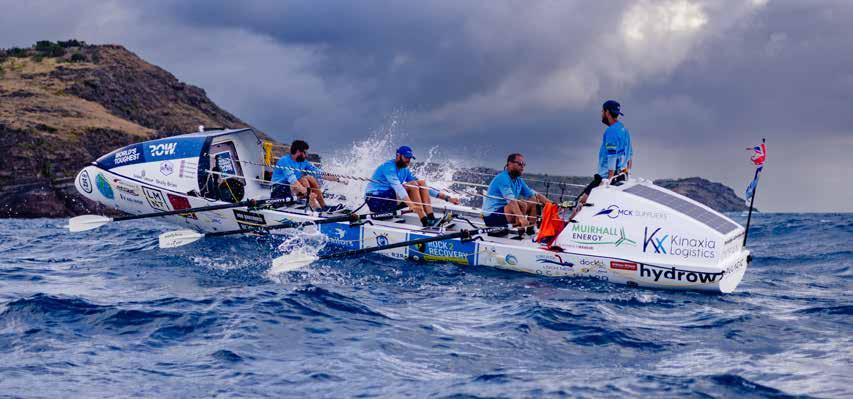
British Army, while Roadnight continues to serve and is an infantry warrant officer. The two joined the father and son duo, completing the team of four and naming themselves Atlantic R2R.
Although the team was committed to the cause, it would be a long wait before they could start their row. The foursome signed up for the earliest race they could in March 2020, but the first available race was in December 2023 due to an increase in the contest’s popularity. Although years away, it gave them time to raise the €140,000 needed to participate in the race. Opting for a new boat with a longer cabin was one of the biggest financial hurdles the team had to overcome. Roadnight is 6’ 8”, so although the €85,000 price tag of a new, 9.8-meter rowboat was hefty, it was necessary. Fundraising, sponsorships, personal savings, and friends’ and family donations gave the team enough to secure the boat, equipment, and race fee. Their new boat, Prestige Worldwide, was delivered in March 2023, finally allowing them to practice and reach the required 120 hours of team training designated by the race’s organizers.
Although the challenge of rowing across the Atlantic was inspirational enough for the team, the biggest push to complete the row were the two charities the foursome was supporting. Sailors’ Society was one of the two charities the team was supporting, with Parkinson a big reason why. To outsiders, the glitz and glamor of yachting
“Once we pushed off from the start line, we felt like we’d already achieved something — it had been nearly four years of our lives preparing for this.”— Jordan Parkinson
is evident, but Jordan saw first-hand the darkness that fellow crewmembers can fall into while working in the industry.
“I had two colleagues on two different boats that were really struggling, and you’d never have known — one was a really successful captain and the other was a really good bosun,” Parkinson said. “Unfortunately, they’re not here today.”
The Atlantic R2R team also supported Rock2Recovery, which was inspired by Atkinson and Roadnight’s experiences in the armed forces. Between numerous tours of Iraq, Afghanistan, and other places in the world, the two have lost many friends.
“Not just on the front lines, but once they come home, trying to sort of funnel back into normal life,” Parkinson said. “They were having all these flashbacks and PTSD moments, and unfortunately, they took their own lives. Between Tom and Paul, they have around five or six guys they knew well that sadly aren’t here now.”
Although the two charities help different groups, they both share a mission to improve the mental health of their respective groups. With these
two charitable organizations close to the team’s hearts, they continued raising funds and training until it was time to travel to La Gomera in the Canary Islands in early December.
“Once we pushed off from the start line, we felt like we’d already achieved something — it had been nearly four years of our lives preparing for this,” Parkinson said.
With countless teams having to drop out due to insufficient funds, Atlantic R2R felt incredible just being at the starting line. With weather varying in the Canary Islands, Atlantic R2R was told their race might not begin until Dec. 15 or 16, even though the race start was scheduled for Dec. 12. Fortunately, a good weather window opened, and the team embarked on their journey on Dec. 13.
“Before we got to Gomera, we thought it was going to be a nice first week; we’ll get into our routine, get over the sea sickness, make sure our nutrition is up and get lots of calories in, see some dolphins and some whales — it’s going to be beautiful,” Parkinson said. “It was nothing like that at all.”
Immediately, the team encountered steering problems with their rudder. Within 12 hours, they had to deploy their parachute anchor and sit for the first evening — watching as the other teams passed them by. It was too dangerous for someone to get into the water due to wind and rain during the night, so they had to wait.
“It was honestly miserable,” Parkinson



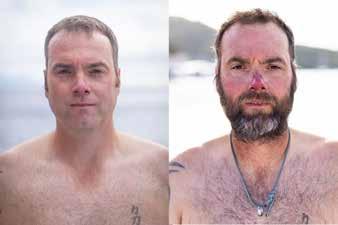
said. “I called Steph [his girlfriend] on the first night, and I was crying.”
The next morning, Parkinson jumped into the water, switched out the rudder, and tested the steering. Although they had dropped position from fourth to 28th, they started to head southwest with 30 knots of wind coming on the beam from the east. Within the first 36 hours of their journey, the team had broken their three spare oars and their two forward rowing gates due to inclement weather, limiting them to two rowing positions for nearly the entire crossing.
With the team’s mood already down, Parkinson phoned the race’s safety officer via satellite phone. Participating teams have constant contact with safety officers, who can advise teams on weather reports, news, and the location of other teams. After Parkinson briefed the officer on the team’s state, the officer told them, “Don’t fight the ocean; just go with it.”
The team did just that, turning 20 to 30 degrees and putting everything behind them. Suddenly, they had 30- to 40-foot waves following them and about 25 to 30 knots of wind on their stern. For the next 10 days, the weather stayed the same, and they were able to reach a maximum speed of 14.5 knots while surfing down waves.
“You can imagine taking saltwater over the bow; nothing dries. Just trying to keep warm, trying to keep dry as best you can, but nothing dries,” Parkinson said. “Even in the cabins, there’s condensation, there’s salt air in there — it’s just a miserable place to be.”
After 10 days, the weather calmed down and the wind headed northeast. Parkinson, the vessel’s skipper due to his maritime experience, had aimed to go south to around 19 degrees north to avoid storms.
“We kind of knew that historically, the storms don’t really form below 19 north, so I kind of knew that if we got down there, we’d be safer,” Jordan said. “From 19 north we could bank it farther round to the west and sort of face Antigua.”
The team had a schedule of two rowers on and two rowers off, with the shift switch happening every two hours. Those not rowing tried to rest, dry themselves, contact loved ones, or get salt off their skin in their small cabins. The boat’s cabins were filled with the team’s navigation systems, satellite communication gear, battery management panel for their solar panels, and an autohelm system, with just enough room to crawl in and lie down. Apart from the technical gear, the team’s medical supplies, personal clothing, medication, and food were stored in their cabins too.
The race’s organizers inspect the food on the World’s Toughest Row before the race starts. Each team member must meet a standard of calories eaten per day, which is 60 calories per kilogram of body weight. When the team started their journey, they had more than 1.2 million calories on the boat. Dehydrated ration packs were their primary food source, but snack packs with home comfort foods like chocolate, chips, nuts, and dried fruit were on board as well. Fresh water was made on the go with a small water maker that filtered the ocean’s water. The water maker could produce around 35 liters of water an hour, so the team only needed to run it twice a day for an hour each time to have a sufficient supply.
“We ran out of water once. Luckily it was at night, so it wasn’t too hot, so then we sort of really learned a lesson there,” Parkinson said.
As the team continued west towards Antigua, entertainment

options on Atlantic R2R’s rowboat were limited. One day into the row, Parkinson’s phone popped up with an error and broke, taking with it most of the music and audiobooks the team had downloaded. Roadnight’s phone was the only source of entertainment, so there was lots of repeating music during the trip. Chats filled the air when the rowers weren’t opting for music or the sound of waves, and the earth’s beauty also helped them along the way.
“A bit of wildlife came around, lots of birds, things like that kept us company,” Parkinson said. “Then, at night, there were lots of shooting stars, you had the Milky Way coming over you, but you do get bored, there is a lot of silence, but you just get on with it, you know?”
One phenomenon that Parkinson had heard about but didn’t really believe in was hallucinations. During a night row, the combination of darkness, fatigue, and blinking repeaters of the vessel’s equipment got to Parkinson, making him realize the stories of hallucinations were real after all.
“Our flagpole on the back of the bow on the starboard side behind the cabin, that thing turned into a person,” Parkinson said. “It came down and grabbed a deck repeater from the cabin door and shone it right to my face. I shook my head and was like, what the hell just happened — I was seeing things.”
As the team continued through their row, they never experienced truly smooth rowing, so the team never saw much wildlife in the water like they were expecting. There was a short visit from a marlin and tuna around the team’s boat,
but it didn’t last longer than an hour.
“You see all the promotional videos from the row, and you see all the dolphins and the beautiful sunsets, and we did have beautiful sunsets, don’t get me wrong, but not one day did we have a mirror-flat calm day with dolphins and whales,” Parkinson said.
One visit, however, brought team spirits back up. M/Y Bystander and its crew, including Andy Burns, who had rowed the Atlantic in the past, stopped by to encourage the team to continue.
“We got this ping on the AIS, and I could see on the horizon we had this ship heading straight for us and as it got closer, I was like, ‘It looks a bit like a yacht,’” Parkinson said. “They did quite a close drive by on us, and it was a really good boost for the crew’s morale.”
As the team got closer to Antigua, they began to see the lights and land from the island about 25 to 30 miles away. They were followed by a big storm, and the ocean conditions were rough. While they were initially scheduled to arrive around 3 a.m., the race’s organizer contacted the team to wait until the morning, as their place in the race was cemented and it would make for a better celebration.
At 7:54 a.m. on Monday, Jan. 22, Atlantic R2R crossed the finish line in English Harbour, Antigua, after 40 days, three hours, 31 minutes, and 2,688 nautical miles (around 3,093 miles) of rowing. Although the storm was still drenching the team with rain on the way into English Harbour, the sun came out as soon as they crossed the finish line.
“It was just this most incredible moment,” Parkinson said.
“Crossing the
line, the emotions came out. That was it; we’ve done it.”
The team’s immediate families, including Parkinson’s girlfriend, Stephanie, and his newborn son, Zac, were waiting for them at the finish line. Many crew friends, including Parkinson’s sister, who is crew too, had been given the morning off to celebrate the team’s accomplishment.
“It was a hell of a reception,” Jordan said. “I didn’t expect there to be that many people there, but we arrived, and it was packed.”
Atlantic R2R finished ninth in The World’s Toughest Row, but more important to Parkinson and his team was the bond they created. Jordan and his father, Richard, spent hours rowing together, speaking about things he would have never imagined. The journey only strengthened an already strong bond, and the father-son duo became friends for life with Atkinson and Roadnight.
The team also raised more than £12,000 for the Sailors’ Society and Rock2Recovery. Parkinson hopes his journey across the Atlantic can help yacht crew and others struggling with their mental health to seek help and beat the stigma that surrounds the topic.
“Whether it’s to a fellow crewmember, to a captain, to a counselor, or even someone you don’t even know, it’s really important for you to talk and to be able to recognize people who are struggling,” Parkinson said about the current state of mental health in yachting. “It’s definitely a more approachable subject now, but it’s taken quite a long time and quite a few lives for it to be.” ‹
atlanticr2r.com
worldstoughestrow.com

THE ENTIRE DESIGN OF THE IS FOUNDED ON THE IDEA THAT DAILY OPERATIONS CONSISTS OF NOTHING MORE THAN TURNING ON THE UNIT WHEN YOU STEP ON YOUR VESSEL, AND TURNING IT OFF WH EN YOU LEAVE.
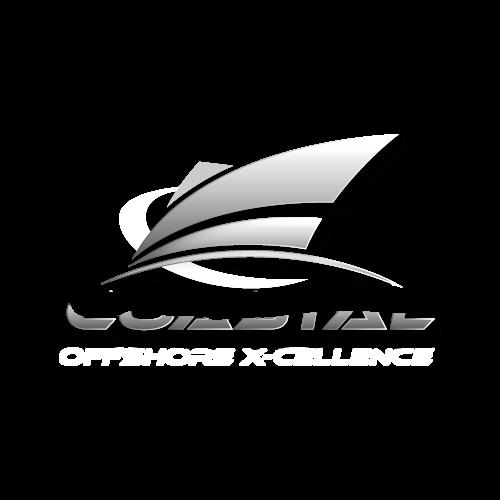



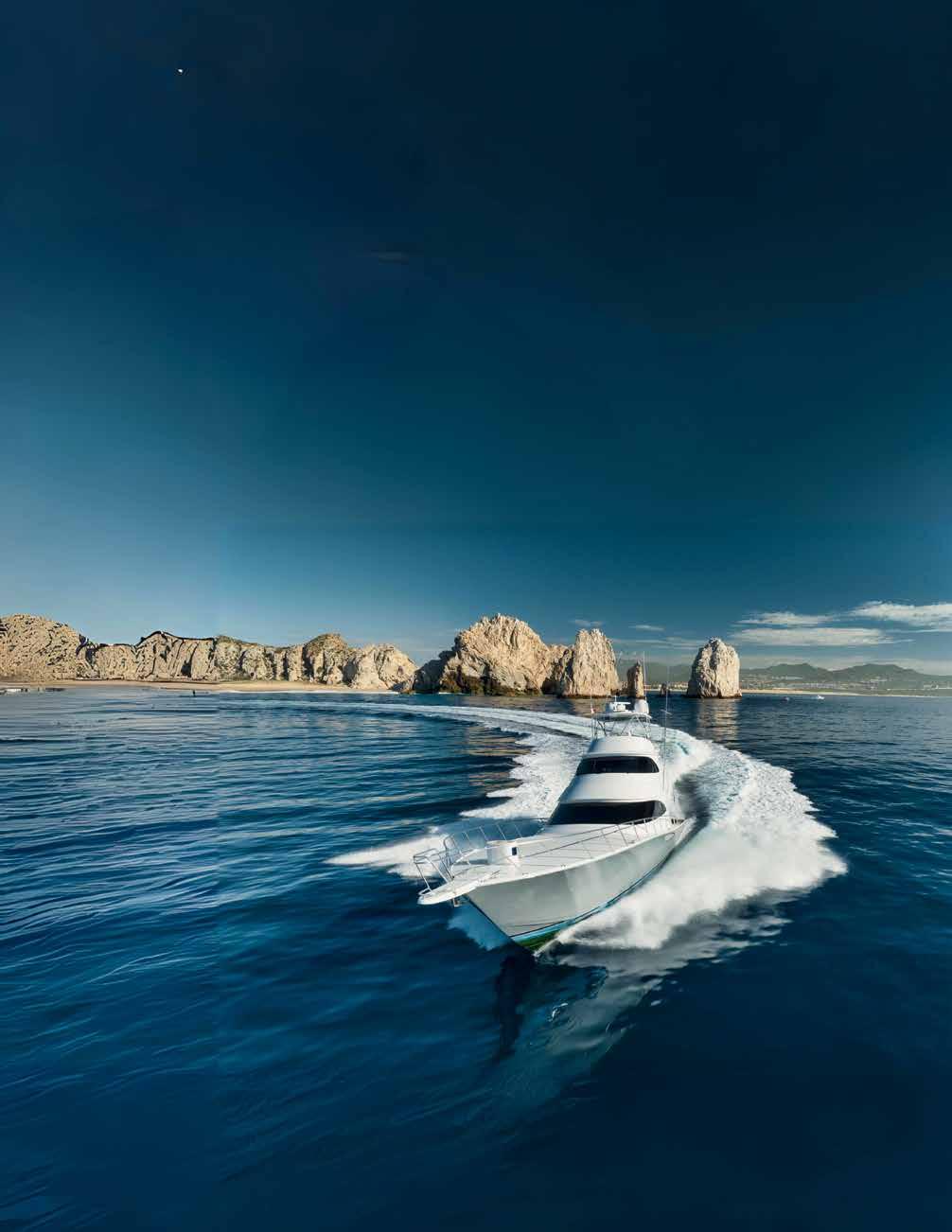


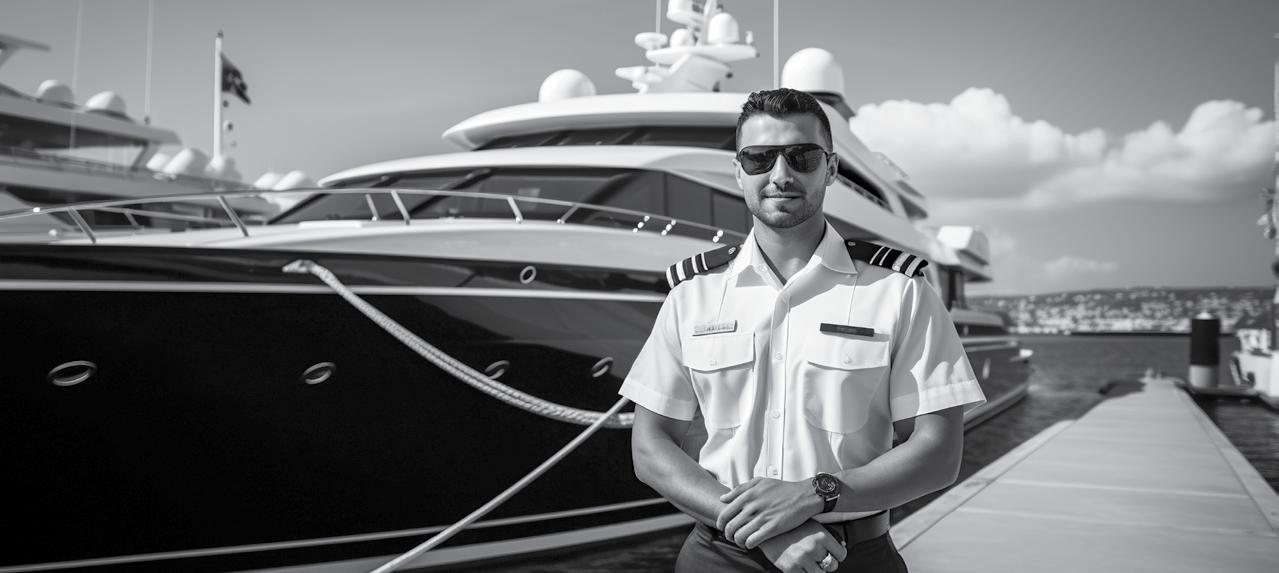
What options do yacht captains and crew have to obtain a green card?
By Oleg OttenMany captains and crewmembers employed by the private yacht industry are neither U.S. citizens nor permanent residents. Therefore, when a boat travels to the U.S., such captains and crew must maintain valid U.S. visas (usually B-1 or B1/B2 or, sometimes, D or C1/D visas).
If a crewmember had U.S. permanent residence (commonly called a “green card”) or a U.S. passport, they could travel to the U.S., and work there — with no immigration constraints on entry and employment. Moreover, captains with U.S. passports can serve on U.S.-flagged vessels — which is a restriction under federal law in the U.S.
Unlike many other foreign visitors or workers, captains and crewmembers are generally ineligible for certain immigration
benefits, including Adjustment of Status. Adjustment of Status is a process through which a foreigner obtains a green card while being in the U.S. For example, a foreign student can enter the U.S. with an F-1 student visa and later adjust their non-immigrant status to that of a U.S. permanent resident through employment petition or by marrying an American citizen. Whatever immigration option they decide to pursue, crewmembers and captains must get their green cards approved through one of the U.S. Consulates — normally, in their home countries. Keeping that in mind, and besides the well-known paths of marrying a U.S. citizen or winning a green card in the Diversity Immigrant Visa Program (the green card lottery, available to
nationals of certain countries only), what options do crewmembers and captains have to obtain green cards?
Generally, most employment-based green card applicants go through a process called PERM (Permanent Labor Certification Program), and that’s the primary option for captains and crewmembers, too. Only after the PERM application is approved can the employer file an I-140 petition for a green card for the captain or crewmember.
Essentially, the PERM process is a test of the U.S. labor market to prove to the government that the foreign worker is not going to impact American workers and the labor market negatively. During this process, the employer advertises the job and conducts recruitment activities
to ensure that there are no “available and qualified” U.S. workers to fill the position.
Practical Note: PERM is generally unavailable to independent contractors, self-employed, or part-time workers. Employees may not pay any costs related to the PERM process, including attorney fees and advertising costs.
The recruitment process must be handled according to very strict guidelines, unlike what an employer typically does to recruit a new employee. While it must be done in good faith, the recruitment doesn’t require the employer to hire anyone for the position. However, if all the applicants for the job cannot be disqualified for a lawful reason, the employer is not allowed to hire the foreign crewmember.
After the PERM is approved, the employer will file an I-140 Immigrant Petition with the U.S. Citizenship and Immigration Service (USCIS) office on behalf of the crewmember with the following documents:
• Evidence that the employer can afford to pay the prevailing wage to the crewmember.
• Evidence that the crewmember fully qualifies for the job.
• Certified PERM application.
Practical Note: While the I-140 belongs to the employer, the crewmember can pay all related costs for that step
Finally, after the I-140 petition is approved, the USCIS will send it to the Department of State’s National Visa Center. The petition will remain there until an immigrant visa number is
available for the crewmember and their family. At that time, the crewmember (and family) will be able to apply for lawful permanent resident status at a U.S. Consulate to come to the United States and be admitted as permanent residents.
PERM process can be used for two categories of green cards: EB-2 and EB-3. Jobs requiring a bachelor's degree (and more) fall under EB-2, while jobs requiring less fall under EB-3. It means that regular crewmembers (and most captains) will process in the EB-3 category, while some captains, as well as such yacht industry professionals as naval architects and engineers, would likely process in the EB-2 category.
PERM is a time-consuming process; therefore, considering available alternatives is always a good idea. Certain talented individuals who can demonstrate accomplishment in their fields or who can show that their work will benefit the country may be able to obtain green cards via the National Interest Waiver (NIW) category. The “Waiver” refers to the USCIS waiving the standard requirement to go through the PERM process. Thus, NIW has two major advantages over PERM: no need to have a petitioning employer and no need for the PERM process itself.
Neither Congress nor the USCIS have defined what qualifies as “National Interest.” Instead, the NIW category has been shaped by case law, and it remains relatively vague, giving a good lawyer an opportunity to be creative. To approve a NIW petition, the USCIS will require documentation of the following:
• The applicant’s planned work in the U.S. has substantial merit and national importance.
• The applicant is well-positioned to advance that endeavor.
• On balance, it benefits the United States to waive the job offer and PERM requirements.
Practical Note: NIW should be analyzed for everyone (from yacht brokers to captains) who does anything impressive, exceptional, and unusual as part of his or her career or profession — and not only for scientists or inventors.
Another employment-based category that allows applicants to avoid obtaining an offer of employment and following the PERM process is the EB-1A Extraordinary Ability category. This green card category is used for immigrants of extraordinary ability in the sciences, arts, education, business, or athletics. Similarly to NIW, case law transformed the EB-1A into an entirely subjective system, where the final approval depends on a decision by a USCIS officer.
Practical Note: Both NIW and EB-1A categories should be considered by people who are self-employed or have ownership interests in the employer company, in which cases PERM is not an option.
In conclusion, everyone in the yachting industry may have some options available to obtain a green card. Normally, after five years with a green card (and as long as several other conditions are met), an immigrant can apply for naturalization to become a U.S. citizen and obtain a U.S. passport. However, what may work for a naval architect or broker may not work for a crewmember; therefore, it is vitally important to choose the right immigration option based on a person’s individual circumstances and career goals. ‹
OLEG OTTEN IS THE YACHT VISA LAWYER WITH ROBERT ALLEN LAW. FOR MORE INFORMATION, CONTACT OLEG OTTEN AT OOTTEN@ROBERTALLENLAW.COM OR VISIT ROBERTALLENLAW.COM.


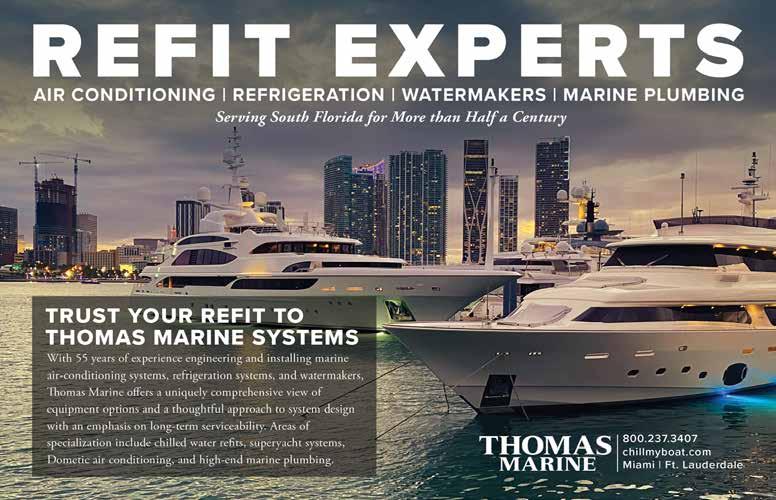


The yachting industry has positioned itself as a luxurious experience for ultrahigh-net-worth individuals. Everything is top-tier, five-star, and exclusive. The crew on board should fit the same criteria.
Hiring the right people for the right program is essential, but even more so is making sure the people working aboard are safe to be around and are who they say they are — that’s why all crew are background and reference checked…right?
Not necessarily, unfortunately.
“It’s very dependent on the person, their role in the industry, and the time [agents] have,” said Capt. Mark McDowell, founder and director of SuperYacht References (SYR). “They are often fairly basic, though, and they are rarely verified.”
Sometimes, it’s a matter of lack of time — captains are busy, and chasing this info can be time-consuming. That’s why he created SYR. McDowell wanted to help provide easily accessible verified references and background checks, in addition to wellbeing and mental health support, coaching, mentorship, and career guidance.
SYR is free for crew, who can upload their references, qualifications, and identification to an encrypted and dataprotected web portal. Crew can update their information as their career progresses in one online platform.
Conrad Empson, former bosun and “Below Deck Mediterranean” alumnus,

created CrewPass a few years ago to make the background check process easier for boats. Background checks are tough to perform in yachting because crew come from all over the world, and tracing their history can be an expensive, onerous job. “It’s a logistical nightmare,” Empson said. They have companies in countries around the world who can perform local checks and verify information for CrewPass.
Initially, when crew sign up for CrewPass, the company verifies their basic information to confirm their identity. They then perform a background check using all the data supplied by the crew. If they pass, they receive an approved badge. From there, crew can share their approved status without sharing any private information — controlling exactly who has access to their data.
“When they get down the process, the captain or whoever can order the full report details, all the checks that we’ve done, and the files so the private information is kept until the point that is required to be handed over,” Empson explained. “The crewmember has to provide their consent to be able to share that report.”
Some captains are skeptical about background checks due to the global nature of yachting.
“There is potential for a candidate to
omit a country they have lived in, in which case there is a chance [a background check] would not catch this,” McDowell said. “Provided the person states the country, though, it would be hard to hide any negative details. The dates of each boat they have been on, etc., and previous history should match up — and if there are any gaps, that would be looked into.”
While a reference check may not be the deep dive of a background check, they are equally important in building a crew career. However, they may not always receive the weight they’re due — and they have their own issues.
“References are a vital part of the recruitment process, and unfortunately, we do see agencies missing this critical step of the process,” said Nicola Morgan, director of Wilsonhalligan in the U.K. “We need to ensure that every recruiter in the industry is working to the same standard to ensure the quality of crew is as high as it can be.”
Morgan shares that all Wilsonhalligan candidates are reference-checked before shortlisting, and mostcrew agencies likely do the same. As Michael di Luca, managing director of mycrewagency in the U.K., said, they perform both background and reference checks on all candidates they put forward. “We do
every kind of check you can imagine,” he said, including visa, credential, reference, and background.
While a reference check should be straightforward, that’s not always the case. Occasionally references are incorrect, inaccurate, or even fake.
“We live in a world where things can be fabricated quite easily,” di Luca said. “You can’t take it as gospel — you need to scratch the surface. You need to drill down into it and actually verbalize these references and find out if they’re actually true.”
Don’t make up references or create fraudulent ones. It’s not unheard of — it might seem easy enough to ask a mate or two to give you a glowing reference, but most captains will diligently check all that information and chances are it will be discovered.
“Thankfully, it’s not such a common issue, but certainly a serious one, is candidates who have managed to forge a fake reference,” Morgan said. “Luckily, we have been able to decipher what has happened before it’s caused an issue, but it’s definitely something we are wary of.”
One issue Morgan hopes won’t become popular is people refusing to provide a reference because it’s against company policy.
“This can make it tricky as very often those who refuse to give references still want references for any candidates they receive,” she said. “The process would become extremely difficult if more and more clients decided to go this way.”
There will be the occasional negative reference. “This can be a very delicate situation as we always try to understand there are two sides to a story, and sometimes it can purely be due to a personality clash or similar,” Morgan said. She stressed that they remain objective, and as the go-between, they share all relevant info so that the client can make the best decision for their needs. “We do our best to ensure we are working in both our clients’ and candidates’ best interests.”
While you may be tempted to hide that less-than-stellar reference, don’t.
“Be truthful. Not disclosing information may look like you have something to hide in situations where there could be a perfectly reasonable explanation,” Morgan said. “Don’t be afraid to provide details, as references are also in place to help you find a position that matches your work ethic and experience.”
Di Luca points out that in yachting, references can veer from the professional to the personal, which is not wholly unexpected in the context of living and working with your employer or manager.
“Sometimes people can give embellished bad negative references,” he said, colored by personal interactions or issues — which is why you verify by going back further in the crewmember’s career history. “It’s a matter of fact-finding.”
SYR encourages crew to add more than one referee per boat.
“One must be the captain, or HOD, which gives a rounded view of

Privacy in the yachting industry is paramount. Crew are asked to sign non-disclosure agreements and can be forbidden from posting boat details on social media. But it’s maybe not so black and white when it comes to the job search. Data posted on public forums opens crew up to scams and data breaches. Crew need to consider their own security when posting their resumes online, and perhaps they really need to reconsider sharing their reference info, too.
“In our industry, it’s all too common to see the CVs of crewmembers posted across public social media groups with the direct contact details of captains, managers, and even in some cases, the owner, clearly visible in the reference section,” said Michael di Luca, managing director of mycrewagency in the U.K., in a LinkedIn post.
Data breaches occur often these days, and one carelessly shared detail could do some damage as there’s no telling where it ends up.
“If someone’s entrusted us with their personal details for the purpose of a reference, we really should be doing better in terms of safeguarding their information,” di Luca said. “We need to be a bit more aware of the details that we have access to and where we’re putting them.”
Maybe the best option for now is to remove those reference details from CVs and make them available only upon request, he suggests.
He encourages crew to research a crew agency to make sure it’s legitimate and capable of handling data securely, recommending they stick with MCAand MLC-certified agencies. He also suggests crew make sure the agencies are affiliated with a professional body where there’s regulation and oversight. Keep in mind these places will have access to your most essential information, like background data, passport details, and more.
a candidate's potential, strengths, and weaknesses,” McDowell said. They also offer self-assessments and offer mentors and coaches to help a candidate who may need to make some changes.
Captains also encourage that honesty. Maybe you and the previous captain didn’t gel — sometimes sharing that experience and telling your side of the story can mitigate the fallout.
Perhaps not so surprising in a world where fake is fine, all captains and crew agencies shared that they do not solely rely on written statements — they always call references.
“Maybe some crew don’t think crew agents actually do in-depth verbalized reference checks,” di Luca said. “But it doesn’t look good when a crewmember is sounding perfect for a particular role, but when you speak to the captain to verbalize, it doesn’t actually correlate.”
“Where possible, we will phone (rather than email) to obtain references — this helps us gain a better insight into the candidate in question (and can also often work better for our clients as some prefer not to disclose information in writing),” Morgan says.
Capt. Will Kaye of M/Y Coral Ocean agrees. He believes that written reference checks are often limited in the amount of honest feedback provided.
“People will not tell you the negatives. You need to extract that from them and other conversations because people don’t want to put negatives down on paper,” he said.
A verbal reference check allows for an open conversation and can reveal potential red flags in a candidate before they step foot on board. Kaye also recommends going beyond those references listed by the candidate to get a well-rounded perspective.
Capt Dùghall macLachlainn also tries to phone all references.
“Lately, especially with captains, I usually know most of them,” he said. “I expect them to be honest, as I am when I give a verbal reference, but I also usually include mitigating factors as not all crew suit a particular yacht, and very few crew should not be on board at all.”


Capt. Ryan Moore of M/Y Serenity points out that references are great, but some of the info may not apply. Sometimes you have to go with your gut.
“One also has to look at the type of program they are coming from,” Moore said. “For example, if they come from a laid-back private program and are looking to get into a fast-paced, busy charter program with little downtime, this is often a hard transition and could raise flags; the same could be said about moving from sailing to a power boat program.”
Moore likes to give these crew a chance; he usually knows the previous captain and can get a sense of how the crewmember worked. Moore’s current program has a crewmember that he took a chance on. This person’s background was in sportfishing, with very little yacht experience.
• Be honest and upfront.
• Make sure your references are accurate.
• Have a backup reference in case one falls through.
• Ensure all your dates and positions line up.
• Don’t use a fake reference.
• Keep all contact information updated.
• Get your references pre-verified, if possible.
“Our now-bosun excels and constantly impresses owners, me, and charter guests,” Moore said. “The program considers him a valuable team member — his can-do attitude and willingness to learn is always a plus.”
Capt. macLachlainn has witnessed the same thing. The previous captain on board didn’t think the relatively young chief officer would be up for chief officer on an 80-meter yacht.
“Within a couple of weeks, this has proven complete BS, and I am looking forward to going operational with him,” macLachlainn said.
Even if you do everything right, you could still get burned. Most captains will tell you they have been at some point in their career. Kaye once hired an engineer based on a reference check that described him as a “great guy.” That turned out not to be the case — he later discovered the referee was the engineer’s mate.
“This puts owners and captains in a predicament as it’s always hard changing out mid-season, and now you are overpaying someone who came highly recommended either by agents or word of mouth,” Moore said. And there’s the rub — it reflects poorly on whoever recommended them. “I personally have only ever written a few references (for my good crewmembers) and give honest remarks of strengths and weaknesses for all.”
“I think you take every reference with a pinch of salt,” Kaye said. “We’re not asking for the reference to be perfect, and a lot of the time, you’re looking for the right fit, and maybe it wasn’t the right fit on the last boat. I’ve taken on people where I’ve had an indifferent reference. A mixed reference is not necessarily a bad one.”
It’s obvious there is no perfect system. As Empson shared, someone he checked through CrewPass had serious criminal issues that flagged in his background check, so he was unable to be verified, yet Empson knows that same person went on to be hired on a superyacht. So those potentially unsafe people are out there.
“It just boils down to safety,” Empson said. “It’s just something that should be done, and it’s a small expense in the grand scheme of things. And it’s about the safety of everyone on board. These checks should be done as a standard.” ‹


•
•
•
•
•
•
•
•

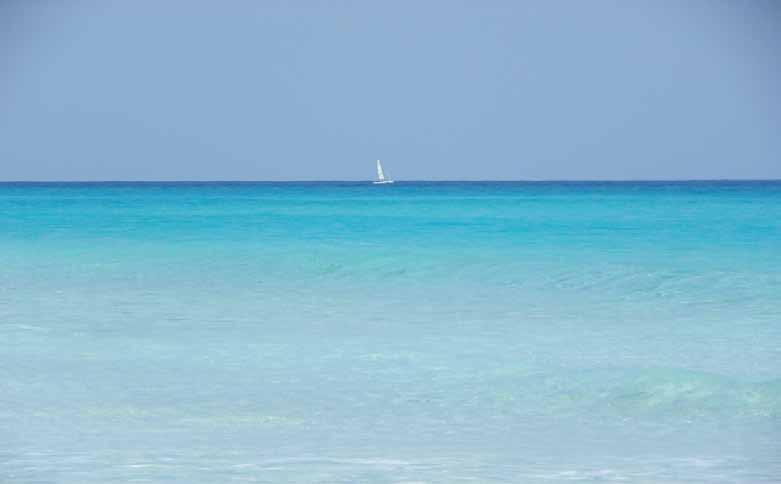



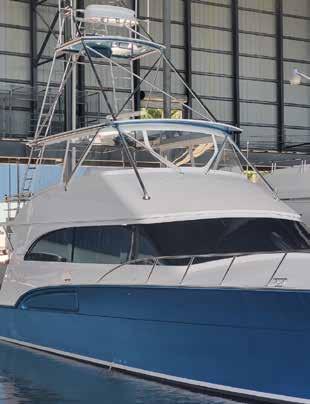
“it's the best job I've ever seen and it's on my boat”
Peter Bos, Legendary Marine



After a week of detailed yacht polishing, cleaning, repairing, and organizing, a group of crewmembers face-off at center court to do the opposite. Under night lights on a concrete street hockey court in South Florida, it is time to dress down, get sweaty and dirty, and play hard.
Several yacht crew join this weekly pick-up game in a recreational group that was started by Kevin Quirk in 2013. Quirk is co-publisher of Triton and a partner at US Marina Group.
“But my title is goalie,” he said with a laugh as he took off his face mask and wiped away sweat on a Wednesday night in February, just north of downtown Fort Lauderdale at the city’s Holiday Park.
On the field this week are a lot of friends — both fresh and former. Several regular yacht crew are out of the country on charter or owner trips, but First Mate Kim van Jaarsveld and Second Stew Kylee McLoughlin are in town. Van Jaarsveld works on M/Y Kashmir, a 133-foot

Splendor, and McLoughlin is on M/Y Dona Lola, a 130-foot Westport. They met about 10 years ago during school field hockey games in their home country of South Africa.
“We were not friends, we were rivals,” McLoughlin said. “Now we’re teammates.”
They are usually the only women on the court and are competent competitors even when the game gets physical.
“It is intimidating. We’re playing grown men here, some are double our weight,” Van Jaarsveld said.
“Kim and I, we’re good, we can play, and sometimes they’re shocked,” McLoughlin said.
“It does surprise them,” Van Jaarsveld added.
The two explain how the sport is like ice hockey but without the ice, with no padding, and a ball instead of a puck. It’s perfect for exercise, flexibility, and to work
out stress from life on board.
“It’s my time, it’s what I really enjoy,” Van Jaarsveld said. “It’s competitive and good for cardio. Lots of yachties are into pickleball, but a lot don’t know about this. I know Kylee’s and my love for the sport, and I bring my friends in.”
Each armed with an ice hockey-type stick, they wear white shirts hoping to be on the same team this week. Teams are differentiated with black or white shirts. There is some debate tonight as a couple of the guys have on gray shirts and a shirtless player laughs, “What color am I?”
The players are divided fairly randomly and change each time, sometimes even mid-game — if someone steps out or the required number of players are not on the court.
What makes a good player?
“They’re quick, they don’t look at the ball to make sure they hit it, they can go
around everyone, and they have speed,” Quirk said. “This is a very quick game with no time-outs; this is non-stop.”
At 63, he loves playing with the younger players.
“I can still torch them,” he said and added that he will play 25 more years until he is 88.
There was no official scorekeeper for years, but now there is an electronic scoreboard that somehow gets updated by whoever is closest when the ball gets past a goalie.
Mano-a-mano and looking a bit chaotic
about playing. “What level was everyone? Were they ice hockey players?”
He was told there were players of every skill, which dispelled his preconceived stresses about it.
“I instantly fell in love with the game. It’s great to blow off steam, and I met a good group that I never would have met before,” Simon said.
He now goes to every Wednesday possible and often introduces new crew, even making the hour-long drive from West Palm Beach when the yacht is at Safe Harbor Rybovich Marina.

to the uninitiated, three 30-minute games go by quickly, with short breaks in between. Aside from the fancy scoreboard, this is the opposite of the pristine, hightech, and stressful world of yachting.
Parker Simon, first officer on M/Y Calypso, a 126-foot Feadship, missed this week’s game because he was at work on the yacht in the Bahamas. He called to talk about his love of the game and his “fear of missing out.”
“I got FOMO when I saw videos from the bench of goals and stuff,” Simon said. “I wish I was there.”
He knew about the game because he played street hockey as a kid in cul-desacs in Philadelphia. As he grew up, his life veered toward working on the water: teaching sailing, a stint in the U.S. Coast Guard, as a crewmember on a Maine lobster boat, and the last eight years in yachting. His interests merged one evening after meeting Quirk when the yacht was at the 17th Street Yacht Basin at the Hilton in Fort Lauderdale.
“I was apprehensive at first,” Simon said





Yacht crew work and street hockey intersect, Simon said. Dynamic, fastpaced, and full of last-minute decisions, both crewmembers and hockey players have to adapt to what’s around, deal with people from all walks of life, remain flexible, and go about the task at hand. In a moment, he said, we all have to come together for a common goal, read situations, and figure out how to use that to win or have a good competitive game, or a successful yacht trip.
“We work together and focus on people’s strengths and weaknesses on the hockey court,” Simon said. “We shift our team’s style to make people feel welcome and to balance it out. We make it fun and inclusive for everyone. Everyone has to help out, at any time, everyone may be asked to rise to a role.”
“Like on board, if I know a deckhand is not as coordinated, I can jump on the tender and let him handle the lines when the boss is on,” Simon said.
In both yachting and hockey, he said, “We don’t set people up to fail.” ‹



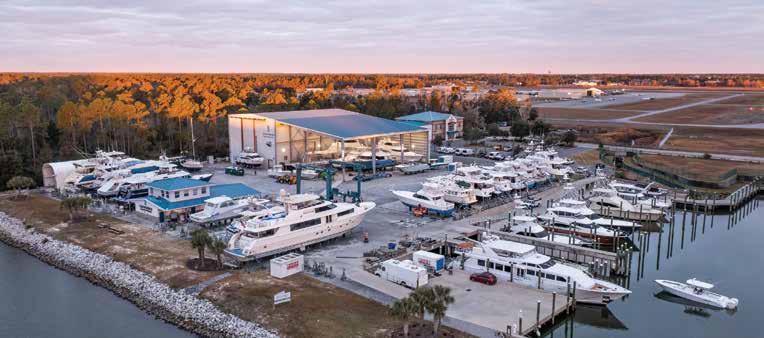
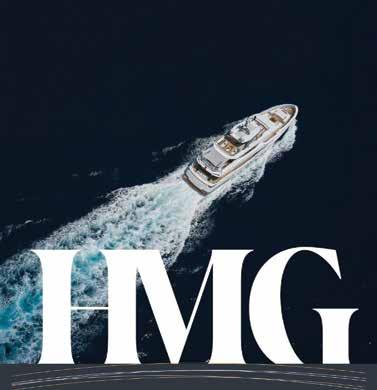


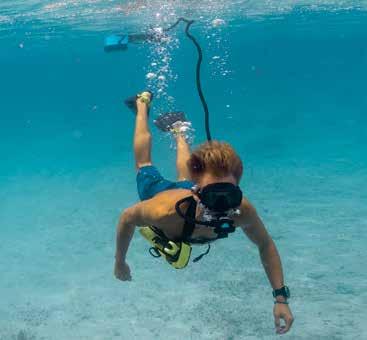

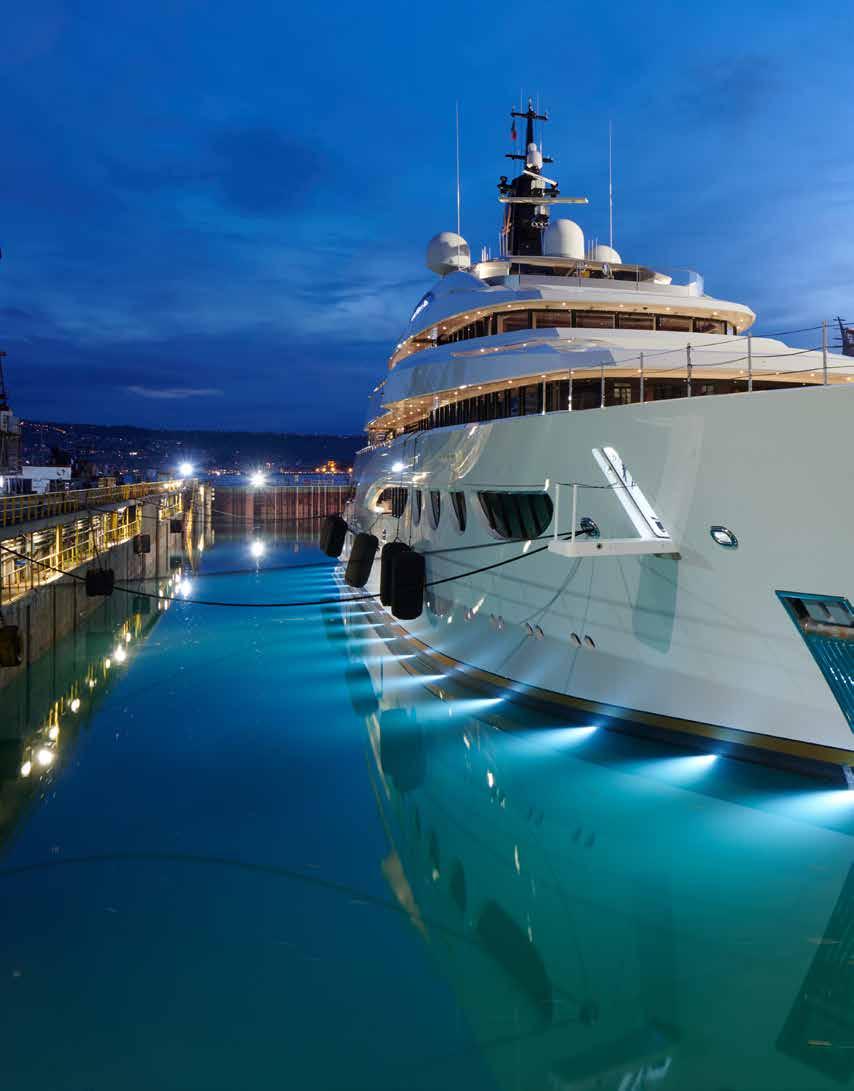
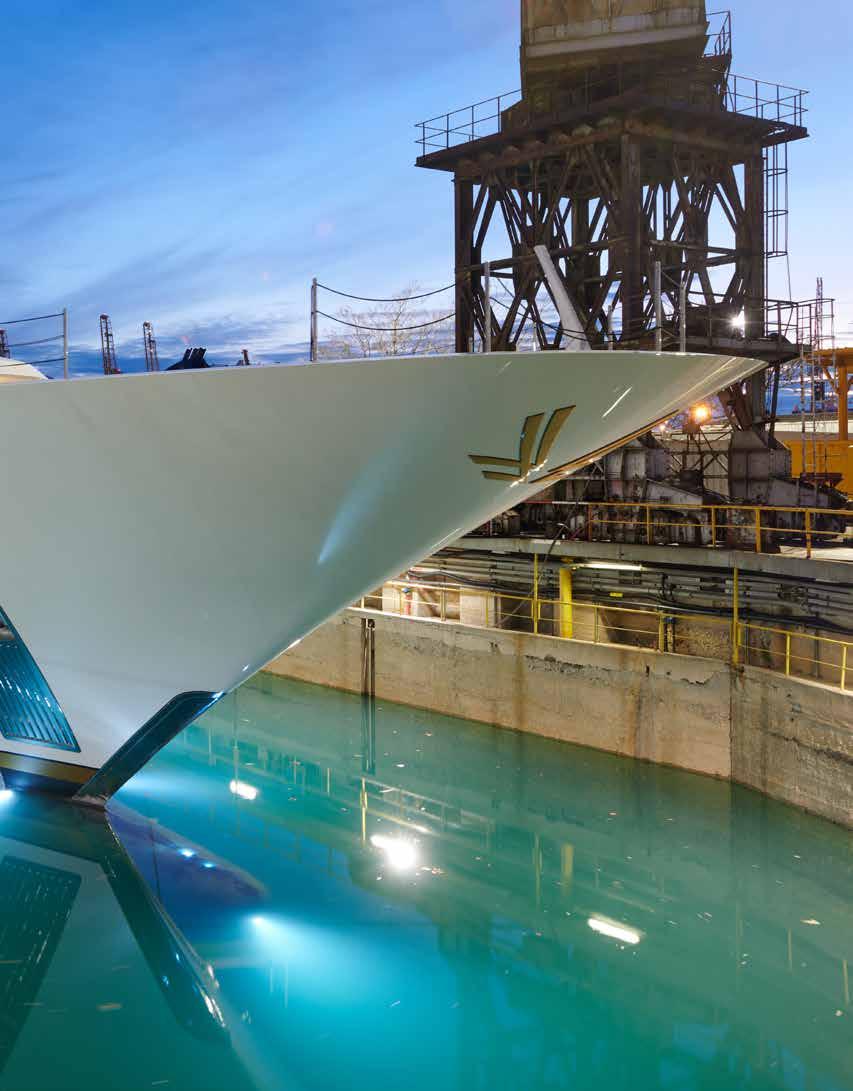
Triton’s refit section covers everything from new refit tech and major crew upgrades to the best ways to protect million-dollar pieces of art, nightmare yard stories, and more!
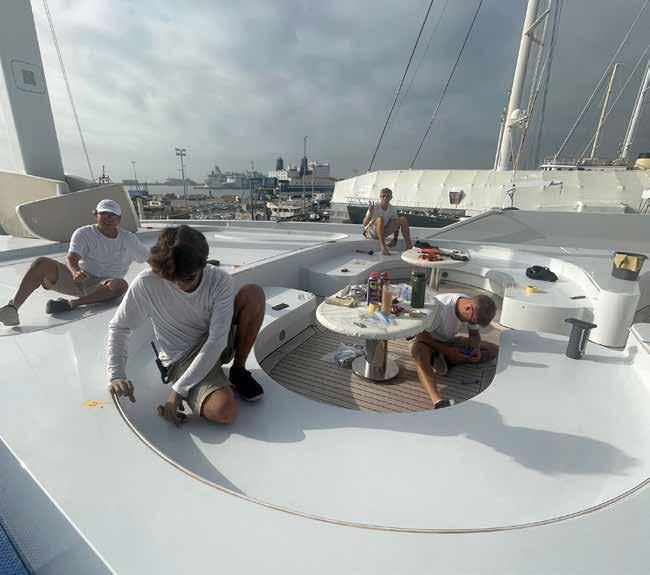
2008 Benetti 196' 11" (60 meters)
For sale with Samuel Watts of 37South Yachts.
MIMI completed a major refit alongside her Lloyd’s Special Survey in Palma de Mallorca. There was an exhaustive list of work completed, including rebuilding the engine, replacing or servicing the fuel tanks, painting the hull, stripping and rebuilding the galley, upgrading A/V systems, and fully rebuilding the windlasses. The crew share how these upgrades have affected their day-to-day life on board MIMI:
“Preparing meals for 20 people daily in a temporary kitchen was a challenge. Returning to a newly rebuilt, completely functional, and professional galley on board has made life much easier. The refitted galley floor is bright and contrasting — it feels like another life.”
— Chef Marc Riedmueller“In line with our classification society, MIMI not only rebuilt her critical machinery, she also undertook a large repaint to really show off her timeless shape. Now that we have seen a short amount of time post refit, the quality of the work put into MIMI is unmistakable. Having the newly painted hull has allowed the deck team to spend our time on other matters with far less input required to have MIMI in an impeccable state and an ease of cleaning.”
— Chief Officer Robbie Macgregor
2003 Benetti 180' 6" (55 meters)
For sale with Mark Elliott and Matthew Stone of IYC.
“NEXT CHAPTER completed an eight-month refit, where we completed a Lloyd’s 20-year survey and main engine overhaul to include the transmissions. As the refit was purely for compliance, we [found] projects and items that would
By Rebecca TaylorYachts routinely undergo maintenance and refit periods throughout their lifetime. Whether it’s to stay ahead of any major issues or completely alter the yacht’s style, a refit doesn’t just upgrade the yacht’s look and feel for the owner or charter guests — it greatly enhances life on board.
Utilizing YATCO’s extensive database, we’ve pulled the top yacht refits of 2023 and spoke to the captains and crew on board to see how the recent refits have helped to change and enhance crew life.
also benefit the owners and crew daily. We agreed to start with a paint job to boost the exterior [and to] make the daily life of the deck crew much easier and the whole crew proud of the way she looks walking up on her. For the interior, we set out to re-varnish most of the interior and new carpets throughout the yacht — giving the interior a new vibrance and appearance. Then, we sat with the two chefs and decided they needed new appliances, so we installed new ovens, new pizza ovens, and new fridges and freezers. As we are a world-traveling yacht, storage and provisions are always an issue on longer trips. A small bonus was new teak flooring in all the crew areas and new crew mess cushions to make the crew feel fresh and at home.

At launch and sea trials after eight months, I could see a new excitement with the crew and pride to bring a 20-year-old yacht back up to her high standards. Even for the owners’ first trip, which we are on now, I have seen a new joy being on board. Overall, a long eight months, but I’m proud to see that an 180-foot classic yacht can stay modern, reliable, safe, and [be] enjoyed by guests and crew alike as a new yacht again.”
— Capt. Caleb Semtner2008 Mariotti 175' 3" (53 meters)
For sale with Bart Kimman of Fraser Yachts.
“The majority of our refits are technical, not aesthetic. It is the kind of improvement that guests and crew alike will not notice until it stops working. Over the last three years, NONNI II has worked on the following extensive upgrades:
• Alarm Monitoring System (AMS)
— The AMS allows crewmembers to simply walk up to a screen and instantly understand the health of a yacht all in one place. Over time as the AMS degrades, alarms stop showing up and this greatly adds stress to the crew as one must manually inspect every single piece of equipment visually. Since the installation of our new AMS, the chief engineer and I have been able to finally sleep peacefully at night, as we know that a reliable system will alert us should something need attention.
• Power Management System (PMS) — The power management system’s main objective is to always ensure the ship has uninterrupted electrical power. On a ship without PMS, the ship would be blacked out until the engineers manage to restart the generator or start and receive load from the backup generator, while with a PMS, this happens automatically; guests and most crewmembers would be completely oblivious of this apart from the watch keeper. This greatly helps my crew as uninterrupted rest hours, especially during heavy charter, is crucial in allowing us to give the best service.
• Air conditioning system — By engaging the system from all angles, we eliminate the presence of mildew and mold
(especially in warm and humid countries such as Thailand), which is great for the health of crew and guests alike. Sleep and the general working conditions of the crew and guests have all improved as the environment is more comfortable. Renewing insulation for the chilled water system reduces condensation of the air surrounding the chilled water pipes, which can potentially lead to electrical issues and pose a safety threat.
• Navigation system — The benefits of keeping an updated navigation system with the latest technology cannot be overstated. NONNI II has upgraded our dual independent ECDIS and replaced both radar scanners in 2022. This has greatly helped officers on board to supplement their situational awareness of their surroundings. Having instant information and access to advanced tools give the bridge officers confidence, especially since NONNI II frequently performs out-of-the-ordinary runs in exotic locations.
• Shore power converter — We have since replaced our converter during our 2022 refit, and it has given all the crew peace of mind. Never should a crewmember have to worry about an explosion when doing a routine job such as transferring from generator to shore power.”
— Capt. Nigel
Tang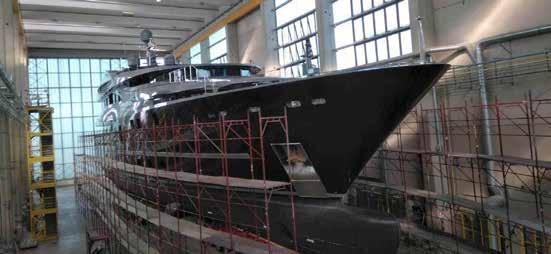

The yachting industry has woken up to its responsibilities and is working on providing a better pathway for the future. In the newbuild sector, changing mindsets and greener innovations are evident, but the spotlight is now on the existing fleet.

Within the circular economy model, the essential R’s concept has become necessary for creating a sustainable future, with applications across every industry — including yachting. From “Refuse, Reuse, Repair” to “Recycle,” the yachting industry is beginning to take strides in its own “R” — refit. Whether it’s anticipated regulation on the horizon or pressure from outsiders, the industry must improve its credentials across the entire fleet to ensure it follows the best path to the future.
The players in the refit sector have increasingly created conversations and opportunities to future-proof the fleet, from large-scale propulsion conversions to small-scale and sustainable interior adaptations. Refit shipyards are at the core — many have implemented multiple procedures and changes to ensure they align with sustainability goals. One way they are beginning to do so is through utilizing renewable energy sources, enabling them to be greener and increase efficiency.
“We have several ongoing projects and developments that reflect our endeavors to support more sustainable yachting. We have used more sustainable technologies and renewable energy in our shipyard and related facilities, including LED lighting and solar panels,” said Eleonora d’Ermo, head of marketing and communications for the
Mediterranean-based Palumbo shipyard group. “By installing solar panels, we have reduced CO2 emissions by 13,400 tons in the last five years.”
Renewable energy is also being generated in Italy, with Amico & Co helping lead the change.
“We installed a 4,300-squaremeter solar farm in the summer of 2023, producing around one MWp of renewable source energy, self-powering 53% of all of the energy consumed for shipyard and marina works,” said Manuel Di Tillio, Amico & Co’s technical and sales manager.
Aside from energy usage, other innovative projects are becoming more popular to reduce impact. The Mallorca-based shipyard Servicios Técnicos Portuarios (STP) welcomes innovative protective measures during paint jobs, replacing the commonly used single-use plastic sheeting with more environmentally beneficial metal panels. Managing waste within a refit is also a crucial facet of sustainability and is one that the MB92 shipyard group emphasizes.
“We continue to enhance our reuse and recycle solutions at both sites with a commitment to reducing waste generation in general,” said Txema Rubio, MB92 group commercial director. “Initiatives include a new plastic protection management policy to extend the life of protection used on projects.”
While these shipyards champion greener approaches to refit procedures and projects, they are also making progress in enhancing the yachts’ credentials. While several builders are making progress in reducing new yacht emissions, ensuring that existing yachts are taken into the equation is vital.
“The existing fleet can benefit from projects that reduce energy usage on board, particularly from repowering projects with lower emissions and higher energy efficiency, such as hybrid propulsion retrofits,” Di Tillio said.
There are still challenging technical and financial hurdles for many yachts in the refit period to upgrade propulsion
systems, but smaller wins are possible.
“Changes to the HVAC systems, galley and laundry equipment, sewage treatment plants, and the adoption of LED lighting are impactful solutions carrying notable benefits,” Rubio said.
When selecting new materials for refit projects, decision-makers must consider all options and choose better. D’Ermo suggests using eco-friendly paint when giving a yacht a new paint job.
The refit sector is no longer just about repairing. This is now a pivotal moment and opportunity for the refit industry to redefine efficiency and prolong yachts’ life cycles while minimizing their environmental impact. ‹

With shipyards in Barcelona and La Ciotat, the MB92 Group is at the forefront of sustainable practices within the superyacht refit industry. As a partner of the Water Revolution Foundation, the shipyard group integrates various sustainable practices. Both shipyards have extensive recycling options and sea bins installed, while they also pioneer projects for anti-pollution and wastewater treatment plans. To ease the transition to a better future, the group also launched its “Refit for the Future” initiative, underscoring its commitment to providing yachts with an easier transition to more sustainable yachting. The group actively releases sustainability reports, providing a transparent account of its practices and impact.
Better Operations
Crew can use the refit period to implement better operational practices that align with sustainability. Both interior and deck teams can use a refit to replace conventional cleaning products and other yacht products with eco-friendly alternatives. Training sessions with companies such as Environmental Training for Yacht Crew (ETYC) can also be organized to further educate crew on best practices.
Follow the R’s
Refit periods often entail extended projects with contractors, providing crew with an opportune time to continue with other yacht maintenance projects. When carrying these out, crew should adopt the principles of the R’s. Instead of immediately discarding materials or equipment, crew should focus on repairing and reusing wherever possible. This mindset ultimately minimizes unnecessary waste and contributes to a more sustainable refit process.
Undoubtedly, various decisions must be made within a refit project, many of which will fall to the heads of departments. Crew can help significantly reduce the yacht’s future impact by making better, more eco-conscious decisions, whether it’s through opting for more sustainable materials, alternatives for antifouling and toxic paints, investing in energy-efficient technologies, implementing better systems and equipment to reduce energy consumption, or installing filtration systems to reduce single-use plastics.
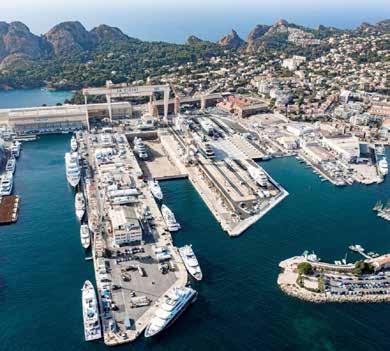




Refits can seem overwhelming to a new stew. Something to keep in mind before the refit is that it will be a very different job than a stew might be used to — when guests are on, a yacht stew’s main job is focusing on service and the overall guest experience. During a yard period, no guests are present, and this can be challenging for some stews. There are things to keep in mind for all crew when planning for a yard period, but these tips focus on the interior crew, specifically the yacht stew.
Before the refit begins, a yacht stew must prepare the interior. This can include using runners or blue diamond floor covering to protect the floors that will have the most traffic. Make sure to cover the furniture in plastic wrap if interior work is scheduled.
“I’d say the one thing I wish I knew before going into my first yard period as a stew is how much I missed moving. The busyness level that we yachties are used to dramatically decreases and that can be hard on those who like the thrill of moving and keeping busy! But that time is of great value as it’s such a good way to get reorganized [and] get the things done you can’t normally [do] when guests are on board,” said Deck/ Stew Natalie Riera of M/Y Freedom. Riera went through her first yard period on a previous yacht.
Stews are used to being busy with

guests around the clock, but yard periods can be hectic in their own way — if you know what needs to get done. The interior crew can take this time to complete projects that have been pushed to the side during the busy season and brainstorm new ideas. Chief stews should prepare their interior team for a yard period beforehand so new crew don’t feel out of place when it begins.
A refit period is a great time to reinventory and reorganize all the cabinets and interior spaces. After sorting through everything on board, this is also a great time to get rid of broken or unnecessary gear, and purchase anything needed. Go through all the drinks on board and get rid of expired products. Re-stock necessary items and clean out the fridges. It would be beneficial to turn off the drink fridges if possible and clean them out. Most of the exterior mini fridges and ice makers will get dusty from being in the yard, so these can be turned back on and filled at the refit’s conclusion. Some yachts have storage units, and this can be an excellent opportunity to reorganize them.
“During a yard period, use that time


to learn new table-setting ideas, like new napkin folds, explore new party themes, or crew costume ideas. This is also a good time for chefs to upgrade their training — maybe explore new desserts to bake for charters, inventory the baking and cooking gadgets, [and] replace old and worn napkins and aprons,” said Chef Arlene Meyers of M/Y Magnum Ride when asked about a chef’s perspective during refit.
A refit is a great time for continued learning, whether it’s courses at a school or even a chief stew demonstrating new techniques that can be used on the yacht. Although a yard period can be a break from the usual yacht activity, the stew’s job is still significant during a refit. It’s important to have someone in charge of the interior to keep track of work being done and to maintain the regular cleaning schedule. Once the refit ends, stews must take down all the plastic coverings and thoroughly clean the interior before any owners or guests return. If possible, this is best done once you leave the yard to decrease the likelihood of dust returning. ‹
JULIE EMMONS IS A CHIEF STEWARDESS AND HAS WORKED IN THE INDUSTRY FOR FIVE YEARS. WORKING ALONGSIDE HER HUSBAND, CAPT. BRENDAN EMMONS, HAS ALLOWED HER TO DISCOVER NEW DESTINATIONS AND ENJOY HER TIME ON THE WATER.






Whether it’s to fulfill IMO guidelines or to speed up your time in the yard, what up-and-coming technology can you add to your refit?
By Erik SpeyerIn the yachting industry, the mandate for diesel particulate filters (DPF) is here due to timelines set by the International Maritime Organization (IMO) for implementation, with enforcement usually imposed by class. Unlike routine maintenance tasks, installing a DPF system is a significant undertaking.
The procedure involves scaling up burners and filters according to horsepower, often requiring the removal of existing exhaust systems that are often much smaller than their newer counterparts. This means that engine room space becomes even more precious.
Choosing a provider for the DPF system is the first step, and availability and schedule often dictate choices. Companies like DeAngelo Marine Exhaust streamline the process using advanced technologies like handheld 3D laser scanners to map engine rooms — often sending technicians to meet vessels to do the mapping beforehand. By prefabricating control boxes, electrical controls, and filter elements, and customizing piping to fit the constraints of the engine room, they can speed up time in the yard. Once plans are finalized, vessels can expect an average yard time of two weeks for installation.
Although associated with commercial vessels, the adoption of DPFs is not limited to large vessels. Even smaller generators, especially those operating in sensitive environmental areas, are investing in this technology to clean up exhaust emissions and enhance the industry’s image.
Budgeting for DPF installation varies depending on the scope of work, with estimates ranging from $200,000 to $300,000 for main engines. Although DPFs are designed to work with main engines, it’s important to note that it is possible to repower later while keeping existing DPFs in place.
While it’s challenging to quantify the number of yachts that have adopted DPF technology, it’s clear that there is still significant progress needed in meeting regulatory requirements within the industry.
Planning for DPF installation should be a priority for owners and captains, particularly with impending regulatory deadlines. Not only does it ensure
compliance, but it also demonstrates a commitment to environmental leadership, setting the pace for a cleaner and more sustainable maritime industry.
With vessels often facing tight schedules and never-ending to-do lists, time and efficiency is essential in the yacht refit world. Amidst this challenge, the integration of cutting-edge technology has emerged as a game-changer, particularly in the form of 3D scanning technology.
At the forefront of this technological revolution are companies like AME Solutions, a pioneering company with more than three decades of expertise in applying the latest advancements to solve marine maintenance challenges.
3D scanning technology has ushered in a new era of efficiency and accuracy in yacht refits. By employing handheld 3D laser scanners and tripodmounted devices equipped with LiDAR technology, users can meticulously map and capture every detail of a vessel’s interior and exterior spaces.
A primary application of 3D scanners in yacht refits is in the planning and execution of engine room renovations. These complex undertakings often require precise measurements and detailed schematics, which traditional methods struggle to provide within tight timeframes. With 3D scanning, engineers can create comprehensive digital engine room models, streamlining planning and minimizing installation errors. They often do this by flying engineers to meet the vessel in a foreign port ahead of their refit — allowing all the prefabrication and tedious engineering tasks to be completed before the yacht arrives.
hull structures, propeller shafts, and stabilizer systems. By accurately capturing the dimensions of these elements, fabrication and integration time in the yard is reduced significantly. Lastminute tasks, such as re-aligning a leaky porthole or deck hatch, may now make their way onto the “done” list.
The benefits of 3D scanning extend beyond refits, as AME also leverages this technology for new-build projects. From aligning propulsion systems on new Coast Guard cutters to monitoring structural integrity during hull repairs, 3D scanning plays a central role in ensuring the safety and reliability of marine vessels.
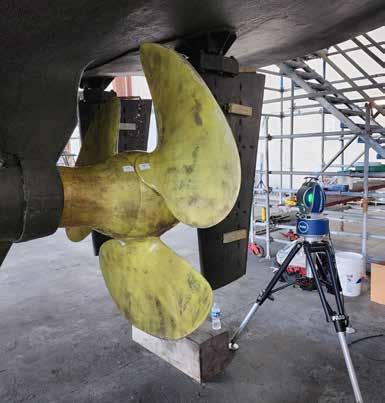
AME’s motion-amplification technology utilizes high-speed cameras to detect imperceptible vibrations and movements in machinery. This approach allows for early detection of potential issues, mitigating the risk of costly downtime and repairs.
The versatility of 3D scanners extends beyond engine rooms to encompass various onboard components, including
As the yachting industry continues to evolve, the adoption of 3D scanning technology is poised to grow. From optimizing refitting processes to driving design and engineering innovation, 3D scanning offers myriad benefits that are reshaping the yacht refitting landscape. ‹

The boat is heading into a refit, and it requires coordinating many moving parts. Figuring out what to do with the fine art on board is an important element of that process.
“The most important thing is to really plan ahead,” Susan McGregor, founder and CEO of Fort Lauderdale’s Bellissima Fine Art & Services, which handles packing, removing, and storing fine art, said. “It’s not the first thing people think about, but it’s usually the first step in the refit process.”
First, a captain must determine whether the art is staying on board or if it needs to be removed during the refit process. If it stays, where and how will it be kept? If it goes ashore, arrangements need to be made to have it packed, collected, and stored.
But it’s not as simple as calling up a moving company and renting some storage space.
“The most hazardous thing you can do for a work of art is to move it around,” Pandora Mather-Lees, an Oxfordeducated art historian with more than 20 years of experience in the commercial art sector, said. Mather-Lees has also worked extensively with superyachts and created Art on Superyachts, which helps educate and advise yachts on their art needs.
The first question to answer: Does the art stay or does it go?
“It depends where the vessel is, the details of the owner and where the owner is, [and] how long [the yacht is] going to be in refit,” Mather-Lees said.
It might be the easiest option to keep the art stored on board, but there are things to consider before deciding.
Mather-Lees recommends a safe room for storage, and that the art be properly crated, including sensors that can show if it’s been dropped or tampered with. The vessel’s crew — provided they’ve had training — could likely handle moving the art to the safe room.
Every movement is an additional risk, McGregor cautions, and the art could be subject to knocks just being aboard.

Plus, the normal temperature on board could be affected if the air conditioning status quo is altered or turned off at any point. “The artwork is sensitive to the environment,” McGregor said.
If the yacht is small, storage on board likely isn’t an option. The refit’s scope may also preclude it — if all parts of the vessel are subject to work, this will not be the best solution.
“Our professional recommendation is that you want to mitigate that risk. Especially if it’s high-value art,” McGregor said. Remove it before the chaos starts and all the various vendors start moving aboard. Bellissima’s facility is in Fort Lauderdale and its art handlers take care of all the packing, moving, and storing. It’s a climate-controlled, secure, category-five hurricane-rated facility, and it’s also monitored 24 hours.
“Ultimately, the captain is going to be responsible for the items on board,” Mather-Lees said. “So he’s going to want to keep that under lock and key, as it were, and know that it can be put somewhere secure.”
Mather-Lees and McGregor both generally recommend removing the art to secure storage ashore. First, you need to know where you’re going to be when you do so, as some areas are easier than others.
“It would depend on what the safest option is, where the owner is, and every case is really different,” Mather-Lees said. Typically, the art should be moved into specialist fine art freight storage and would require a professional art-handling logistics company to do so, someone like Bellissima in Florida or Hedley’s Group in Europe, which Mather-Lees previously worked for. As Mather-Lees pointed out, “From the security of the conservation of the art stance, and the integrity of the piece itself, the less distance it’s moved, the better.”
Capt. Will Kaye of M/Y Coral Ocean shared that he’s only once moved art ashore during refit, and he hired a specialist art dealer to do so. The art was moved back
aboard after the refit was complete.
Some areas surrounding yards have better storage options, but that’s where the yard can help with logistics. You’d need climate-controlled, secure options, which can generally be found in most larger cities. Some ports, Mather-Lees said, have freeports, or you could find similar bonded storage facilities or warehouses.
A free port is a zone considered

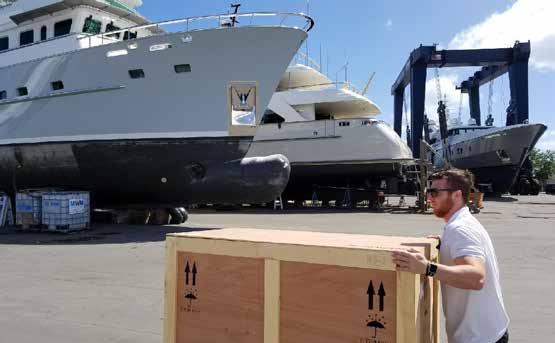
outside of a country’s customs territory, while a bonded warehouse is considered legally part of the territory. Art stored in a bonded warehouse or free port will not incur customs duties or taxes if the artwork moves only between the vessel and the facility. Make sure to doublecheck all the local regulations.
Another factor to consider is the vessel’s tax position. “The family office would have to give a holistic view of [the art] and the entirety of the owner’s assets, and whether offboarding pieces in a particular place would put those assets at risk from a tax perspective,” Mather-Lees said.
As Mather-Lees explained, you need to consider all angles because if the yacht owner died while the art was ashore during a refit, it could leave the owner’s family dealing with a very large inheritance tax situation, depending on the location.
Other things to consider are the artwork’s cultural heritage and any export
regulations, in the sense that the vessel may be carrying artwork that includes endangered species, which could be a rosewood frame on a painting. Customs will typically confiscate these items if they’re not handled correctly.
The same applies if the work is considered a cultural treasure. A new regulation in Europe, EU 2019/880, was introduced to help eliminate art trafficking, meaning that any archaeological antiquities more than 250 years old or certain other objects with non-EU status over €18,000 require an import license into Europe. This license is very hard to get, Mather-Lees said, because you must prove that the piece was exported legally from its place of origin.
Once you’ve decided where the boat is going and where the art will be stored, you must ensure the insurance is in order.
Stews should be trained to clean and maintain the artwork on board. Crew need to understand the value of the work aboard and what the risks are. “A one-day workshop with me could save millions of pounds,” said Pandora Mather-Lees, who offers training sessions for yacht crew on board, in the yard, or wherever is convenient, through her company Art on Superyachts.
“Any cleaning can potentially damage artwork, but it’s unavoidable as crew need to keep things clean,” said Mather-Lees.
She boiled down the basic cleaning tips she recommends to crew:
1. Avoid chemicals.
2. Use dry methods — dust as opposed to using a wet cloth or wiping with water.
3. Use soft brushes regularly to avoid compacted dirt, which may require other removal methods.
4. Do not clean in a rush. Take your time.
5. Note the artwork’s condition — is it in good condition, or has it been damaged?
6. Cover the artwork with a soft blanket when the boat is not in use, if possible.
Every two or three years, the art should be re-evaluated for insurance purposes.
artonsuperyachts.com
“It’s a minefield right now when it comes to refits,” Laura Sherrod, director of yacht insurance at Newcoast Insurance Services, said. “I’m not sure that everybody pays attention to what the policy actually says.”
There are also shades of gray swirling about the word refit and what it really means. “We talk about refits a lot in insurance because it’s a big issue,” Sherrod said. “You know, where it transitions from, ‘We’re just going in for a yard period’ to ‘We’re going in for a refit.’ There’s a gray area, and some of the policies really do get very specific about what the difference is. Some policies do not.”
The bottom line is that the captain must notify the insurance company when they’re considering a refit and the scope of that refit. They can sit down with their insurance broker and go through their policy. As Sherrod shares, every single insurance carrier uses different policy language when it comes to refit — in fact, she noted, refit is not even defined in most U.S. policies.
Sherrod agreed with Mather-Lees that the best place for the vessel’s valuables is usually on board, but in a major refit event, they likely would be removed.
“Each underwriter handles the issue of personal effects a little differently, and then the separation of the definitions between ‘Personal Effects’ versus ‘Fine Art’ even more so,” Sherrod said.
While the furniture and fixtures would usually fall under the vessel’s equipment policy, the fine art would fit under the fine art clause, where the artwork would be separately scheduled and insured. Removal and storage would normally be spelled out in this clause.
“It all comes back to the actual wording on the specific carrier’s policy,” Sherrod said. “Some policies include fine art within the personal effects; some policies exclude it. If the carrier covers fine art, they still may have a low limit. Some policies limit fine art to $30,000 until the item is declared and agreed.”
In Kaye’s experience, he once had to take out more insurance for items that were moved off the boat; his other experience was that the removed goods were covered by existing insurance. “It’s just really a case of checking with
insurance before you do and see what your policy does include and what it doesn’t,” Kaye said.
McGregor’s Bellissima also offers insurance. The vessel’s insurance company needs to know what’s moving off the boat and details about where it’s going, but if the vessel does not have insurance, she offers a transit and storage insurance policy.
Before the art is removed, take inventory of the artwork on board, to be either completed by the crew or the removal specialists. McGregor recommends the crew take photos of all art as it is usually displayed on board. Note its dimensions, where it’s located, and its value.
This list is shared with the removal company, like Bellissima. They come aboard, and their trained personnel handle the packing and moving. As each item is packed, it’s tagged, and a condition report is issued, which details how the piece currently appears and notes any damage. This is vital in case there’s additional damage or questions in the process. Both parties usually sign to confirm they agree on the report.
“That’s very important because that owner or client should expect to get their artworks or objects back in the same condition they were when we took them,” said McGregor. “We’re very detailed, and it also gives us and the crew a common document to talk about.”
Having the art ashore in storage might also provide the opportunity to do some conservation work on the pieces. McGregor allows this at Bellissima if permissions are clearly spelled out. McGregor also works with conservators and appraisers that she can recommend. Hedley’s Group sometimes allows this too.
Key to all the chatter about what to do with the artwork is keeping the information quiet when there is a final plan. Between the captain, the family office, the management company, the insurance company, and the shipyard, there are many fingers in the pie. But for security reasons, information about the art must be kept as quiet as possible.
“You only want to have the people know who need to know, so you need to tell enough people that you can get it done safely, securely, on time, and without any hitches, but if you [tell] too many people, there’s a risk you’re going to get hijacked,” said Mather-Lees.
The captain is ultimately responsible for the art, and it should not leave their sight until it’s safely away. ‹

A Picasso went missing aboard M/Y Coral Ocean (Coral Island at the time) while she was on the dock in Antibes in 1999. The painting, “Buste de Femme (Dora Maar)” from 1938 is worth an estimated $28 million. It was reportedly hanging in Picasso’s home when he died.
Right before COVID, the Picasso was recovered. According to “The Guardian,” it was believed to have changed hands 10 to 20 times, circulating in the Dutch underworld, in the 20 years it was missing.
Although the details of the theft remain a mystery — the captain had stored and locked the Picasso into a stateroom and had the key — a Dutch company contacted Capt. Will Kaye aboard M/Y Coral Ocean and asked if they could attempt a reconstruction of the crime. They brought drones to the area and took images of the vessel in Antibes to attempt to figure out how the theft occurred.
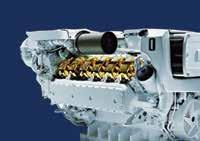

Seafarer





Captains, officers, and crewmembers are often a yacht owner and boat designer’s biggest asset in the realm of superyacht refits. Capt. Sandy Yawn’s famous, “Teamwork makes the dream work,” saying was echoed by other “Below Deck” captains and officers when speaking with Triton
“The owners really need to be educated,” Yawn told Triton. “Because it’s really all about budget.”
The gargantuan task of re-imagining and breathing new life into a vessel is a delicate dance between taking safety and operational functionality into account, along with aesthetics and crew needs — all while staying on budget, which can be a daunting task within itself.
“It’s about making sure that you as a captain get the budget right. Because if the budget isn’t right, then there are some jobs you just can’t finish,” Yawn added. “It’s also about controlling your crew, meaning the different departments will have their own agenda, so you need to make sure that there’s a good balance across departments.”
Bottom line, Yawn believes that before embarking on a refit, it is important to know your budget, which includes pricing everything out.
“When the workers come on board, do you track the cost by the time they walk on board and what time they walk off? You make sure that they are actually on
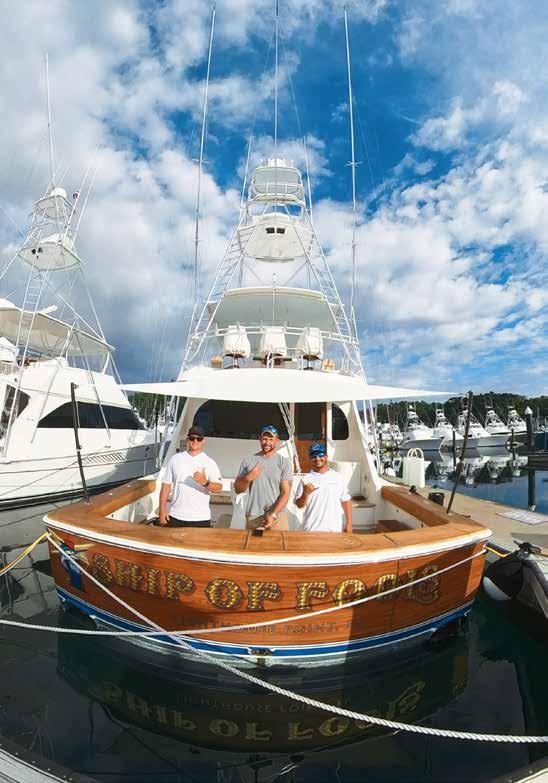
the boat working based on their billable hours,” Yawn said.
Prioritizing the complexity of engines, equipment, and regulatory considerations are vital, but so is safety and operational functionality — which usually takes precedence for most captains. Capt. Jason Chambers from “Below Deck Down Under” can’t emphasize enough that while the captain takes a lead position in a refit, they also need some downtime in between seasons. A good project manager can help bridge that gap.
“Captains need to be involved in refits to ensure the owner requests and maintenance work is completed appropriately and to the best standards,” Chambers said. “The benefit of engaging a good project manager is to streamline the refit process and orchestrate the scheduling of contractors within a tight schedule.
“The project manager and captain need to cooperate effectively, meet regularly, and communicate throughout the refit process,” Chambers continued. “The end goal is ultimately to have the refit completed on
time and ready for the upcoming season.”
Both Chambers and Yawn agreed that the vessel should establish strong relationships early to meet flag state requirements. A good relationship can help keep the regulatory process streamlined and hopefully avoid delays.
Once key players were established, the “Below Deck” captains and officers, regardless of department, agreed that safety updates and upgrades are always paramount. Capt. Kelley Johnson, who was a deckhand and bosun on “Below Deck,” said implementing the latest technology, especially when it comes to safety, is key to a successful refit.
“Using Starlink for communication ensures reliable contact even in remote seas, improving emergency responses and weather tracking,” Johnson said. “Modern navigation tools aid in precise routing and avoiding collisions, while an engine refit enhances reliability and efficiency.”
Upgrades like these make ships safer for everyone on board, which is why it’s important to make sure refits aren’t always focusing on the interior of the yacht.
“I have seen too many refits that just touched the interior for the guest areas — that never ends well for the vessel and its crew,” Johnson said.
Johnson also thinks the “below deck” world should be considered and refit designers should strive to create comfortable crew cabins and functional crew spaces. As a former deckhand, Johnson has enough experience knowing what makes for a peaceful and functional crew area.
“The aim is to create an environment that reduces the stress of life at sea,” Johnson said. “Such considerations in a refit significantly improve the quality of life on board, leading to a happier, more rested, and therefore more efficient crew.”
Chief Stew Katie Flood, who worked for Yawn on “Below Deck Med,” said while the outcome is the end goal, she wished the refit process was smoother for the crew. Flood’s current superyacht underwent a full, year-long refit, and she said the result was magnificent but described the process as being pretty bumpy, especially for the interior.
“The big thing people don’t really realize is we have to take everything off the
boat,” Flood said. “I think we had like 17 containers or something in our shipyard with all our stuff. The same for the deck crew — they have to take out all the toys, beach set up, all the tenders, all the doors, everything.”
“Sometimes we won’t have water or power in some parts of the boat or the A/C will be turned off,” Flood said. “As a chief stew, it would be really nice for the captain to understand how much work it is for us.”
Chambers supported Flood’s reflection
on how refits directly impact the crew during the process, too. He said that owners should have a good location for crew to rotate out for a well-earned vacation and ample onshore assistance. Also important to note, according to Chambers, the process for importing parts against taxes and crew visas all play a role in choosing a location.
“At the end of the day,” Yawn said, “it’s about the money you spend and the quality of work — it really is dependent on the entire team.” ‹
“Captains need to be involved in refits to ensure the owner requests and maintenance work is completed appropriately and to the best standards."
— Capt. Jason Chambers
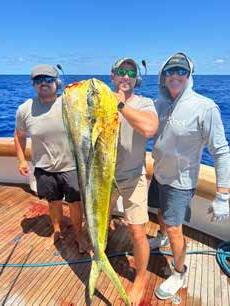

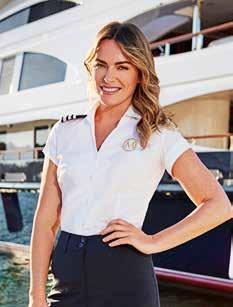


“I had to stabilize a structure fail on the way up from the Caribbean. We’re supposed to go to the yard and do work on the boat and so we had a structural failure on one of the struts. We locked the stabilizer, and got into the yard, and started to explore, pull the stabilizer, and we started to ultrasound the boat. I ended up cutting about 25% of the boat’s hull out and re-engineered and restructured the boat. We probably did about six months of work in about three and a half months. We had welding crews working 24/7.
Being a captain, it’s not about walking the yard and going, ‘Hi, hi.’ I really try to know every single contractor’s name because they’re working on my boat, they’re human, and they’re doing a job for me and they’re putting their heart into it. So, then the guy had a birthday, and he was still there welding the hull that day. It was a Saturday, he was so committed, and we got him a birthday cake underneath the boat, set it up, had cake, and carried on working!”
— Capt. Blaine Watson.
“The hull was washed with contaminated water just before a paint shoot. Within three months, it was covered in micro blisters. The yacht never claimed on warranty and is still running with the paint today.”
— An anonymous captain.

“I joined a yacht I went to run in Italy. It was an Italian built boat, and it had been serviced in the winter. I joined it for the season, and one day my engineer said to me, ‘That doesn’t look right over the starboard side of the boat.’ I had a look over the side, and the stabilizer was sticking out about 90 degrees. I said, ‘Well, you got a facemask; let me know how it is.’ He jumped in and the stabilizer was loose. It had just been serviced and we took it off and dragged it on the back of the boat.
Triton asked captains to share their most peculiar, strange, and stressful refit stories they’ve gained over their time spent in the yard. Here’s what they revealed! M/Y KAOS AT LÜRSSEN’S REFIT YARD. PHOTO BY KLAUS JORDAN.We hauled out the water in STP in Palma and the Quantum guy that came down was very efficient. He realized what had happened was that there is a very specific block type, thread lock, that you should use when you put the nut back on. The Italian service agent put it back on with grease. Unsurprisingly it fell off.”
— An anonymous captain.
“Back in the day, people used to do work in the marinas, before all the EPA clampdowns and everything else — as long as you didn’t make a mess. We had a paint company come in, and they were doing the main deck, painting all the way around from the aft deck, around the port side, and on the starboard side of it. We had all the bits and hardware taken off and the painters came in and covered everything up. They did all the grinding and sanding and took all the blisters out. They got into the primer, into the top coat, and went, ‘Voila, what do you think?’ And I said it’s bloody rubbish. You couldn’t really spray at the marinas and stuff, but you could brush, and back in the day, if you roller and tipped the paint, you could get a really good finish.
I was in a bit of a predicament because we had the boss coming in a few days, and there I am, looking at this paint job — it was really bad. I told them to sand it all off and hit it with a heavy coat of 545. 545 being a heavy primer you can spray, and it doesn’t get everywhere. He threw a big coat of 545 on it, which was great — everything was covered nice and uniform. I grabbed a friend of ours who was a painter and said, ‘Right, you’re coming with us.’ We left the marina in Florida, and we set sail and went across to Hurricane Hole in Nassau, the old Hurricane Hole. We set to sand the newly primed paintwork ready for a coat of paint because we were going to spray it. We couldn’t spray it at the dock in Fort Lauderdale, so we dropped anchor and got the boat covered in plastic. We woke up the next morning, and it’s blowing 15 knots of wind. The painter is saying he can’t spray in this, but that’s not an option; we got to put paint on this boat.
I said, ‘Cut the plastic off the bridge windows, now let’s pick up anchor.’ We’re covered in plastic with the bridge windows open, and we got the radar on so we can see where we’re going with eyesight and the radar because vision was impaired a little bit. We sailed downwind doing about eight knots headed towards Whale Key, As we got underway with about seven knots across the deck, we sprayed the paint! We came all the way down the one side, around the front, around the other side, and as we came across Whale Key, we were done. We pulled back into Fort Lauderdale, pulled back into the marina we left two days before, cleared customs, put all the hardware back on, and the next day the boss stepped on board to a beautiful paint job. That was taking the shipyard into our own hands, really, and I can guarantee that nobody else has ever sprayed underway!”
— An anonymous captain.

“We went up to northwest Florida to a commercial shipyard trying to transition into yachts. Great welders, good craftsmen, but the shipyard was small and management wasn’t the best. We took all the anchors off, stripped everything down, and started cutting metal away on the top deck to put an extension in. This was in April, so by June, we were fairly exposed up top and no windows, big holes where they’d be, and nowhere near waterproof. It was one of those years where we had a storm form, and it was coming right at us. There we were at a little marina, so we had to put the boat back together quickly. We had to get the anchor chains on board; we got plywood to cover the windows and screwed straight to the bare aluminum so we could stop the rain from coming in. We covered everything we could, then we had to get out of there.
We had to find our way out of this marina where there really wasn’t much water in the channel, and we had to go way out to find deeper water. We went out and anchored in the bay, got both chains out, and got 70 knots of wind. We were sitting there expecting bits of plywood to start flying off, but we sat through the storm. Instead of going back into the marina, which got severely beaten, we went to the actual shipyard owned by the people who put us in the marina, but that turned into a bit of a nightmare. We ended up leaving there and taking the boat to a recognized shipyard in South Florida. We had to actually fly back up to northwest Florida, rent a U-Haul truck, grab what we could from the subcontractors that were making the interior furniture, and drive it back down to South Florida. Shipyard transitions from commercial to yachting is not always a smooth transition.”
— An anonymous captain.

Refits might be dreaded by some while celebrated by others. It may mean the start of a holiday for crewmembers as they wait until their captain calls for their services again, or it could be the beginning of months in the yard for others. Regardless of what side you fall on, refits are inevitable — just as much as change is in the industry.
Triton spoke to several captains and refit industry professionals to get an update on the state of the refit industry, the best ways to prepare for one, and the best place to take your vessel for yard work.
“Generally, yes,” answered Capt. Allan Tookey when asked if he has seen a decrease in owner and captain involvement and an increase in yacht management involvement when overseeing a refit.
“Owners, basically more than ever, are interested in keeping costs down, and they tend to rely on not just the captain, because captains come and go,” Tookey said. “They tend to rely on management companies and sometimes project managers to determine exactly what work needs doing — sometimes captains aren’t knowledgeable enough to determine what the scope of work may be, or they’re not familiar enough with the vessel.”
Dave Hole, general manager of The Marina Mile Yachting Center, also senses a slight decline in captain involvement in refits. Hole believes a captain’s involvement in the yard is needed, and that crew should be there, too.
“If you had a carpenter that wants to put in a new kitchen and there are pots, pans, and beans in the galley, and there’s no crew, it sort of complicates things,” Hole said. “We do find [that] sometimes people forget that a yacht has to continue the maintenance and housekeeping throughout the process of being in a shipyard. We find sometimes with the
absence of crew that those key factors are missing.”
Tookey agrees that captains and crew should be with the yacht during refit, but it can be complicated. Sometimes a refit is the only time a captain can take a muchneeded vacation, but then who overlooks the vessel? Increased vacation possibilities for captains is one solution, but that isn’t always possible when charter programs always want the same captain on board. Tookey advises to be there at least to see the scope of work done beforehand and come back before the boat goes back into order.
“Everyone’s most valuable asset is their time; it doesn’t matter how rich you are, you can’t buy time,” Capt. Andrew Poole said. “Very wealthy people buy other people’s time, so if they have a captain they trust, or a management company or project manager, they can delegate their time to them.”
Poole’s 30-plus years of experience as a captain has put him in charge of numerous refits. While he agrees that captains should be involved, he also thinks the help from a project manager preserves a refit’s invaluable asset — time.
Preparing for a yard period can be strenuous for both sides. A new refit session might end a well-versed crew dynamic due to cost-management layoffs, but Capt.
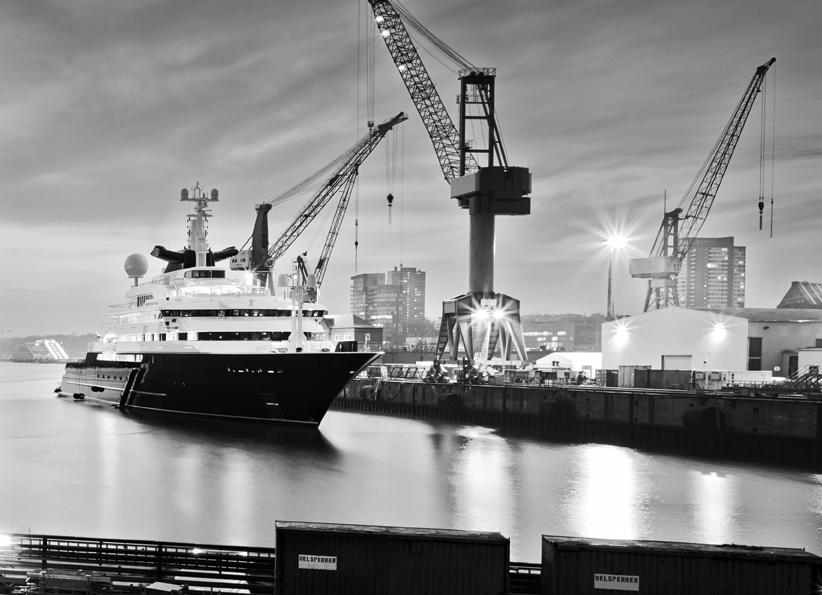
Blaine Watson tries to never get rid of his crew during this time — especially if they’re good. He also believes time spent in the yard is valuable for crewmembers.
“That’s time for them to learn how to paint, how to fix stuff, how to build stuff, because when we leave the dock and we’re out there, they need to fix it,” Watson said. “It also tapers up because the deckhand might not have the knowledge the bosun might, so now it’s time to teach the deckhand to do these kinds of things. I look at it as a training exercise for the crew.”
Watson mentions that chefs can also appreciate refits, as cooking for crew, recouping, and studying new recipes away from the busyness of charter is a big morale booster and continuity generator for everyone on board. Sometimes layoffs are out of Watson’s control during a refit. In those cases, he tells the affected crewmembers how long their yard period is in hopes of being able to hire them back afterward.
Although anything can change during a refit, having a set plan is crucial for refit yards. Alberto Perrone Da Zara, sales director of yacht refit for Lürssen Yacht Refit and Services, jokes that he wishes the refit life was like a perfect world — instead, you must always be ready for exceptions.
“You have to think of us as surgeons. There are only a few people that have the
hands on the body of the patient, but you need to make sure that everybody who’s behind you operates equally quickly,” Perrone Da Zara said. “In order to make everything fit in the allowed/contractual months, it’s really an exercise of flexibility.”
Perrone Da Zara explains that although a vessel might come in with a plan to get a “classic” number of jobs done during a refit, it can all change once the Lürssen team steps on board. Lürssen’s team can sometimes find many other tech situations that need to be addressed, making flexibility not only something refit yards must be ready for, but also owners, captains, and crew.
While all participating parties must show flexibility, Poole and Tookey both agree that sticking to the schedule is an expectation they always have with refit yards. A positive attitude towards completing the refit and great amenities are a plus, but time is of the essence.
“Time is your most valuable asset — stick to your timescale; stick to your word,” Poole said. “You want to be out the yard the time you’re planning to be out the yard and ready to go.”
Although the area you complete your refit can largely depend on where you are in the world when you need it, sometimes there is a choice to be made between American or
international refits. For Poole, it’s a simple decision to make.
“If you’ve got an American boat, if you’ve got a Trinity, do your refit [in the United States of America]. If you’re on a European boat, do your refit there,” Poole said. “It’s a lot easier to work on a metric boat in a metric country and an imperial boat in an imperial country.”
Something Watson prefers about refits in the U.S. is the control over which subcontractors he hires. Although he clarifies this isn’t across the board, his experience has indicated that the subcontractors he worked with in Europe were those that the yard brought in. Long-standing relationships between the subcontractors and the yard benefit the refit process, but Watson prefers a wider pool of subcontractors.
“Here in the United States, especially in Florida, you have a lot of control,” Watson said. “If I’m having an issue with a contractor, I can say, ‘You need to resolve this now,’ and I have direct contact with that. If it becomes an issue, I can say, ‘Well, I’m going to use another contractor if you don’t,’ and generally speaking, they’ll sort it out.”
Dave Hole agrees with Watson, calling Fort Lauderdale a central hub for multiple resources. Hole explains that the number of estimates he can get for a yacht in Fort Lauderdale in a short period just shows how many different resources there are for the yachting community in one place.
Perrone Da Zara describes the number of subcontractors that Lürssen has to offer as similar to Fort Lauderdale’s offerings. Due to the amount of work Lürssen has between Bremen, Hamburg, and Rendsburg, many contractors stay within the area, allowing owners and captains to choose from a large pool. One key difference for Perrone Da Zara, however, is the number and greatness of artisans that Europe has to offer compared to the U.S. Regretfully Lürssen also suffers from the lingering danger of loss of traditional boatbuilding trades, but they still manage.
While the U.S. and international refit sites both have pros and cons, all captains and industry professionals agree that shopping different yards to find the best fit is imperative to a successful yard period. Pairing the proper preparation, staffing, and location are just some factors that lead to a successful refit in the industry’s current state. ‹
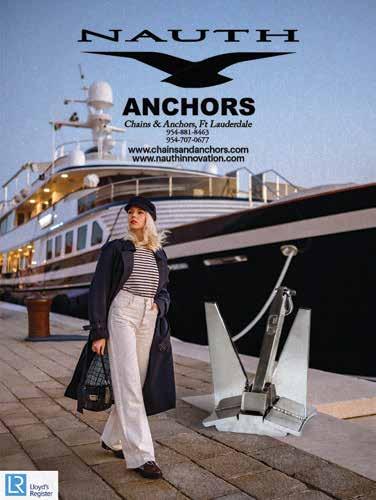

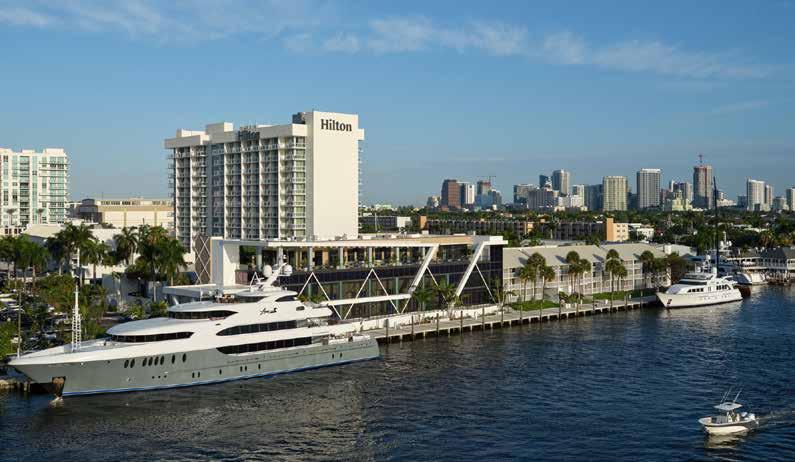




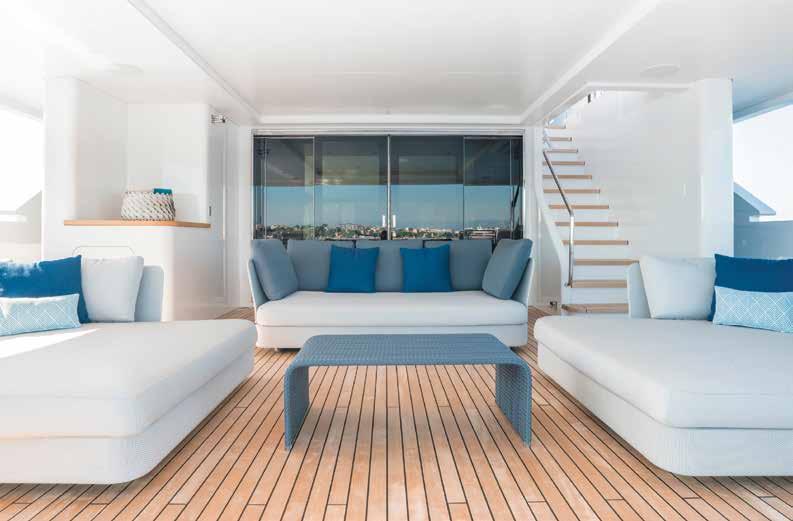
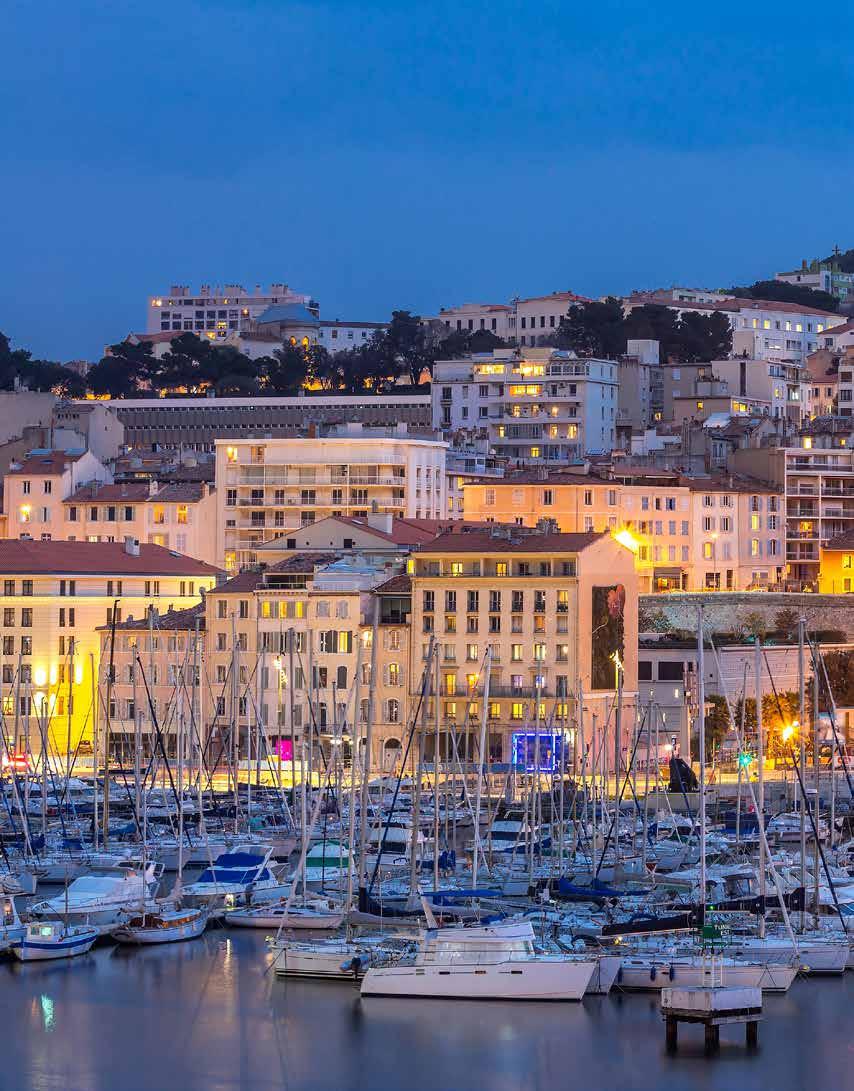


Last July, Paris announced its 2024 Olympic Games celebration sites, including Champions Park, which faces the iconic Eiffel Tower. It will be a meeting location for global sports fans to gather and celebrate athletes’ achievements and medals.
This jam-packed itinerary highlights iconic landmarks and some of the city’s lesser-known locations. Take a break between Olympic events and get to know the city of light like a local. Monumental architectural sights you should not miss include the Notre-Dame Cathedral, the Arc de Triomphe, and the Basilique du Sacré-Cœur de Montmartre.
The Eiffel Tower will be a key venue for the Paris 2024 Games. Meet up there and enjoy watching beach volleyball and blind football events. Amble around the manicured lawns of this magnificent site — Paris’ most iconic public gardens.
The Seine has undergone a significant cleanup, and it is highly anticipated to host the Olympic Games’ opening ceremonies and major swimming events. While it is looking likely, the final go-ahead will hinge entirely on the rainfall leading up to the event and the water’s health.
Avoid the dense foot traffic and cornerbending queues around Leonardo da Vinci’s “Mona Lisa” at Le Louvre and visit two lesser-known contemporary museums near the Eiffel Tower.
The first is the Musée d’Art Moderne, which pays tribute to the avant-gardistes. The second, the Palais de Tokyo, combines installations, videos, and new-age icons for a fully immersive contemporary art experience.
If you are interested in buying art directly from undiscovered artists, take a step away from the well-trodden paths and visit a fascinating “fringe” art scene in Paris at 59 Rivoli — once an artists’ squat dating back to the 1800s. Today, 59 Rivoli has been lovingly restored into spacious modern studios.
Two of the city’s best boulangeries to stock up on golden, flaky cones of buttery deliciousness are Mamiche and Boulangerie Utopie. Like all great boulangeries, expect fast-moving but long queues.
Visit The Marché des Enfants Rouges, the oldest food market in Paris, and pick up lunch in a relaxed and convivial atmosphere while choosing from a wide variety of multicultural foods in a rainbow of colors and fragrant aromas. Chez Taeko offers authentic Japanese cuisine in a French market setting, and you can dine on the chairs scattered around the stall. Chez Alain Miam Miam sells mammoth-sized sarnies loaded with fromage and grilled on a crepe pan. You can find this foodie secret tucked off the busy Rue de Bretagne.
Shopping in Paris is optional, but it's a shame not to peruse the boutiques at Galeries Lafayette Paris Haussmann, where its shoppers make dressing chic an art form. Its impressive glass Coupole, rising to a height of 140 feet, is visible from across the city. The pearl of St. Germain, Le Bon Marche, is an art deco one-stop department store with an array of high and contemporary fashion for women and men, a well-curated bookshop, homeware, beauty and cosmetics, and the fine Grande Epicerie food hall.

Boutique de Cara is a consignment store that is a conscience-free, ecofriendly way of shopping — with moth hole-free clothes in an artfully curated boutique off Rue de Turenne in the Marais. Rails hung with a mix of classic styles and more avant-garde pieces from a range of eras include designer chic, rare Chanel jackets, long, stripy Celine knits, Chloé frilly-sleeved shirts, and funky vintage Gucci boots.
Paris offers lively nightlife in the Latin Quarter. Catch a show, dinner, and Champagne in Montmartre, and watch world-famous French Cancan at the legendary Moulin Rouge or take in The Crazy Horse cabaret show. Both offer titillating entertainment, feathers, sequins, and rhinestones.

Paris is famous for its long-thriving jazz scene; after all, Edith Piaf was born here. Paris boasts several iconic jazz clubs, many set in underground boltholes. Le Caveau de la Huchette jazz club is a stone’s throw from Notre-Dame. It’s not a bottomsglued-to-chairs affair, but a swinging venue to get footloose. Le Caveau des Oubliette, in a former medieval dungeon, is bursting with atmosphere. Other popular jazz haunts include La Bellevilloise, Sunset/Sunside, The Bal Blomet, Péniche Marcounet (a jazz-on-water experience), and Mon Coeur Belleville.
TICKETS AND HOSPITALITY PACKAGES FOR THE SAILING EVENTS AT THE PARIS 2024 OLYMPIC GAMES ARE AVAILABLE THROUGH THE PARIS 2024 TICKET PORTAL. FOR FURTHER DETAILS ON THE GAMES SCHEDULE, VISIT THE OLYMPICS
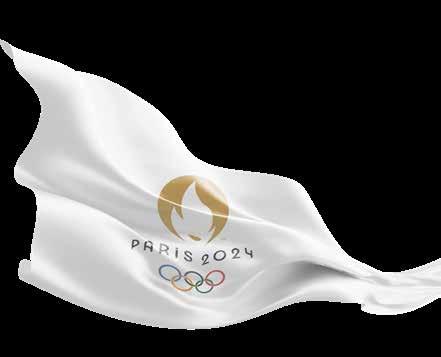
 CHAMP DE MARS IN PARIS
FRENCH CANCAN AT THE MOULIN ROUGE
OVERVIEW OF PARIS
CHAMP DE MARS IN PARIS
FRENCH CANCAN AT THE MOULIN ROUGE
OVERVIEW OF PARIS

While the main event will be in Paris, the Rugby Sevens competition will take place in Monaco from June 21–23, and the Olympic World Sailing venue is located in Marseille between two of the most important attractions in the city — the Basilique NotreDame de la Garde and Prado Beach. Both events will take place in Southern France, where you can combine exploring the rich and fascinating history of the Riviera in the Côte d’Azur — the go-to spot for chic yachting.
The French Riviera has everything from chi-chi wood-decked beach clubs overlooking the ocean to lively nightlife, stretches of serene white-sand beaches, jungle pine forests, cliff-jumping, and vibrant, flame-hued sunsets. With Monaco, Antibes, and Cannes all within a short distance of each other, you won’t be stuck for choice. All locations are a half-day trip from Paris via train, too.
Booking requests are required for a mooring for your boat, and during the 2024 summer season, the ports will be swarming with Olympic tourists, so get well organized in advance to avoid disappointment.
Palm-fringed Cannes is a beautiful place to relax, and La Croisette runs the length of the seafront, which is ideal for drinks, lunch, beach clubs, and casinos. Explore the charming historic quarter of Le Suquet, admire the view from the church of Notre-Dame d’Esperance, or peruse the boutiques on the Rue d’Antibes. It’s worth taking a day trip to Île Sainte-Marguerite, a blip of an island characterized by its towering eucalypt forest. It is the largest of the two Lérins, just north of Île SaintHonorat and once famously home to a prison that housed the Man in the Iron Mask, a prisoner King Louis XIV kept unidentified for his 11-year confinement. Walk around the historic battlements and marvel at Fort Royal Museum, north of the island.
Climb all 109 steps to reach the Musée de la Castre, set within a medieval castle once home to the monks of Lérins.
Towering above the city, it provides amazing 360 views of Cannes and beyond. Marvel at the medieval artifacts, Asian instruments, and quirky paintings.
The Port of Cannes (Vieux Port) Marina, part of the Riviera Ports network and situated near Cannes’ old town, houses 650 berths for yachts up to 215 feet (65 meters) in size. Also, in Cannes is Port de la Pointe Croisette Marina, a smaller port for sailing boats with 237 berths.
Heading south around the Cap d’Antibes brings you to another port in the French Riviera worth looking into berthing your yacht — the Port Camille Rayon. There are moorings for 500 boats with a maximum length of 245 feet (75 meters).
The gilded home of superyachts and the royal-crested principality, Monaco is a playground and haven for the rich
and famous. The marble-clad Casino de Monte-Carlo is a must-see and the set location for the famous Bond film “Casino Royale.” Even if you are not interested in playing a game, wander around the lobby and take in the iconic chandeliers, gilt, and impressive paintings in a truly opulent building that exudes glamor.
Plage Mala is a secluded pebble beach nestled into a cave with a dramatic cliffjumping backdrop. The beach is only accessible by foot or via an exclusive taxi boat. It’s an excellent place for snorkeling too. Paloma Beach is one of the most exclusive beaches in Monaco, graced by visits from Coco Chanel, Elton John, and Tom Cruise. The menu consists of refined Mediterranean cuisine and fresh seafood.
You will find the jet-set crowd at Nikki Beach relaxing in rooftop-high luxury at the Fairmont Monte-Carlo hotel, an international luxury beach club providing breathtaking views of the Mediterranean. Also worth visiting is La Note Bleue, a musically-themed restaurant and

beach club that is also a tribute to the saxophonist Barney Wilsem. The iconic perch, Hotel du Cap-Eden-Roc, is the epitome of glamor in the Côte d’Azur and well worth visiting for a spot of lunch. The world-famous ’60s photographer Aaron Slims often took photos of attractive people doing watersports and lounging stylishly here.
The largest marina in the center of Monaco and the only deep-water port on the French Riviera, Port Hercule has 760 berths and is the most exclusive international yachting hub in the Mediterranean. Don’t be surprised if you struggle with availability; you might be better off going a little farther afield. Yacht Club Monaco, with 26 superyacht berths from 28 to 60 meters, has limited availability and is likely to be fully occupied. Bookings can be made online.
espaceclient.ports-monaco.com/en/ yacht-club-monaco.mc/en/ycm-marina-en/
Antibes’ Bay of Billionaires gets overcrowded during peak times, so this beach is worth a visit only if you are up at dawn. The winding paths provide beautiful views of the calm, clear beach.
Port Vauban and its 1,500 berths, modernized infrastructure, and capacity to accommodate boats up to 525 feet (160 meters) make it another superyacht hub. There are direct trains to Paris from Antibes, with direct fast trains taking five hours and 20 minutes.
Aside from Monaco, Antibes, and Cannes, other unmissable seaside resorts in Southern France include Cap-d’Ail, Antibes, Beaulieu-sur-Mer, Saint-JeanCap-Ferrat, Villefranche-sur-Mer, Juanles-Pins, and Theoule-sur-Mer.
leportvauban.com/en/book/
 PORT VAUBAN CASINO DE MONTE-CARLO
PORT VAUBAN CASINO DE MONTE-CARLO
April 2–14
Miami Beach Pride
MIAMI BEACH, FLORIDA
Bringing together members of the LGBTQ+ community, their friends, allies, and supporters in celebration of the unique spirit and culture of the community.
miamibeachpride.com
April 5–7
Tortuga Music Festival
FORT LAUDERDALE, FLORIDA
Rock the Ocean’s Tortuga Music Festival brings music fans together to increase public awareness about ocean issues and to support scientific research, education, and ocean conservation initiatives.
tortugamusicfestival.com
April 5–14
Miami Film Festival
MIAMI, FLORIDA
A world-class platform for international, American, and IberoAmerican films showcasing the work of the world’s best emerging and established filmmakers to the diverse Miami community.
miamifilmfestival.com
April 12–14
Bay Bridge Boat Show
STEVENSVILLE, MARYLAND
Check out powerboats of all sizes at the show, which is situated on Chesapeake Bay. The show marks the beginning of the boating season.
annapolisboatshows.com
April 12–14 and 19–21
Coachella Valley Music and Arts Festival INDIO, CALIFORNIA
The annual desert festival returns with more than 100 artists performing live over two weekends.
coachella.com

April 13 – May 5
St. Thomas Carnival ST. THOMAS, USVI
An annual celebration with waterfront J’ouvert street dance, bands, children and adult parades and pageants, plus a food fair and carnival village. visitusvi.com
April 14
Deering Seafood Festival MIAMI, FLORIDA
The Deering Estate Foundation hosts chef demos, fresh seafood, live entertainment, and kid’s activities at this annual festival. deeringestate.org/event/deeringseafood-festival
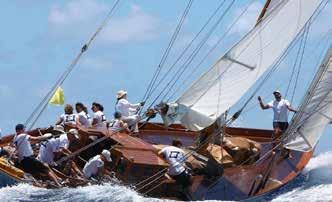
April 17–24
Antigua Classic Yacht Regatta
ANTIGUA YACHT CLUB, ANTIGUA
A combination of serious racing, laid-back Antiguan hospitality, and camaraderie in a relaxed atmosphere from the Antigua Yacht Club. antiguaclassics.com
April 18–21
Newport Beach International Boat Show
NEWPORT BEACH, CALIFORNIA
Back with a new, reimagined show with live entertainment, 200-plus vessels, and 75-plus on-water exhibitions taking place in Lido Marina Village. nbibs.com
April 18 – May 5
St. Maarten Carnival PHILIPSBURG, ST. MAARTEN
The three-week extravaganza beckons people to “Experience Life” the St. Maarten way, with parades, local and international concerts, and culinary delights. sxm-carnival.com
April 19
28th Annual Las Olas Wine & Food Festival
FORT LAUDERDALE, FLORIDA
Enjoy South Florida’s culinary talents and raise money for a good cause as you sip and sample a variety of South Florida’s restaurants, wineries, breweries, and spirits brands. Las Olas, between S.E. 6th and S.E. 11th Avenue. 7:30 – 10:30 p.m. lasolaswff.com
April 19
Port Vauban Crew Party
ANTIBES, FRANCE
Join the annual crew party on the terraces of Bastion Jaume. Hosted with YACHTNEEDS, celebrate a free winter-themed evening with barbecue, pizza, tasting station, beer, wine, and cocktails.
yachtneeds.com
April 22–25
MYBA Charter Show
MARINA MOLO VECCHIO, GENOA
The 34th show edition returns to Genoa, Italy, this year after five years in Barcelona. It has a new show layout and entertainment program, including a Superyacht Chefs’ Competition. mybashow.com
April 24
Triton Expo FORT LAUDERDALE, FLORIDA
The annual Triton Expo at Pier 66 showcases yachting companies as they highlight the products and services available for yacht captains and crew. The event also includes entertainment, food, and drinks. the-triton.com
April 25–28
Palma International Boat Show
MOLL VELL, PALMA
The Palma International Boat Show includes the Palma Superyacht Village, formerly the Superyacht Show, and kicks off the Med season. The show also includes a dedicated Refit and Repair sector. palmainternationalboatshow.com
April 26–28
Annapolis Spring Sailboat Show
ANNAPOLIS, MARYLAND
The show returns to the historic seaport town of Annapolis to showcase new and brokerage boats, including catamarans, monohulls, family cruisers, daysailers, and inflatables. annapolisboatshows.com/springsailboat-show
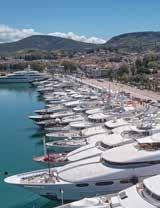
April 27 – May 1
Mediterranean Yacht Show (MEDYS)
NAFPLION, GREECE
Organized by the Greek Yachting Association with the support of the municipality of Nafplion, the upcoming ninth show caters to yachts from 24 meters and above.
mediterraneanyachtshow.gr
May 2–4
Louisiana Gulf Coast Billfish Classic
LOUISIANA REGION
Blue and white marlin, sailfish, yellowfin tuna, and more will be caught in hopes of landing huge prizes.
lgcbc.catchstat.com
May 3–5
Sunfest
WEST PALM BEACH, FLORIDA
Nelly, Billy Idol, Shaggy, and Third Eye Blind are just some of the artists performing along the Intracoastal Waterway. sunfest.com
May 3–5
DC Boat Show
NATIONAL HARBOR, MARYLAND
Sail and power boats make their way to the Potomac River for a weekend getaway full of seminars, vendors, and live music.
dcboatshows.com
May 3–7
TYBA Yacht Charter Show BODRUM, TURKEY
The sixth edition of the charter show invites some of the best charter yachts to the Turkish coast.
tybachartershow.com
May 4–6
Barclays Jersey Boat Show JERSEY, CHANNEL ISLANDS
The award-winning St. Helier Marina and Weighbridge Place host the largest free event in the Channel Islands.
jerseyboatshow.com
May 5
Miami Grand Prix
MIAMI GARDENS, FLORIDA
Formula 1’s Miami Grand Prix returns to the Miami International Autodrome located at the Hard Rock Stadium.
formula1.com/en/racing/2024/ Miami
May 8–11

May 11–12
Fort Lauderdale Air Show FORT LAUDERDALE, FLORIDA
May 20–22
Australian Superyacht, Commercial Marine, and Export Conference
QUEENSLAND, AUSTRALIA
Refit and maintenance shipyards, marine service providers, naval architects and designers, and more tackle key industry issues through lively discussion and informative debates. asmex-conference.com.au
May 20 – June 9
French Open
PARIS, FRANCE
Also known as Roland-Garros, the major tennis tournament is held over two weeks at the Stade Roland Garros. rolandgarros.com
May 22–25
Walker’s Cay Invitational
WALKER’S CAY, BAHAMAS
More than $1,000,000 will be paid out to 50 boats during the fourth annual deep-sea fishing tournament.
walkerscay.com
May 23–26
Sanctuary Cove International Boat Show
BAKER’S BAY GOLF AND OCEAN CLUB, BAHAMAS
Participants will compete in a twoday offshore fishing tournament and a one-day golf tournament. The tournament is limited to the first 30 boats and includes an $8,000 entry fee. bakersbayinvitational.com
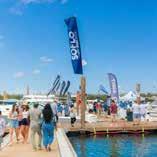
A patriotic celebration of military excellence dazzles South Florida’s airways, creating a unique experience that can be seen on the beach or at a penthouse. fortlauderdaleairshow.com
May 14–25
Cannes Film Festival CANNES, FRANCE
The 77th edition of the prestigious film festival returns with Greta Gerwig taking on the role of jury president. festival-cannes.com
May 19–21
SoFlo Boat Show
MIAMI, FLORIDA
Sandbar season starts here with products and exhibitors for fishing fanatics and island living connoisseurs. sofloboatshow.com
QUEENSLAND, AUSTRALIA
More than 47,000 visitors, 300 exhibitors, and 700 boats make it the biggest show on the Gold Coast.
sanctuarycoveboatshow.com.au
May 24–26
Monaco Grand Prix
CIRCUIT DE MONACO, MONTE CARLO
Formula 1’s Grand Prix takes place over 78 laps of the 3,337-kilometer Circuit de Monaco. formula1.com/en.html
May 29 – June 2
Les Voiles D’Antibes ANTIBES, FRANCE
Legendary, historic, and luxurious yachts come together for the flagship race that marks the opening of the Mediterranean circuit for classic yachts. voilesdantibes.com
Triton was on the scene of the 2024 Miami International Boat Show, snapping pictures of the captains and crew working the show. Yachts of all sizes were at the Feb. 14–18 show, including M/Y Victorious, the largest yacht at 279 feet.
Photos by Carrie Bailey and Kevin Maher
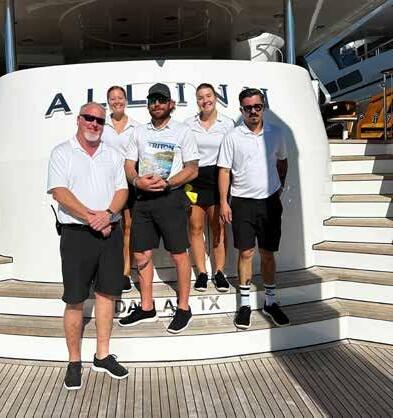
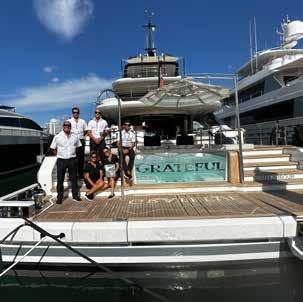

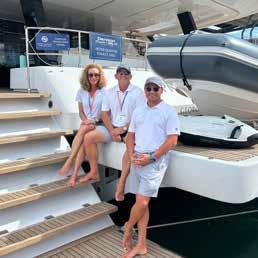
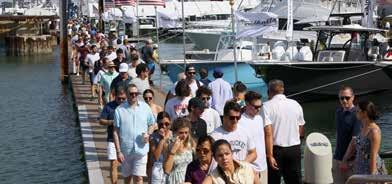
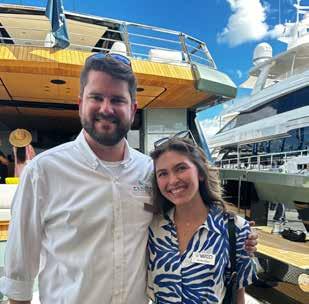
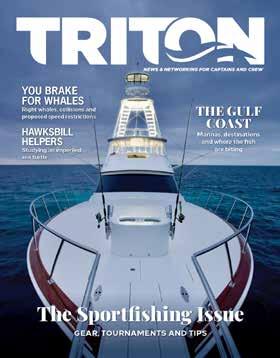
Triton’s annual sportfishing issue is back! From the biggest sportfishing tournaments and vessels to epic crew adventures, our next issue will have it all!
To advertise, contact Edward Ibarra at 954.952.0220 or email sales@tritonnews.com.
For digital marketing and advertising, contact Carrie Bailey at 301-758-3611 or email carrie@tritonnews.com.







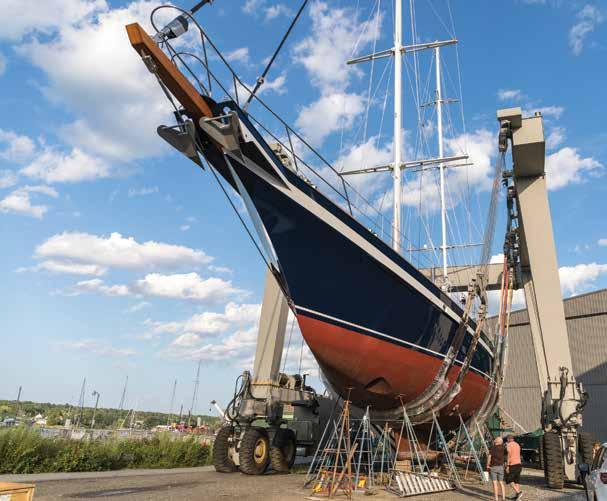 Photo: S/Y ABIDE by Billy Black.
Photo: S/Y ABIDE by Billy Black.
Over 200 captains, crew, and industry professionals attended Triton’s St. Patrick's Day themed Crew, Captains, and Cocktails. Hosted by Total Marine Solutions, guests enjoyed a night of networking, cocktails, bites, and giveaways.
Thank you to our sponsors!
Total Marine Solutions
Concord Marine Electronics
DeAngelo Marine Exhaust
Engineered Yacht Solutions
Lat 26 Degrees
Pinkfish Interiors
XPEL
Yacht Entertainment Solutions
YATCO

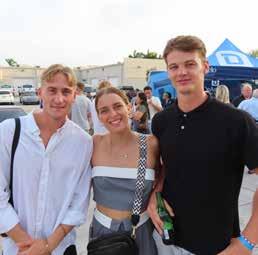
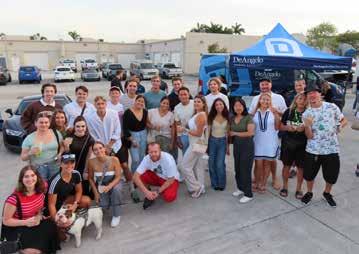



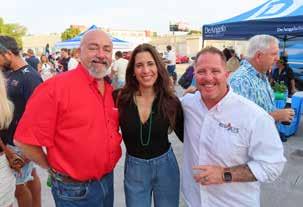


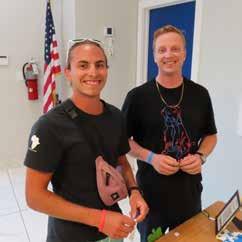







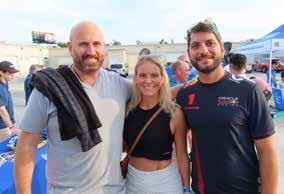




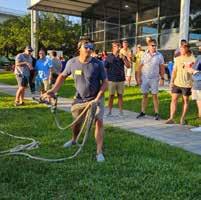
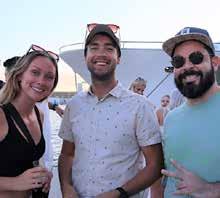
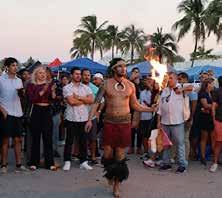

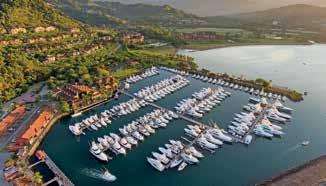






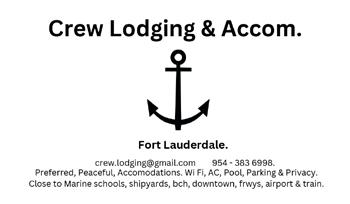
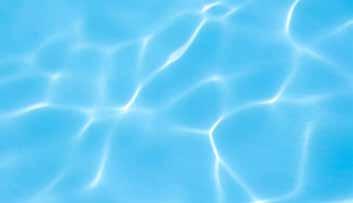
Insured to Work in any Marina or Boatyard “WE DIVE RIGHT IN”
Underwater Yacht Maintenance
Zincs, Monthly Cleaning, Propeller Removal
Recovery of Lost Items, Inspections, Commercial Diving
(954) 964-4804 • email: mrsgdiving@gmail.com www.mrsdiving.com


APPLICABLE WITH GAS/WATER SEPARATOR MUFFLERS
Process: Clean-Exhaust’s dosing pump injects the specifically formulated ecoBrew into the generator/engine raw water cooling system before the spray ring. The ecoBrew emulsifies the diesel particulate matter and soot as it passes through the piping and muffler, much like the agitation action in a washing machine. No back pressure is created in the process. Result: The exhaust gas is expelled with little or no particulate, facilitating cleaner air, cleaner harbors, cleaner oceans, cleaner hulls and boot stripes with no floating sheen or sludge.
One Captain, One Engineer, One Great Idea!... clean-exhaust
Captain Ted Sputh
Tel: +1 317-445-3873
Email: info@clean-exhaust.com
Rodger Stone
Tel: +1 518-378-6546
Email: res2itrmarine@gmail.com
www.clean-exhaust.com
Yacht-Mate Products
Tel: +1 954-527-0112
Email: sales@yachtmate.com
U.S. Pat. #US 20130283768 | Int. Pat. pending #61/638,669
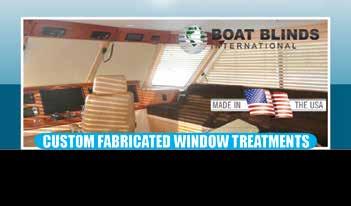

Anita Warwick
Tel: +1 954 763 9787
M/WhatsApp: +1 954 294 2078
Skype: ozanita
Anita@SevenSeasHealth.com
SevenSeasHealth.com

Crew • Expats
Travel & Trip
Cancellation






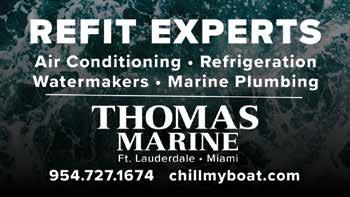





Test your powers of observation! There are five things different in the second photo — can you find them?
Look for answers on Instagram @thetritonnews
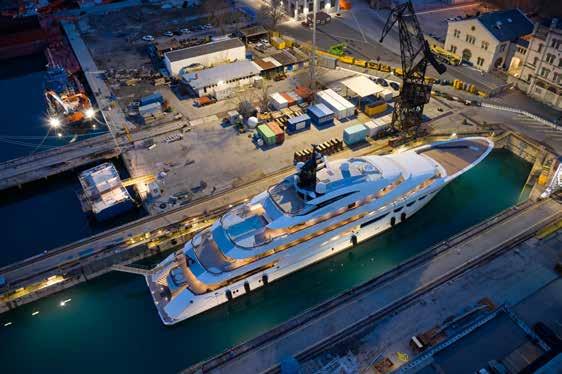
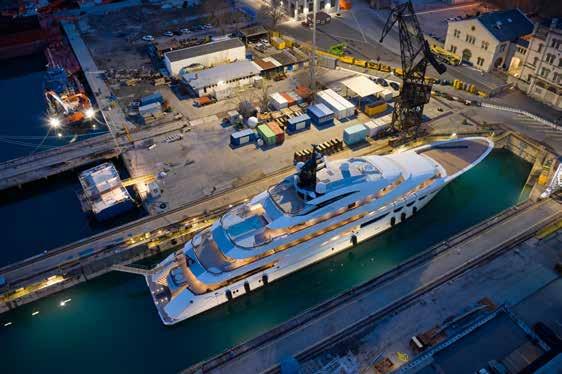
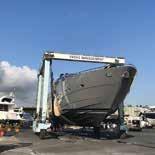



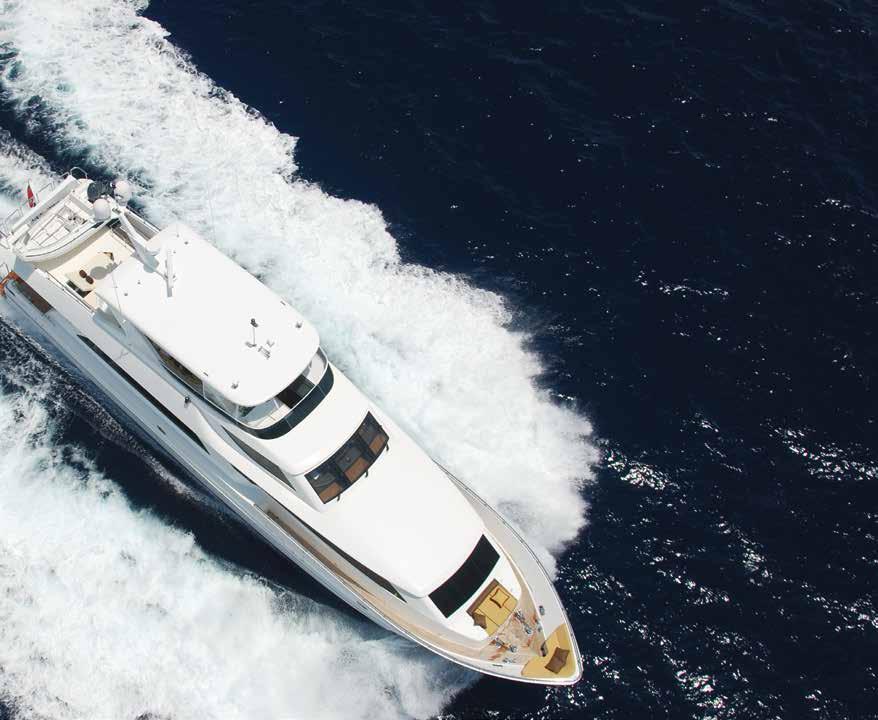
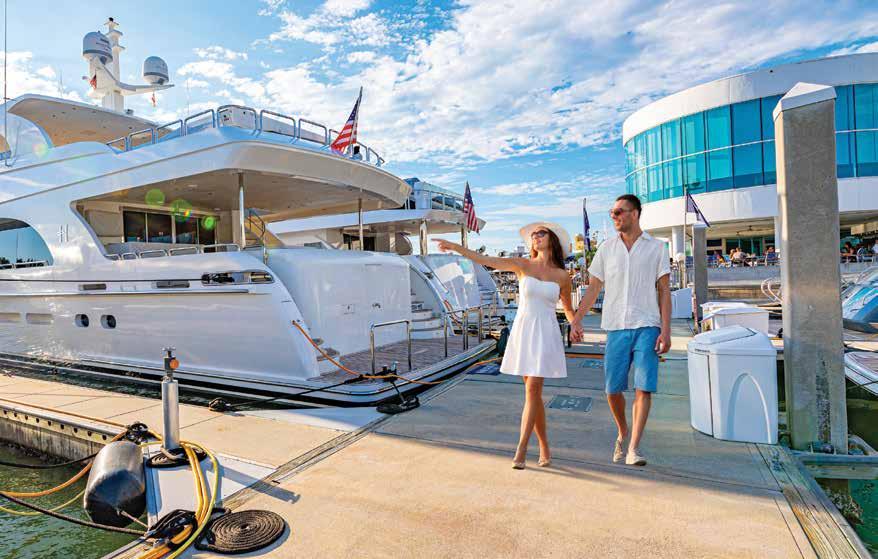
Suntex Marinas are so much more than a place to park your boat. We’ve got it all, including gyms, pools, waterfront restaurants, fully-stocked marine centers, captain’s lounges, a designated FTZ, and more. Enjoying first-class amenities while staying in iconic destinations, you’re sure to have a great time along with a safe, comfortable, and stress-free experience. Our rigorous standards to maintain the marinas in top condition and our highlyresponsive staff are also why Suntex Marinas’ customer satisfaction ratings are among the highest in the hospitality industry.
To learn more about our growing network of more than 50 marinas with an unwavering commitment to worldclass guest services, visit us at suntexCOASTAL.com/TRITON.

